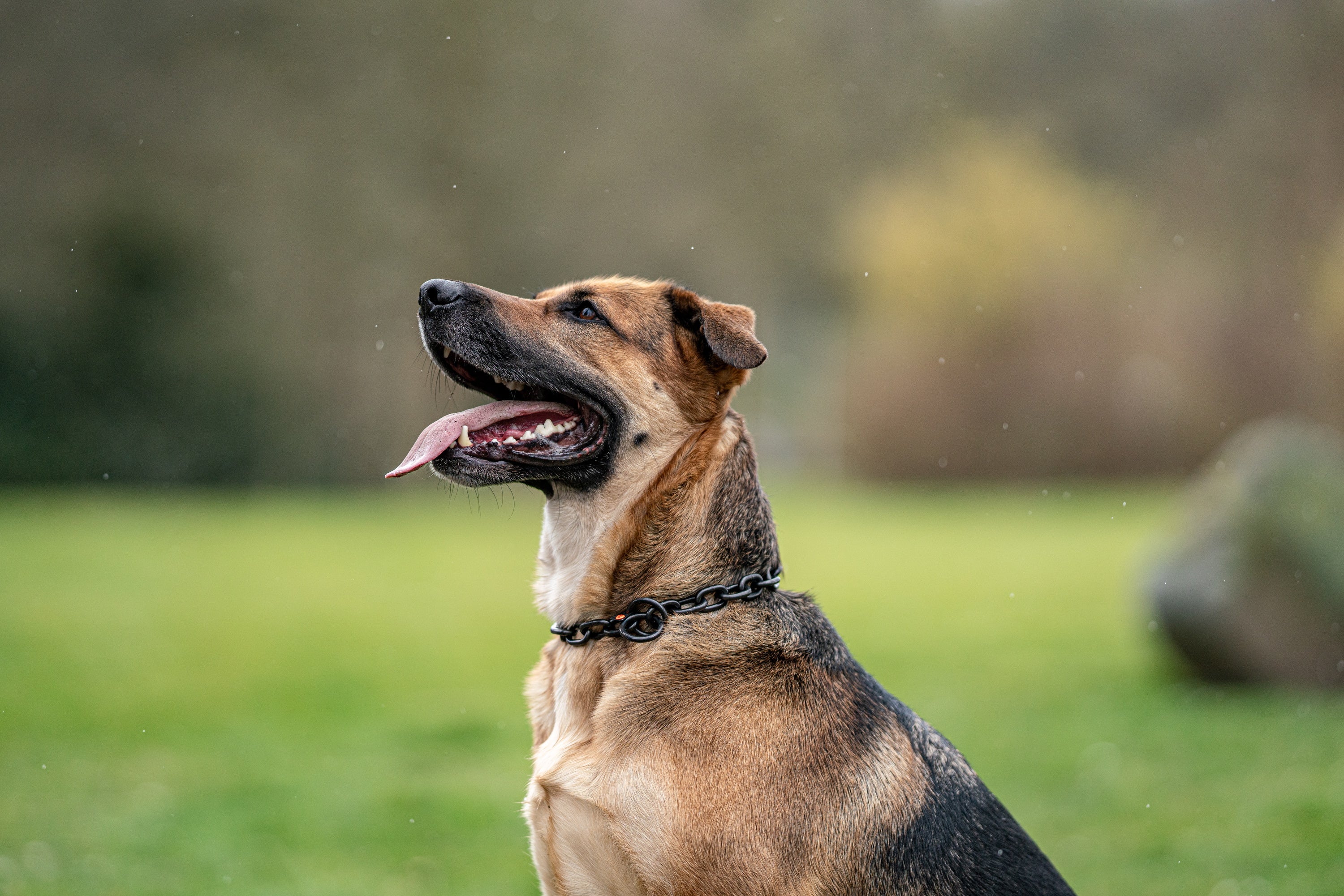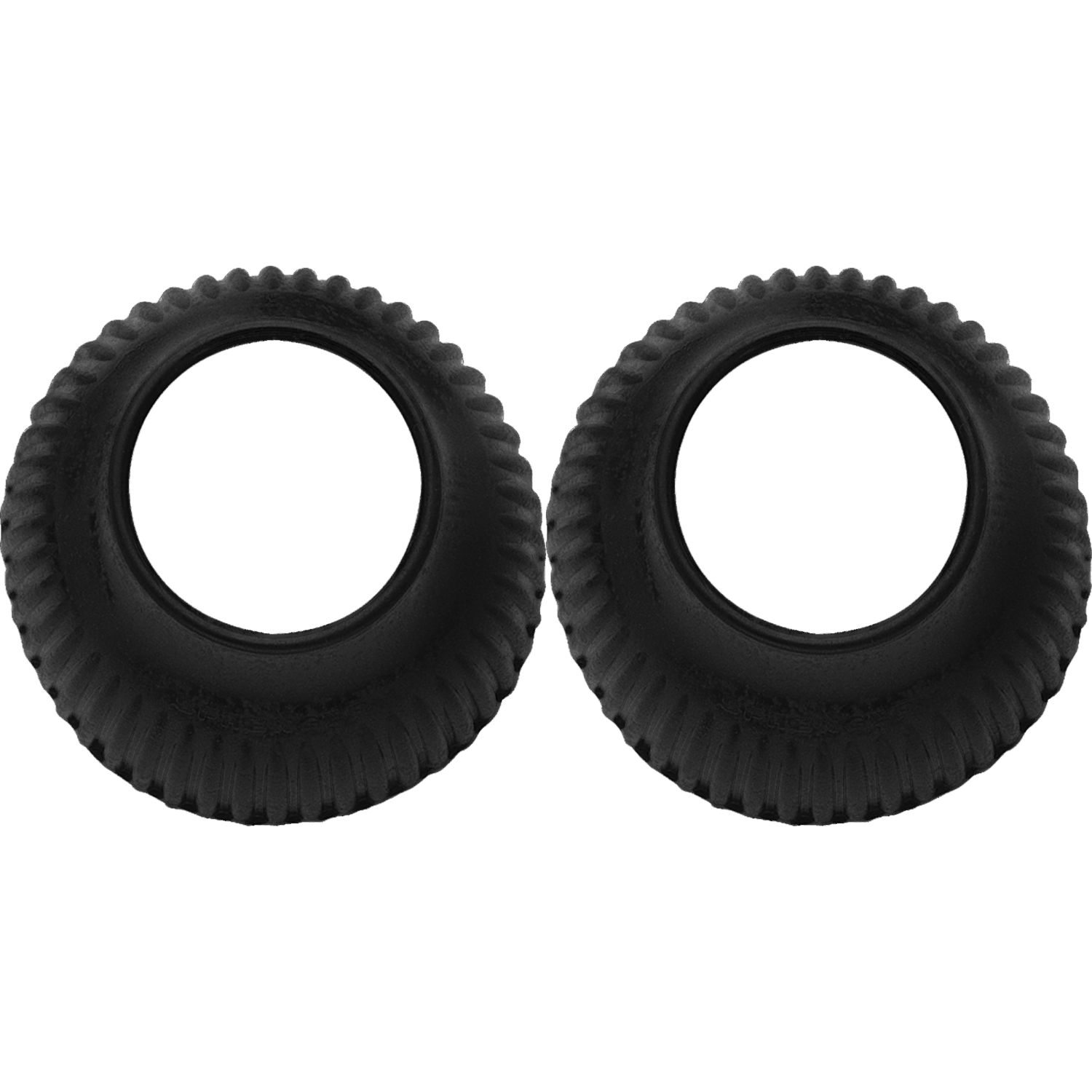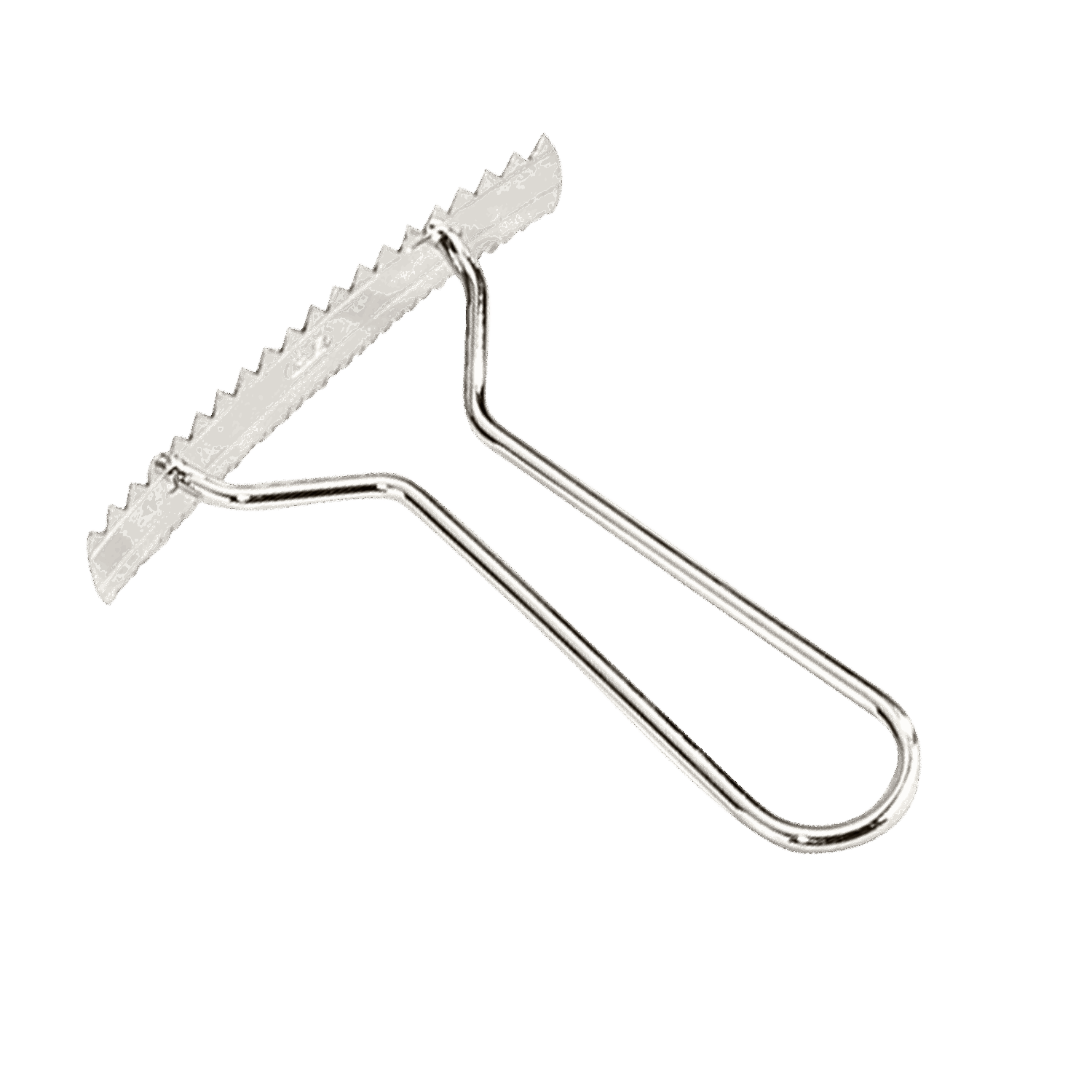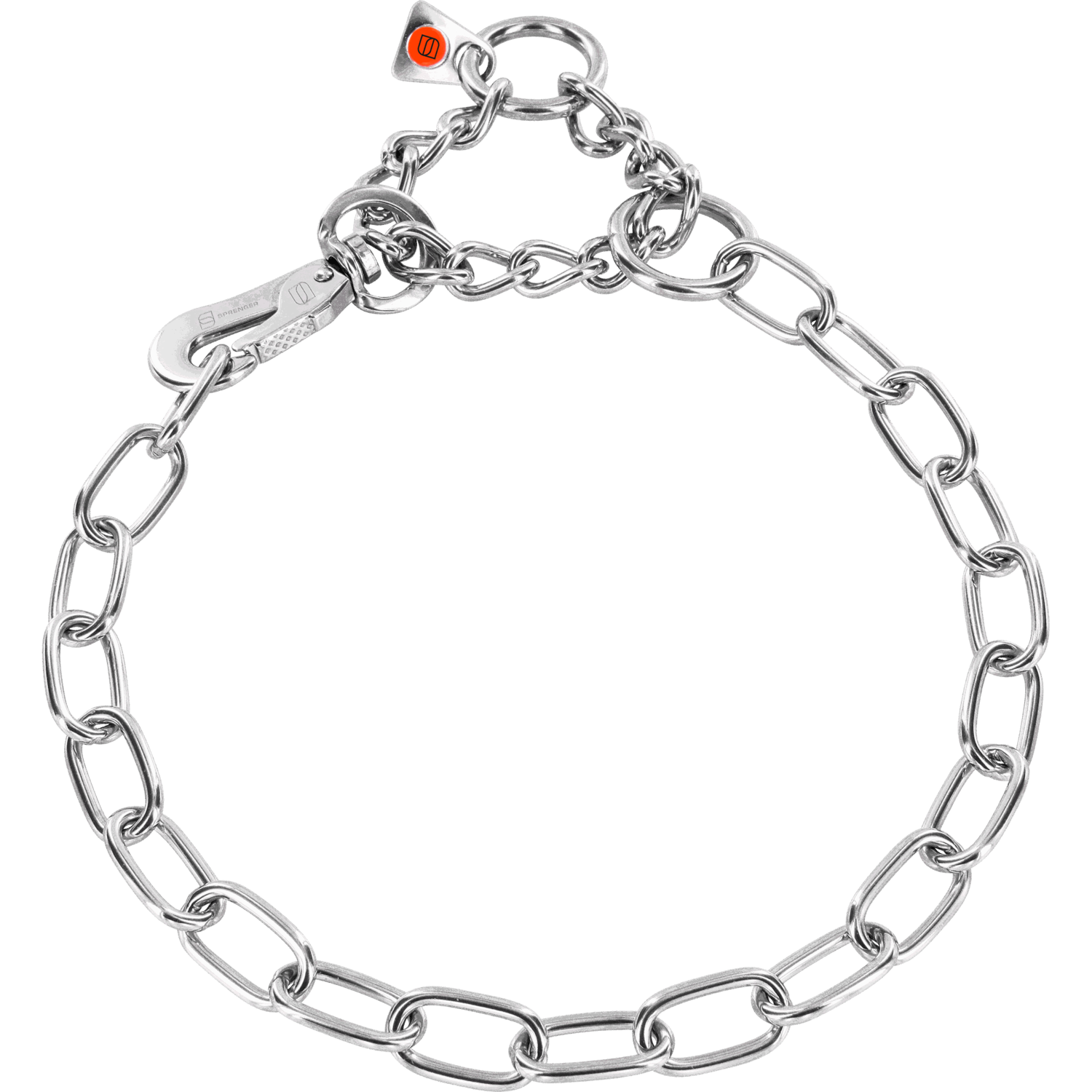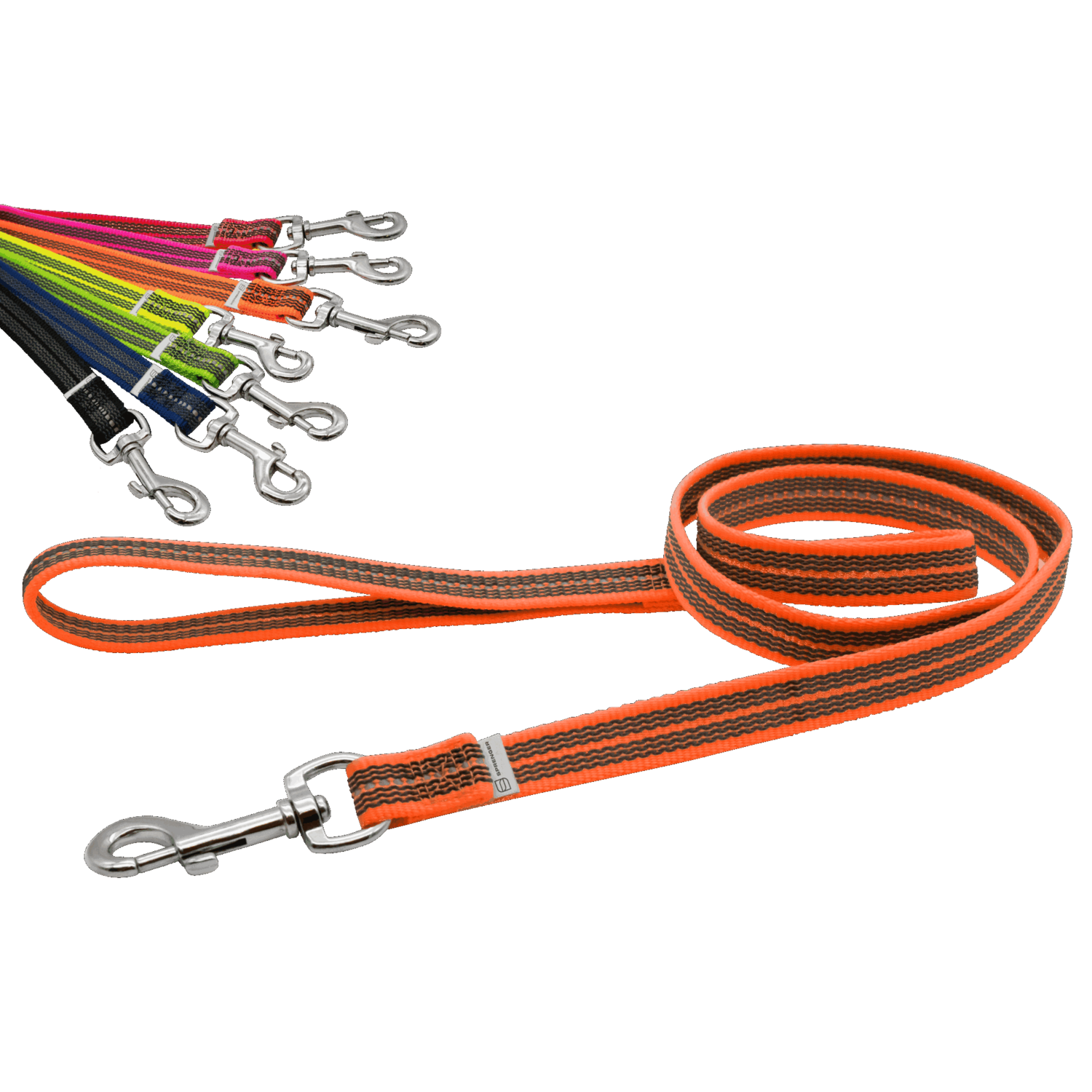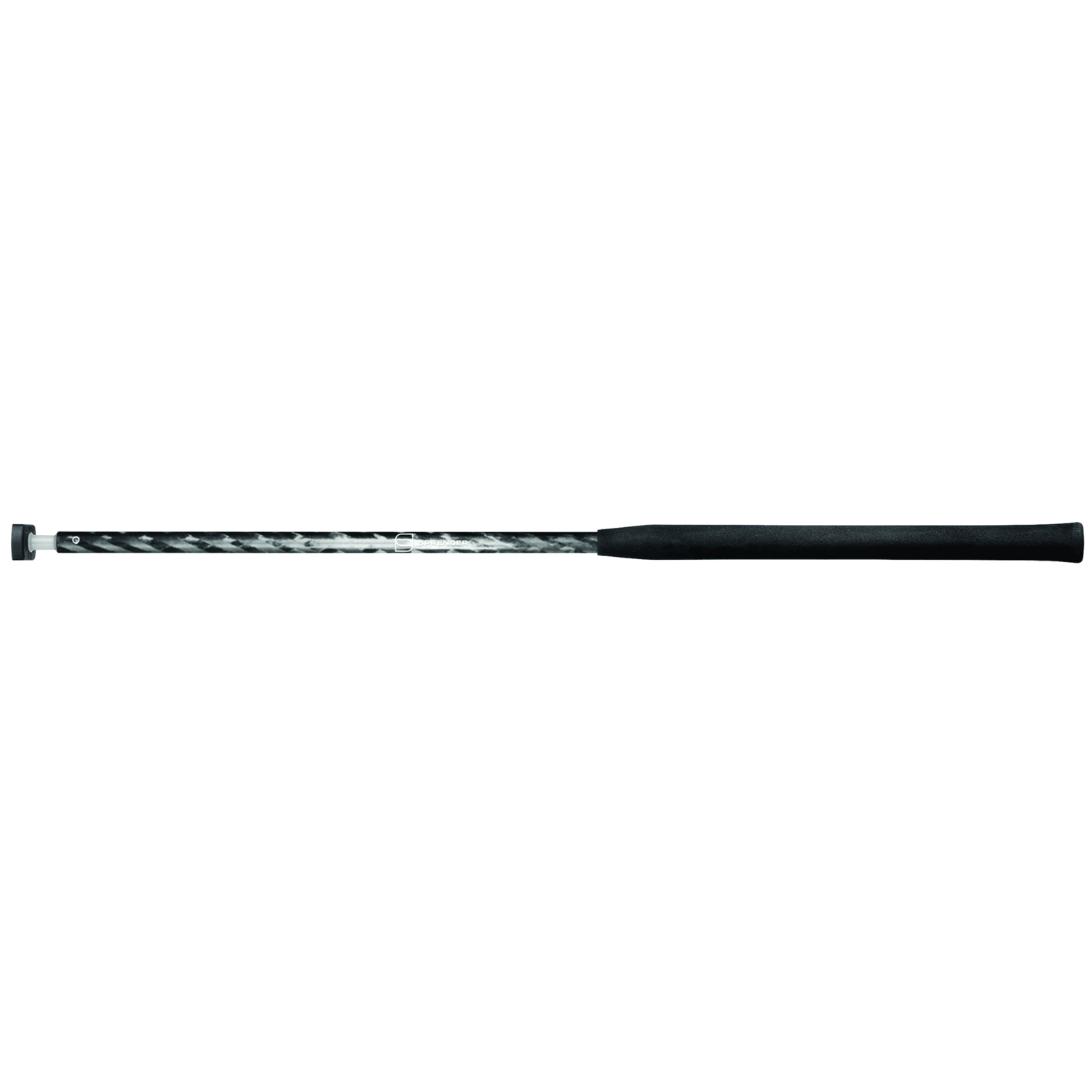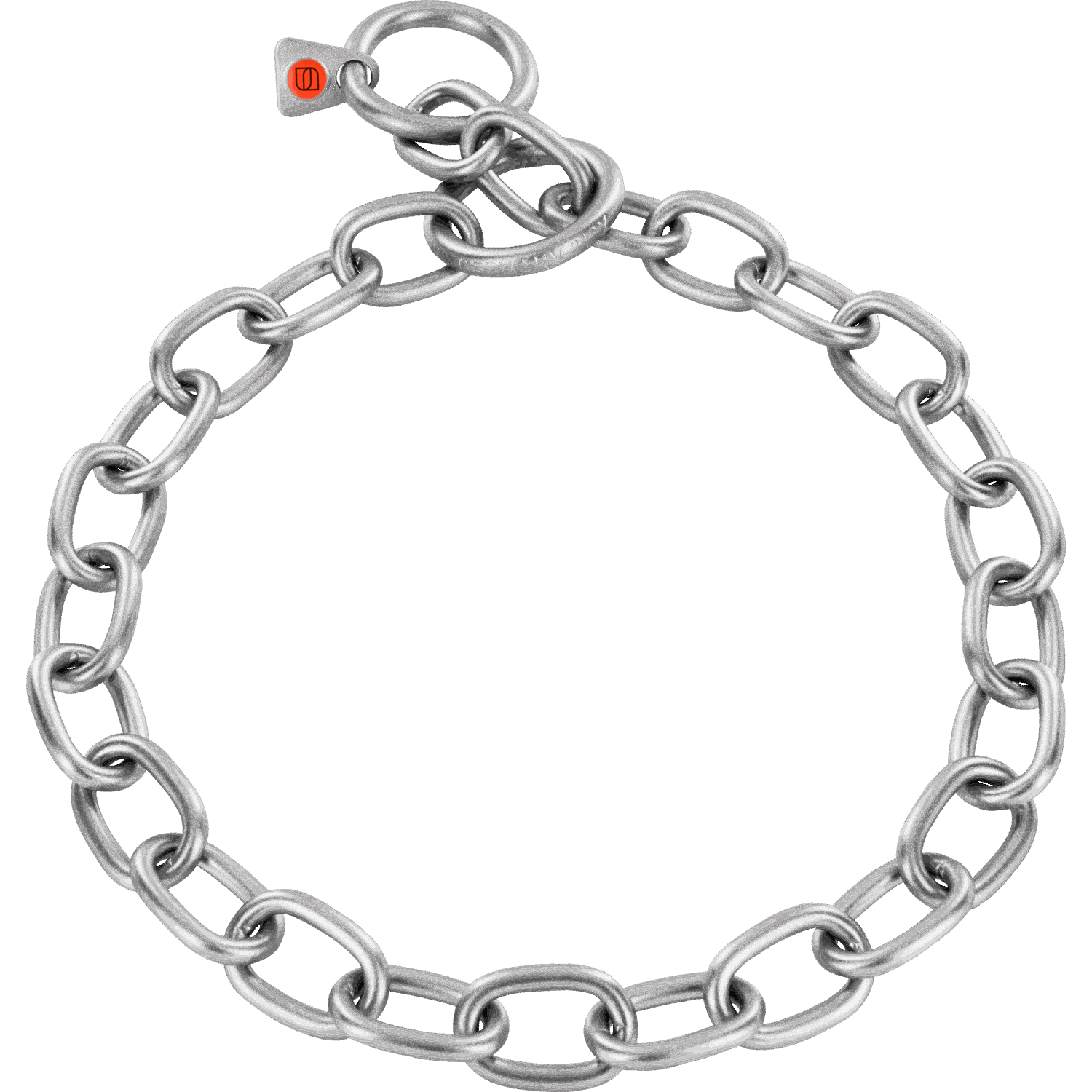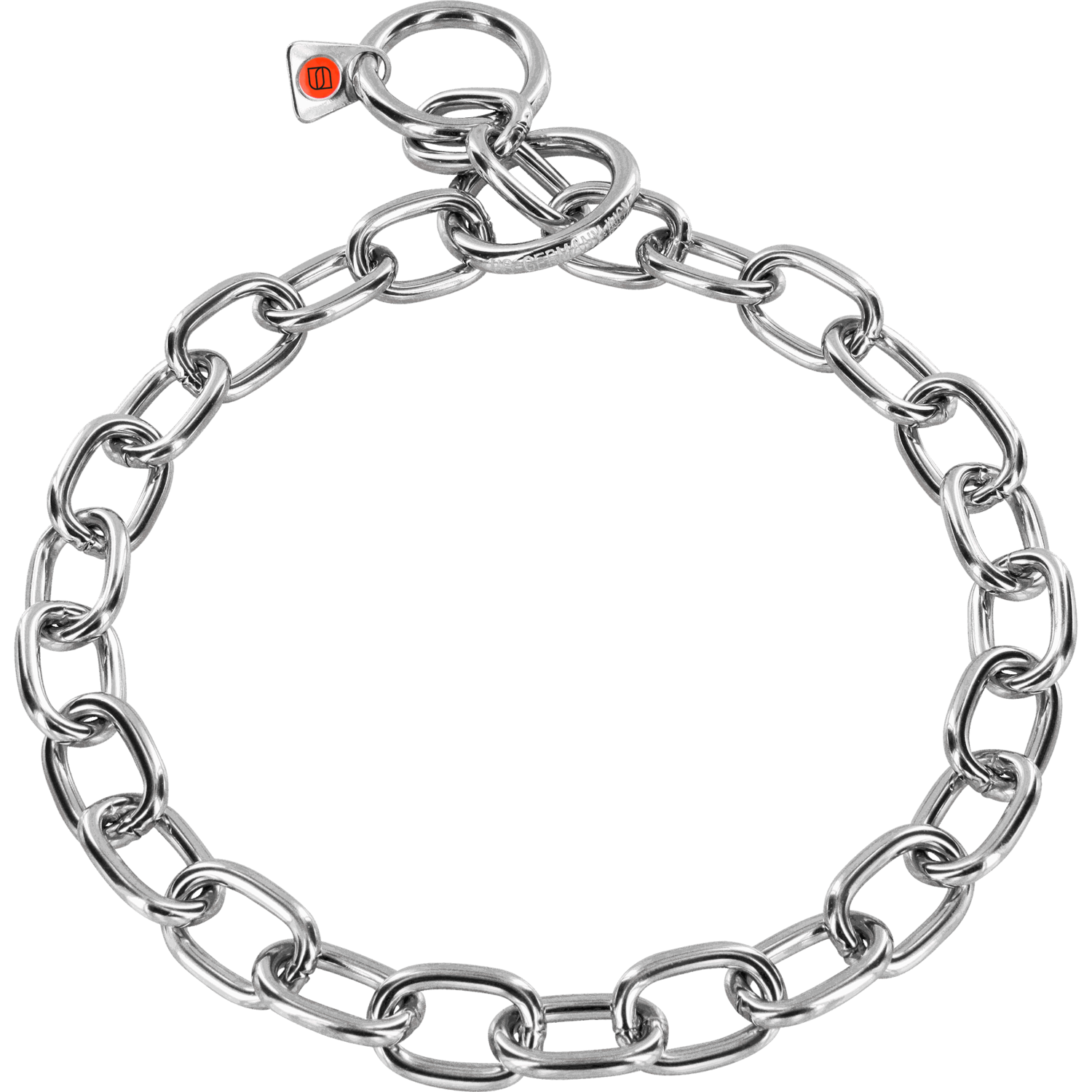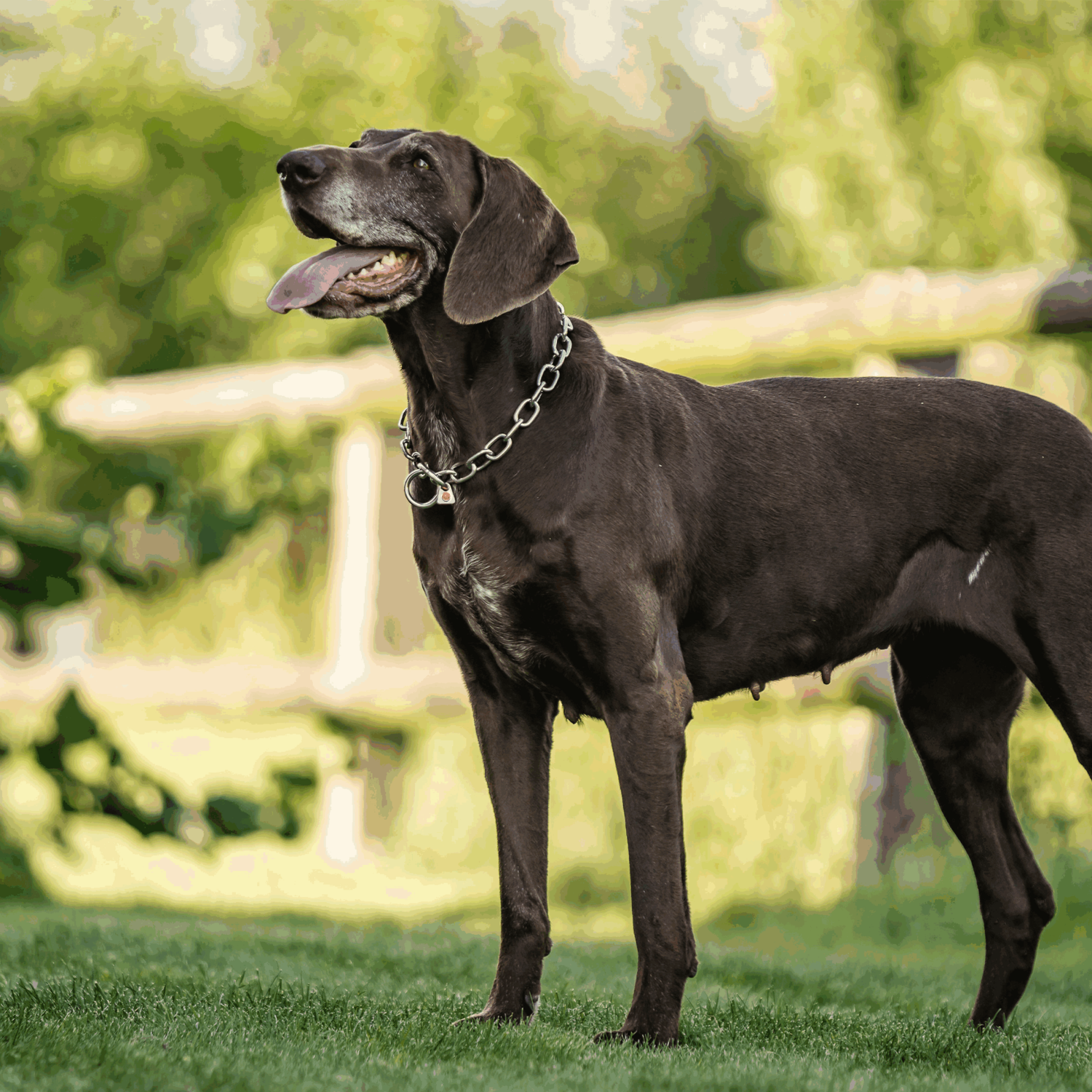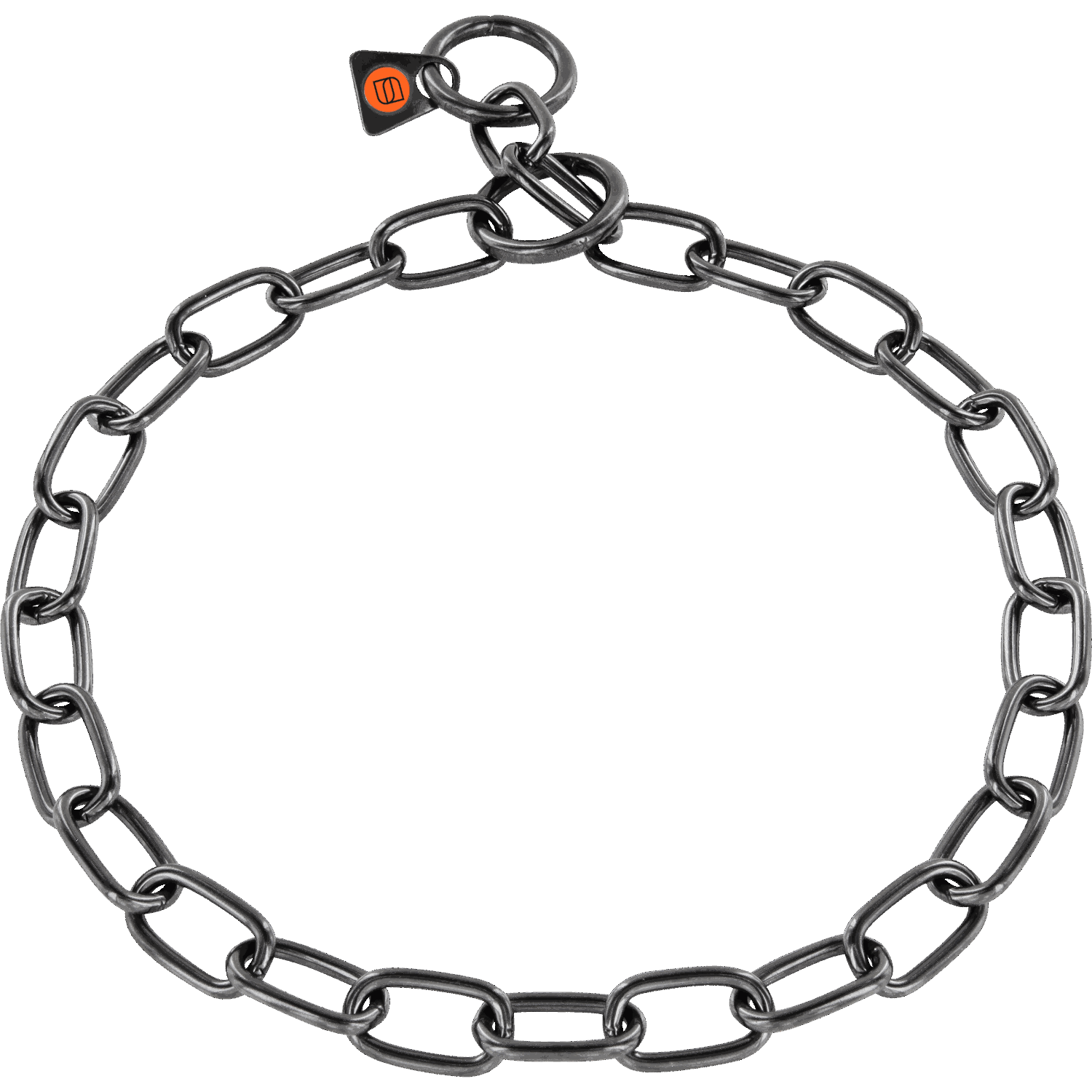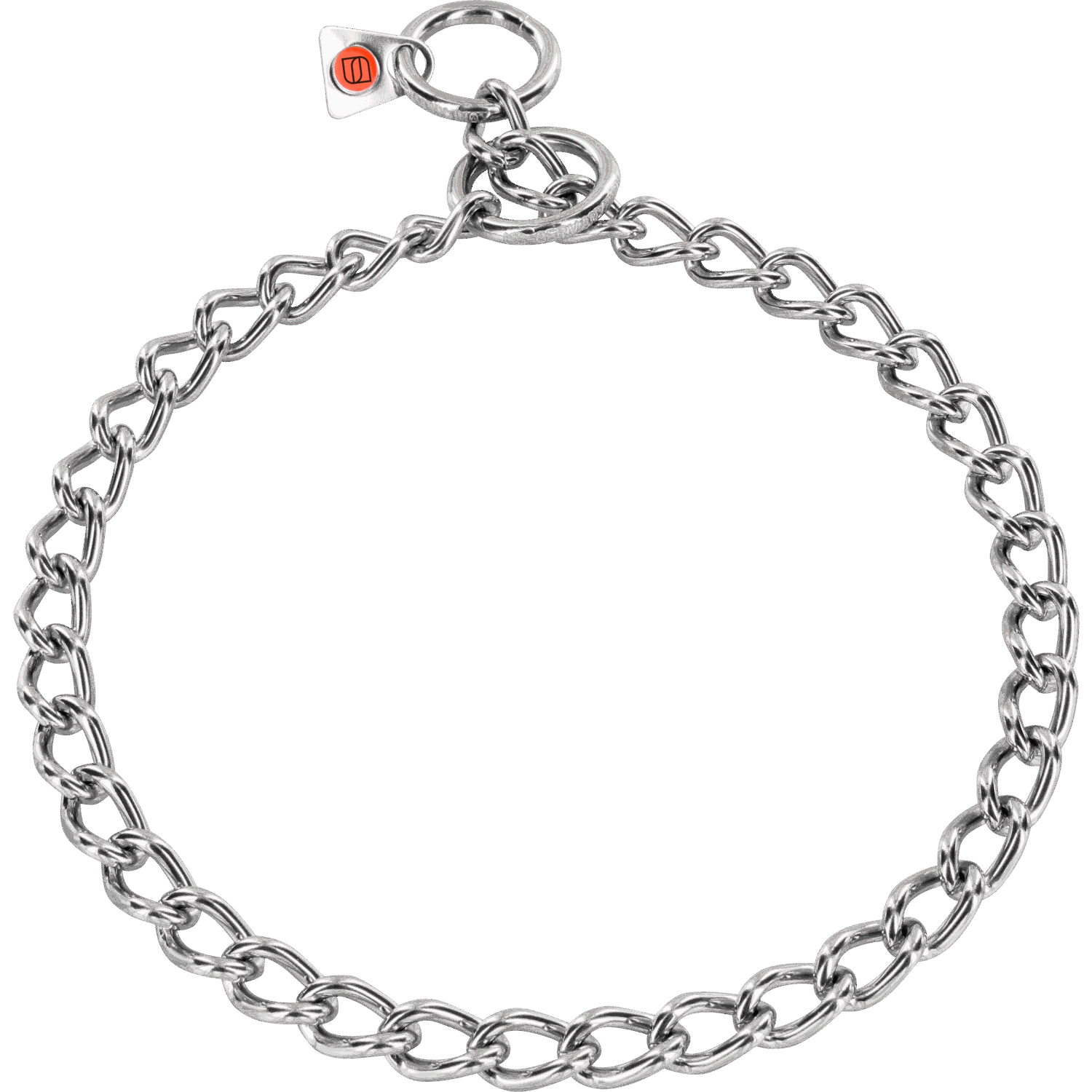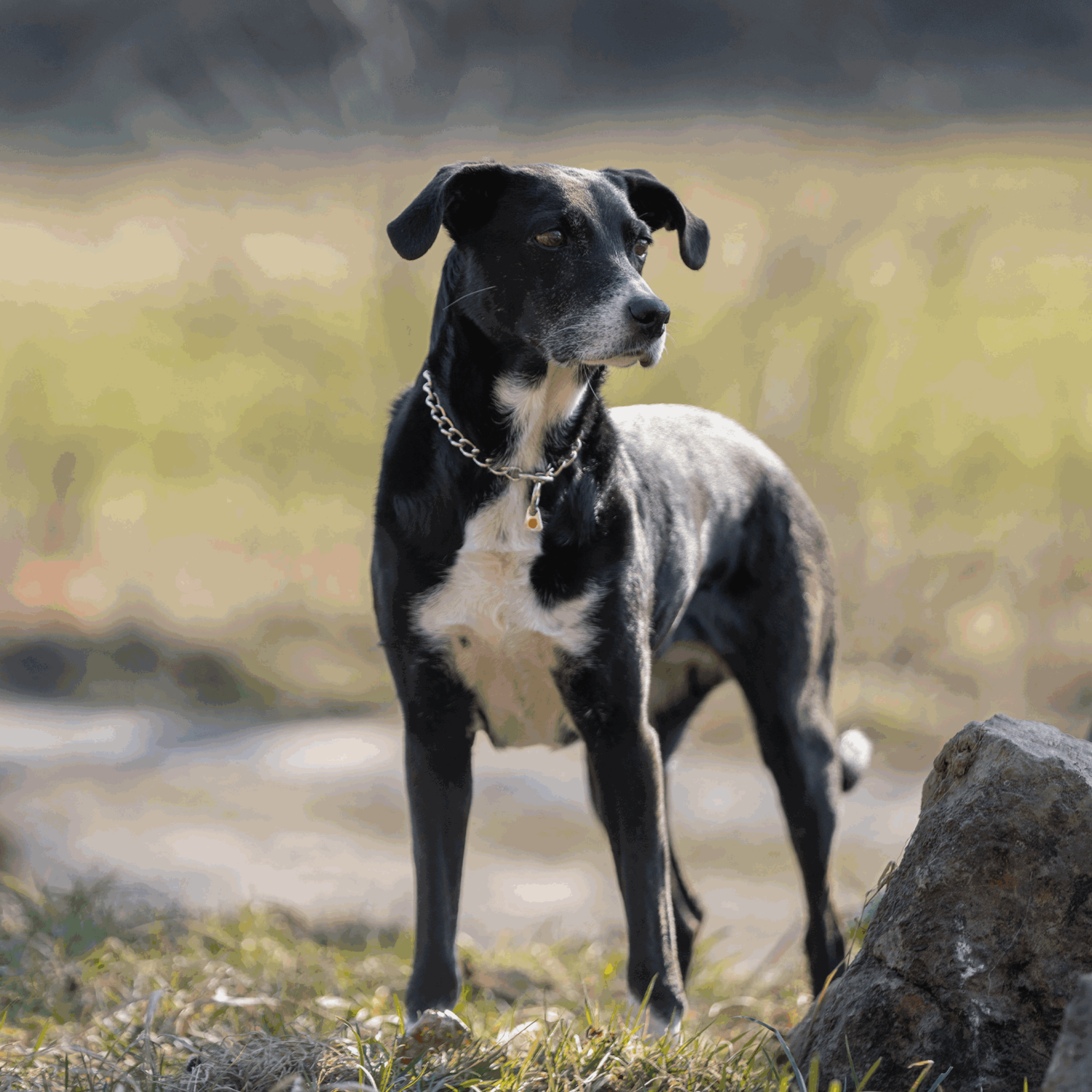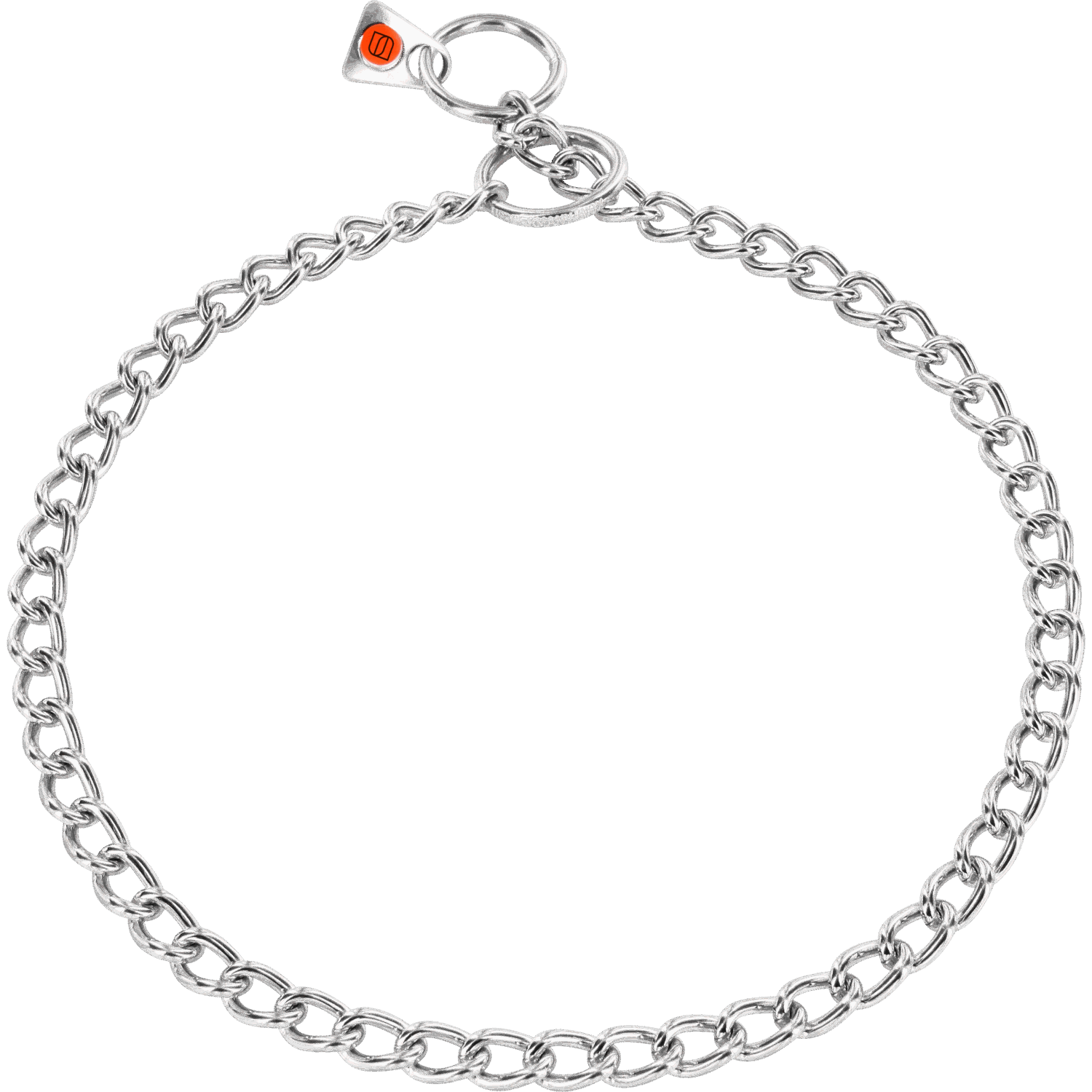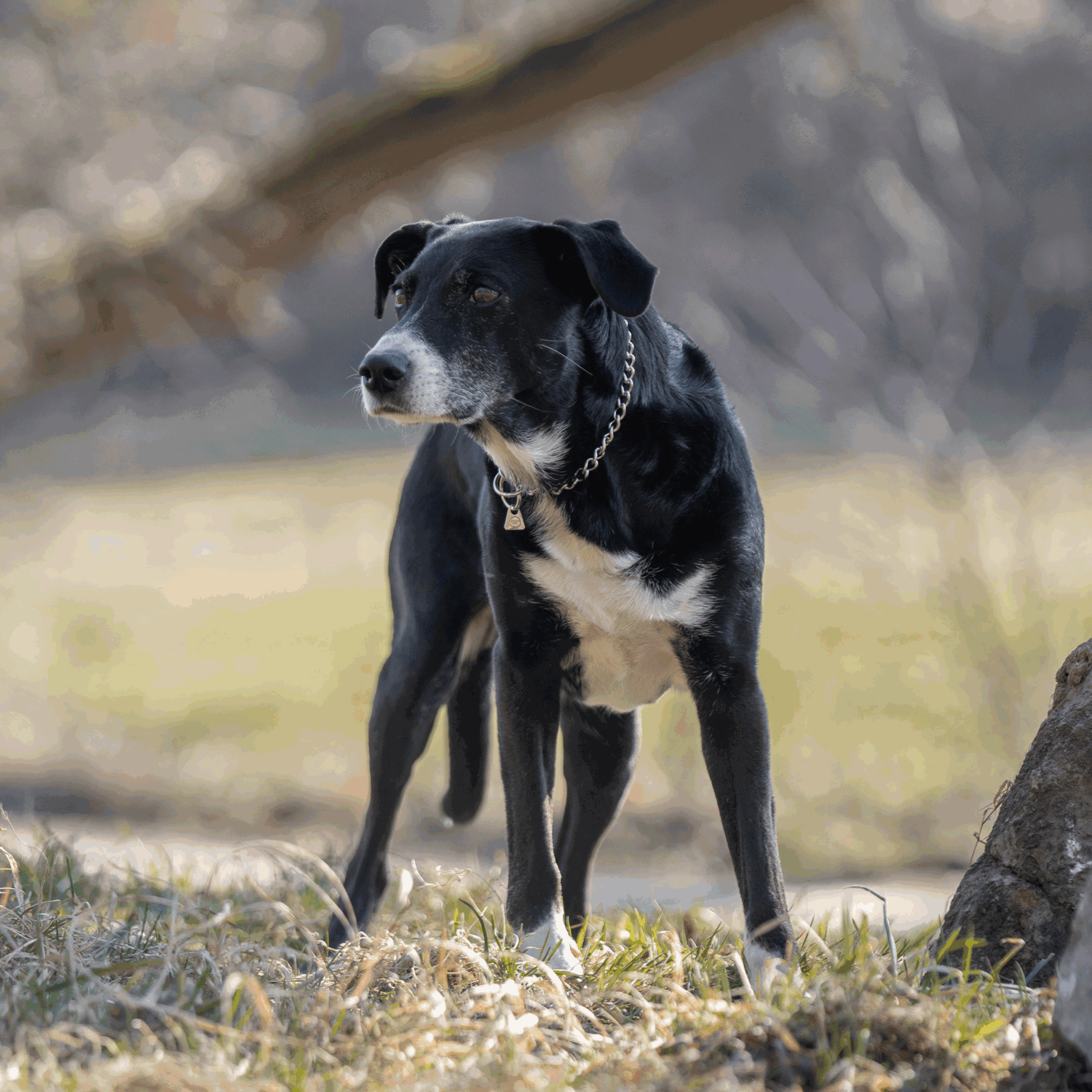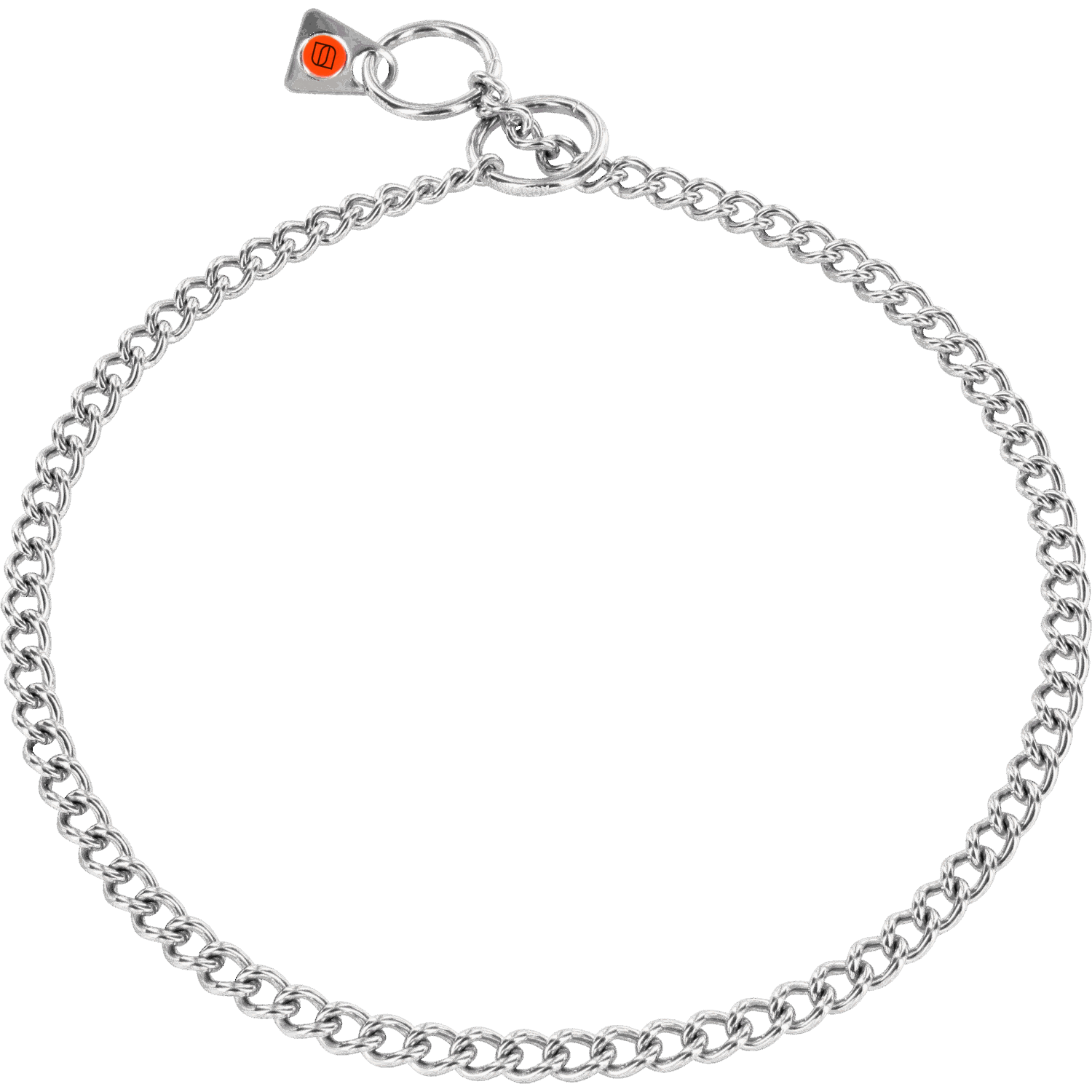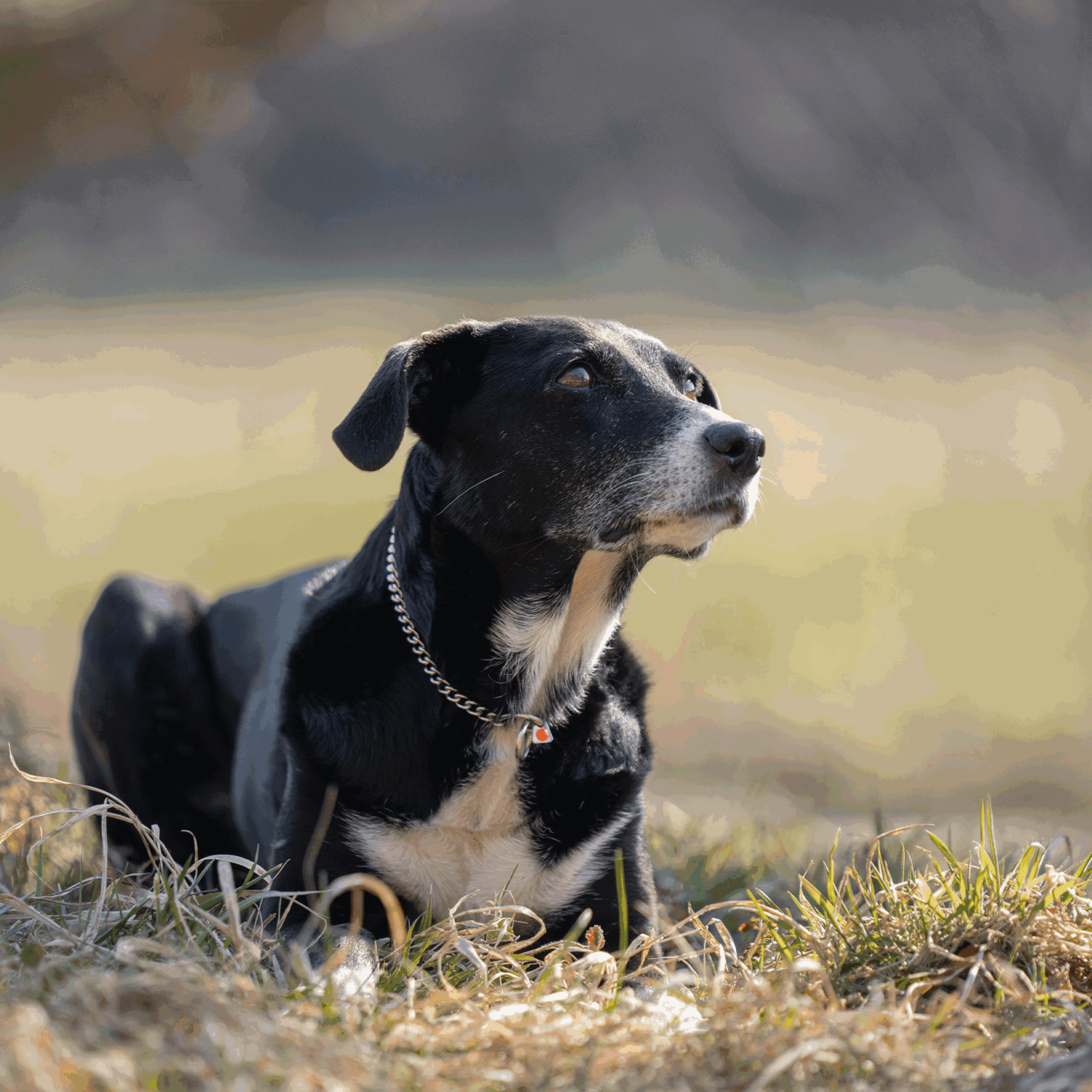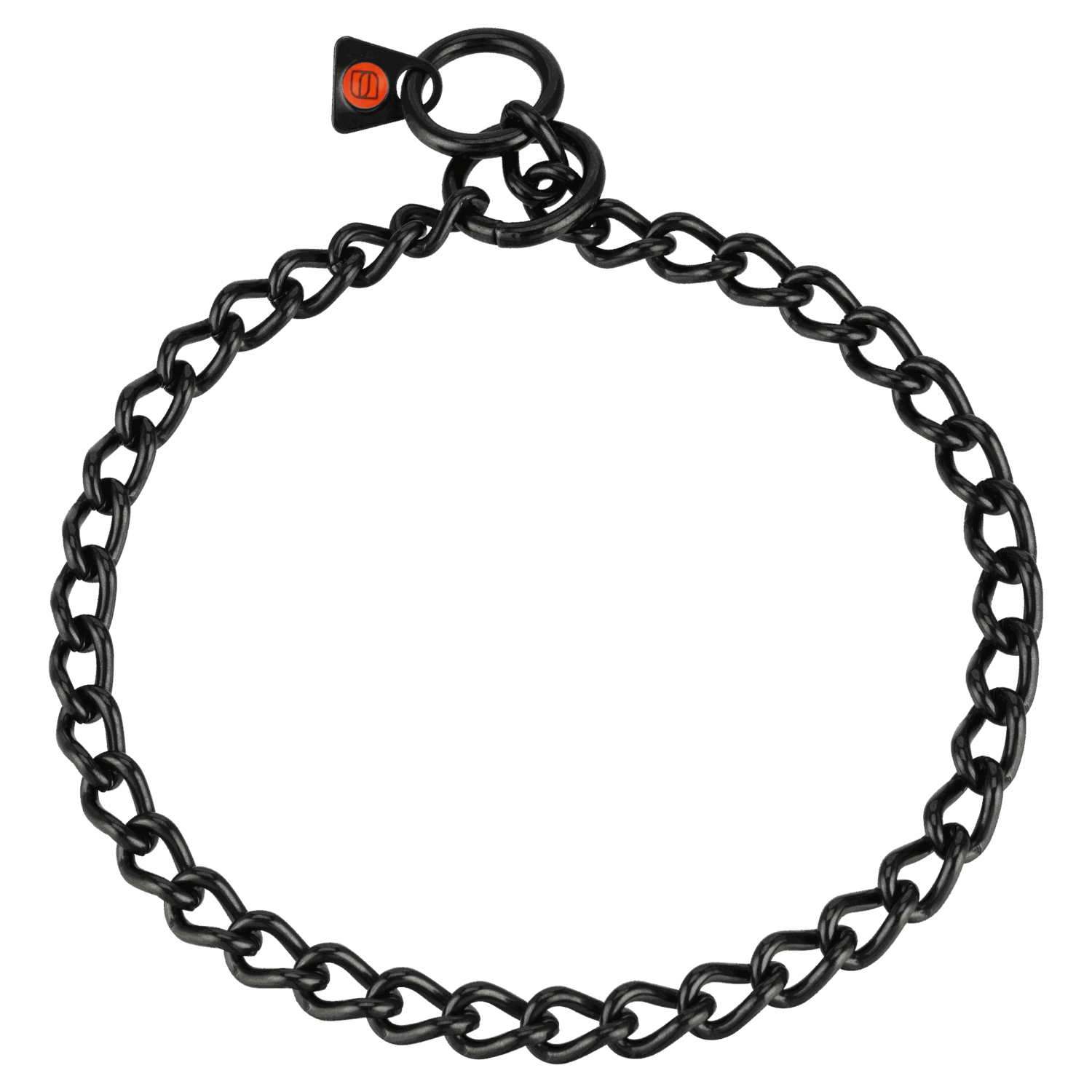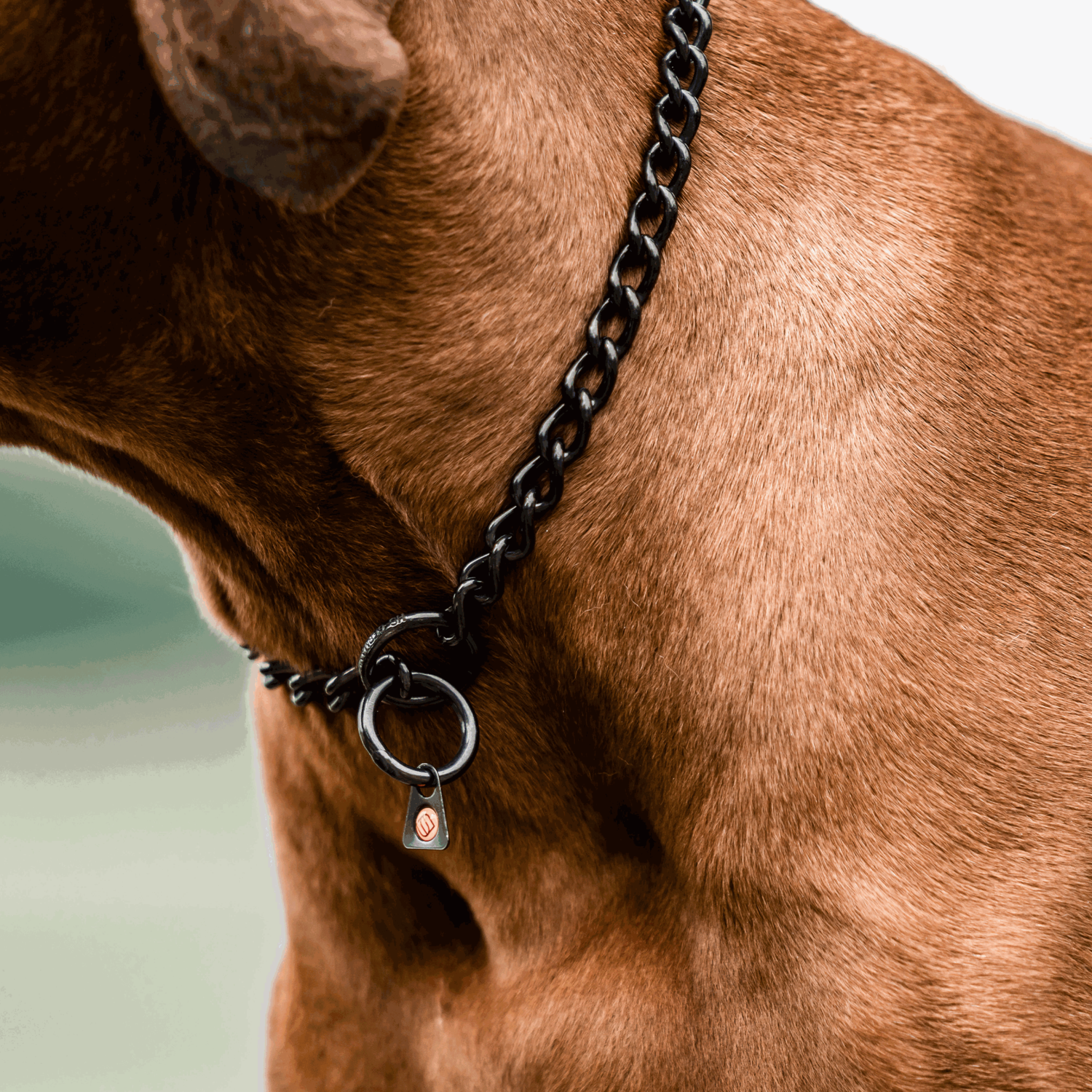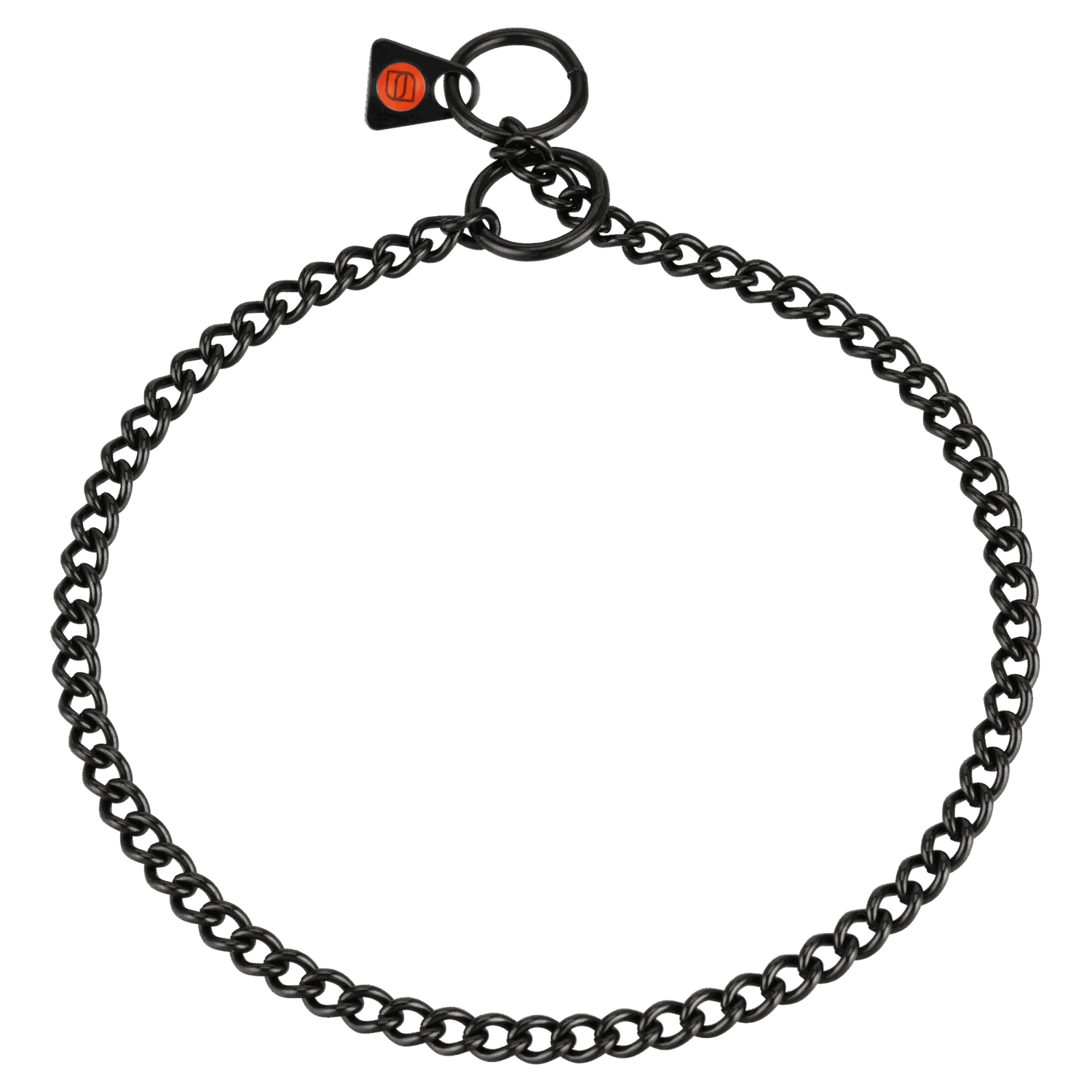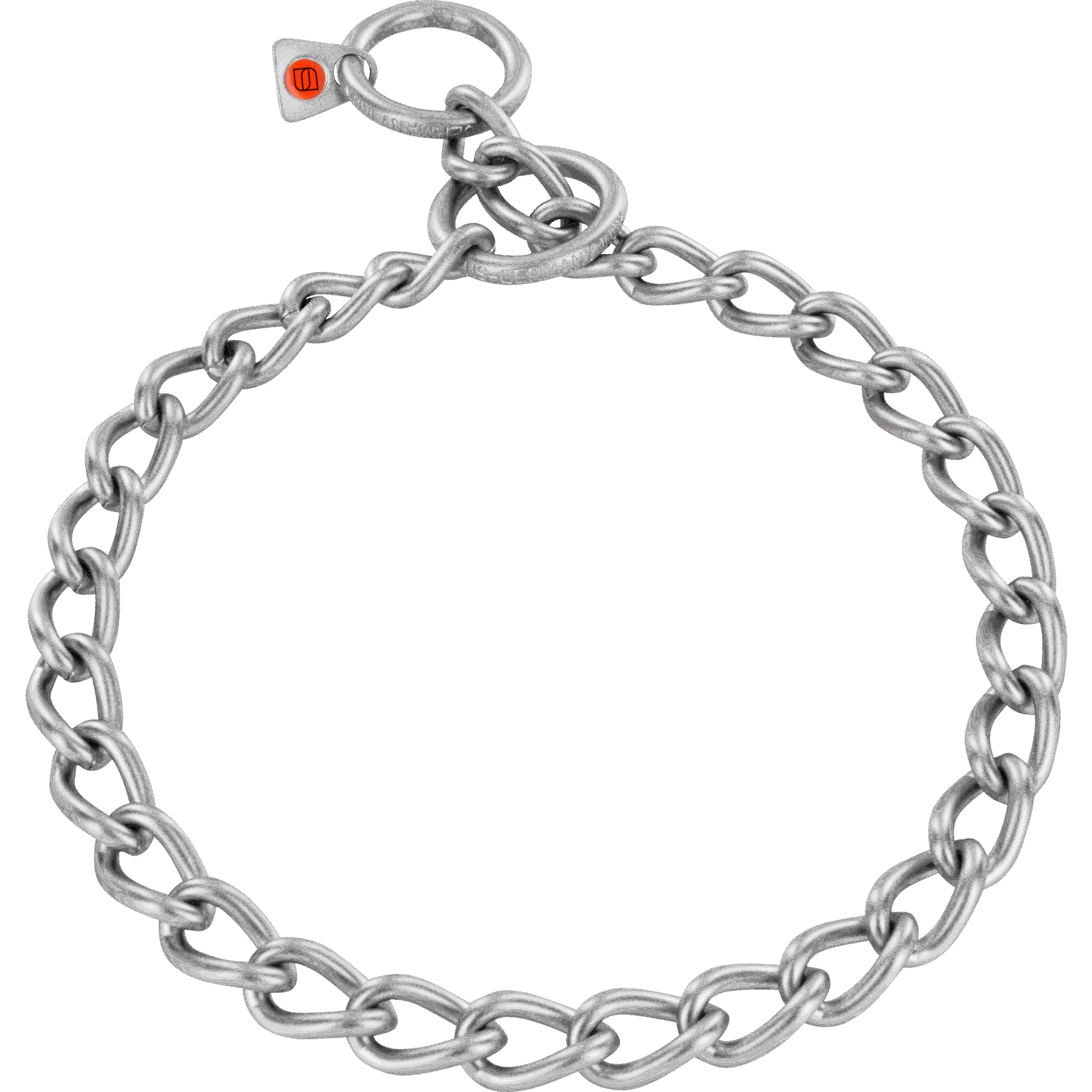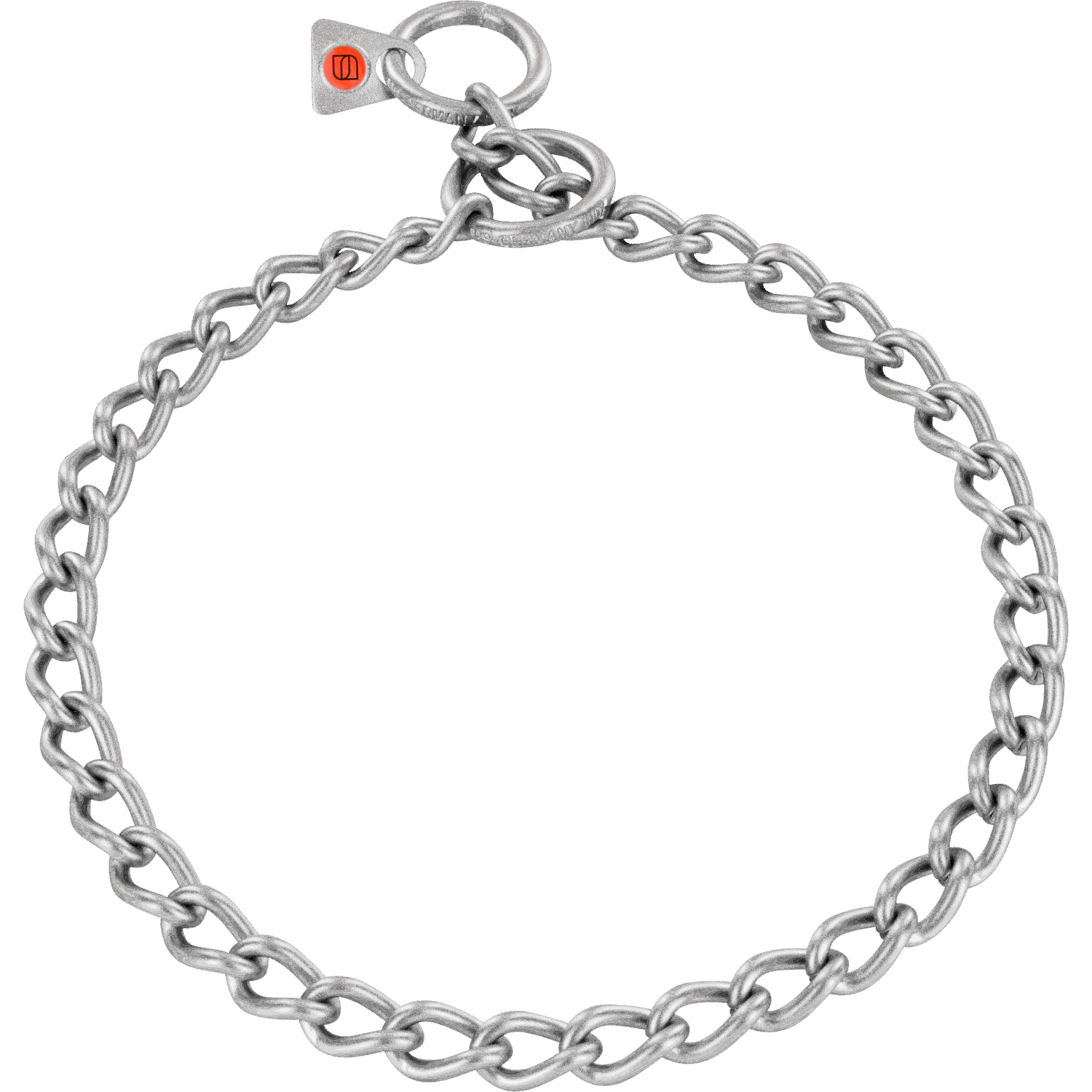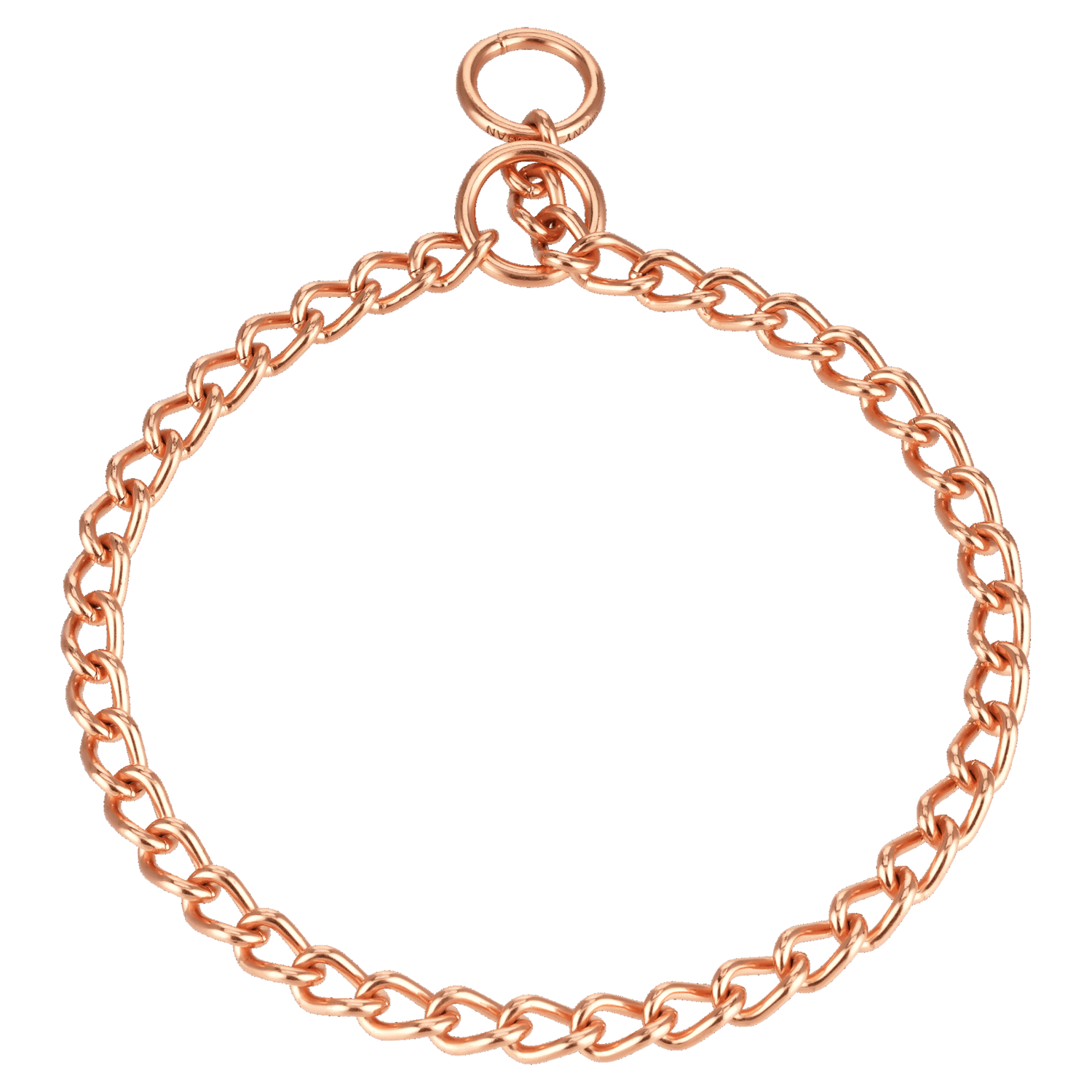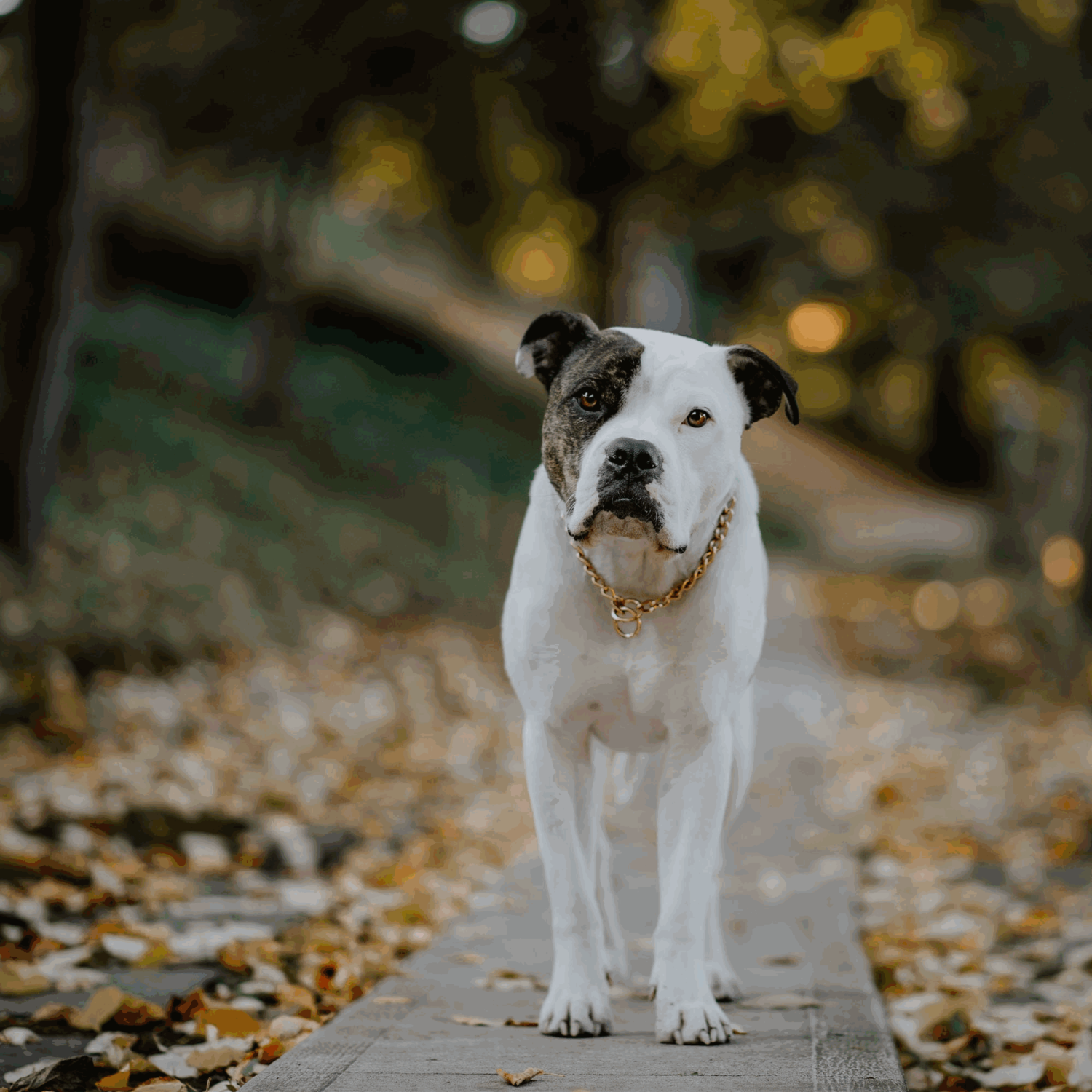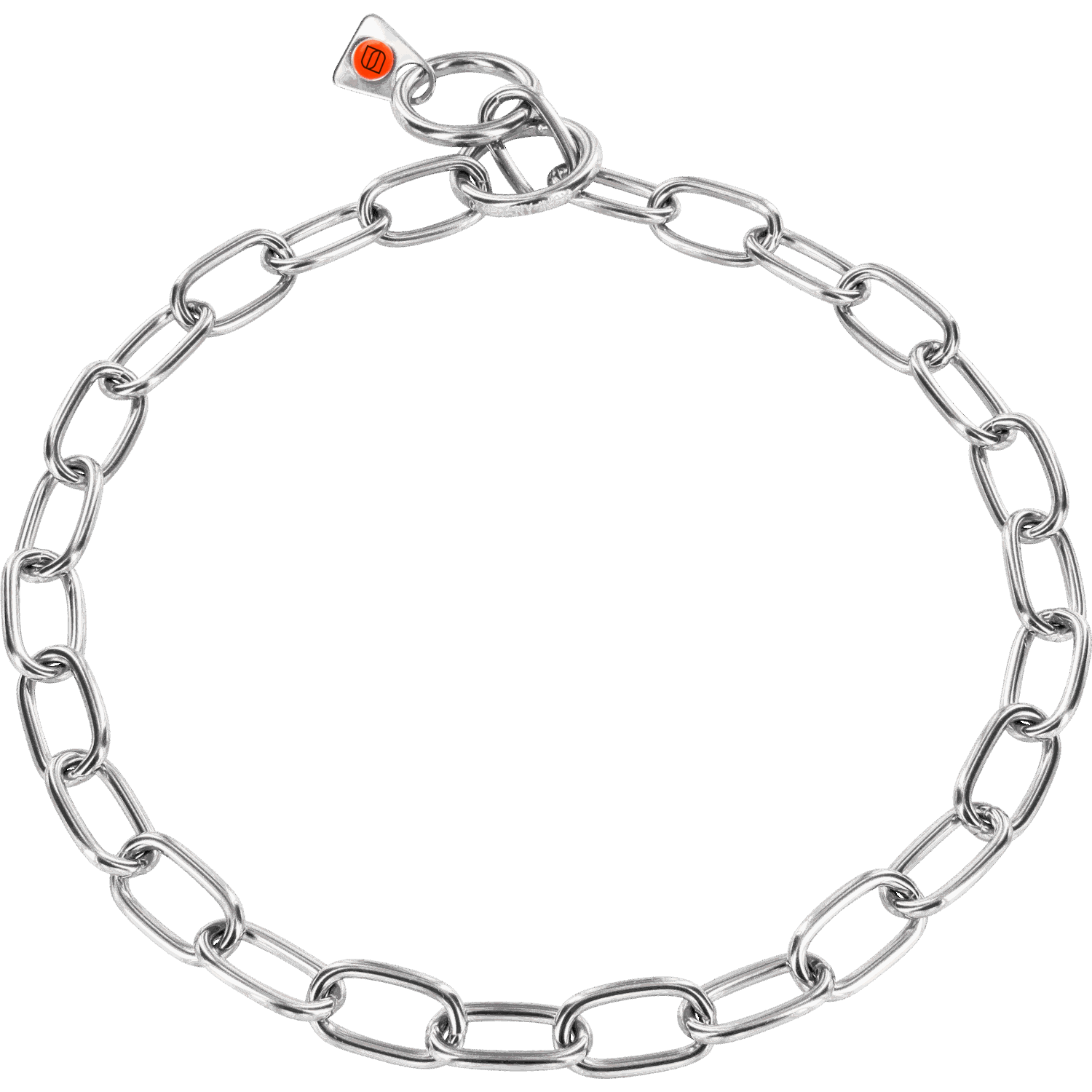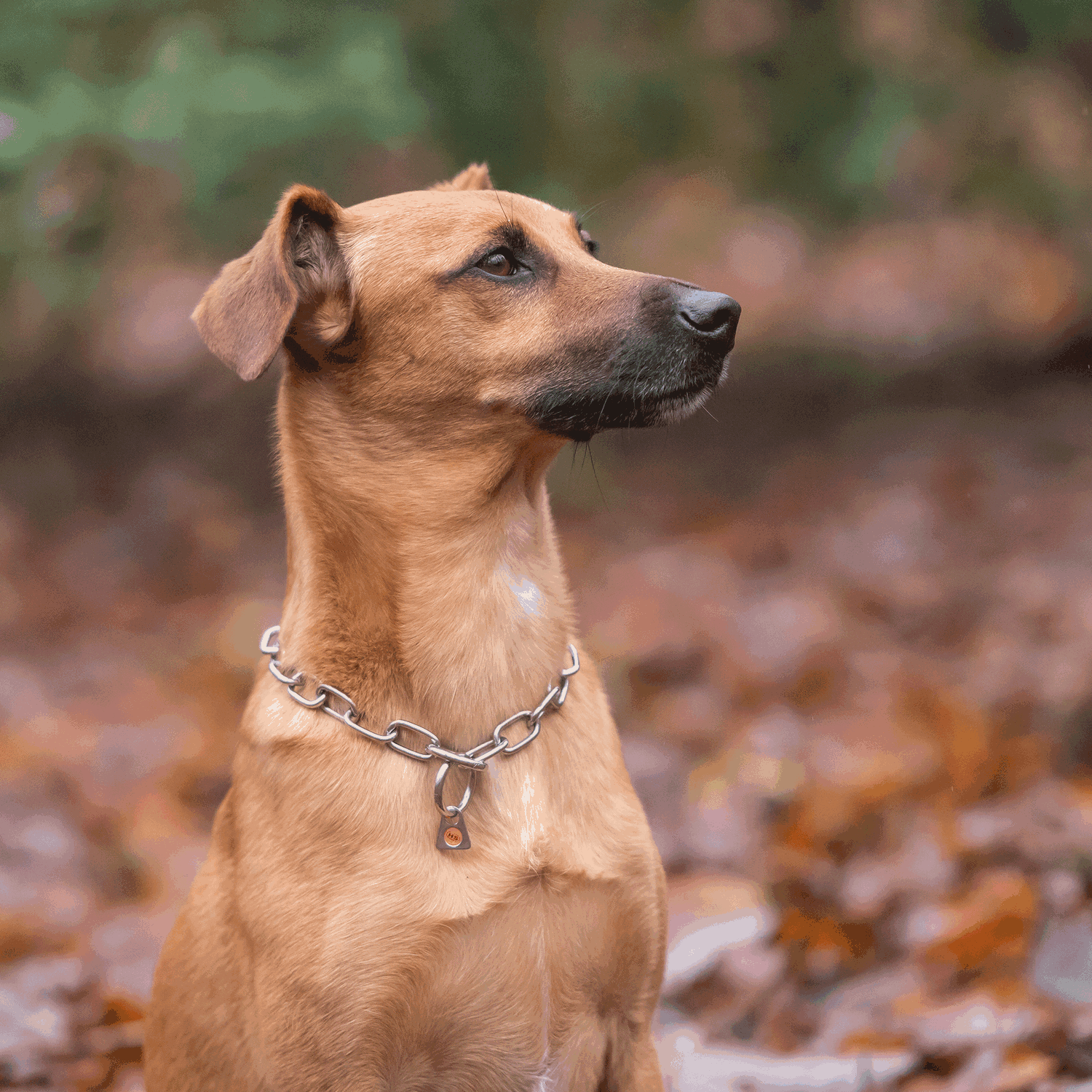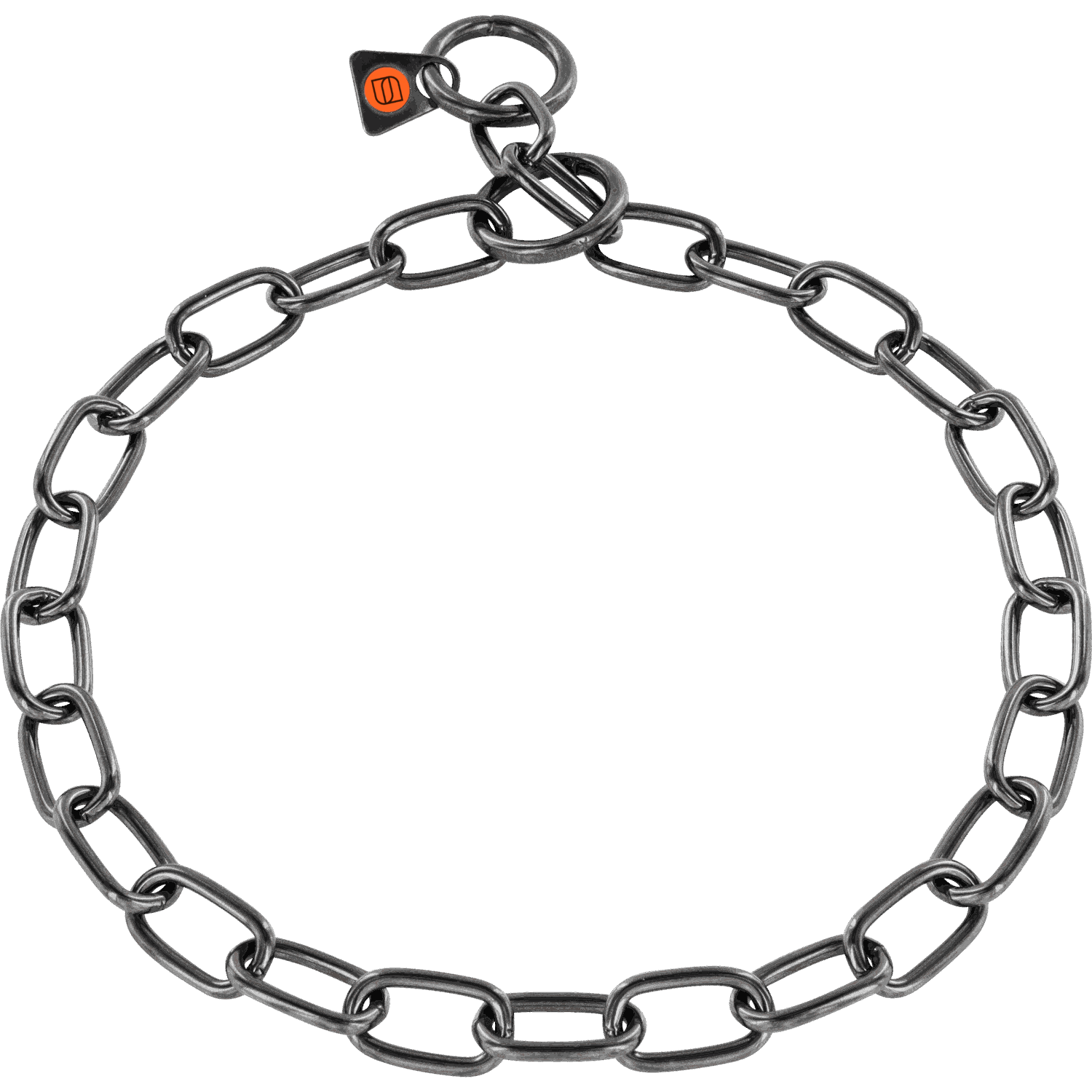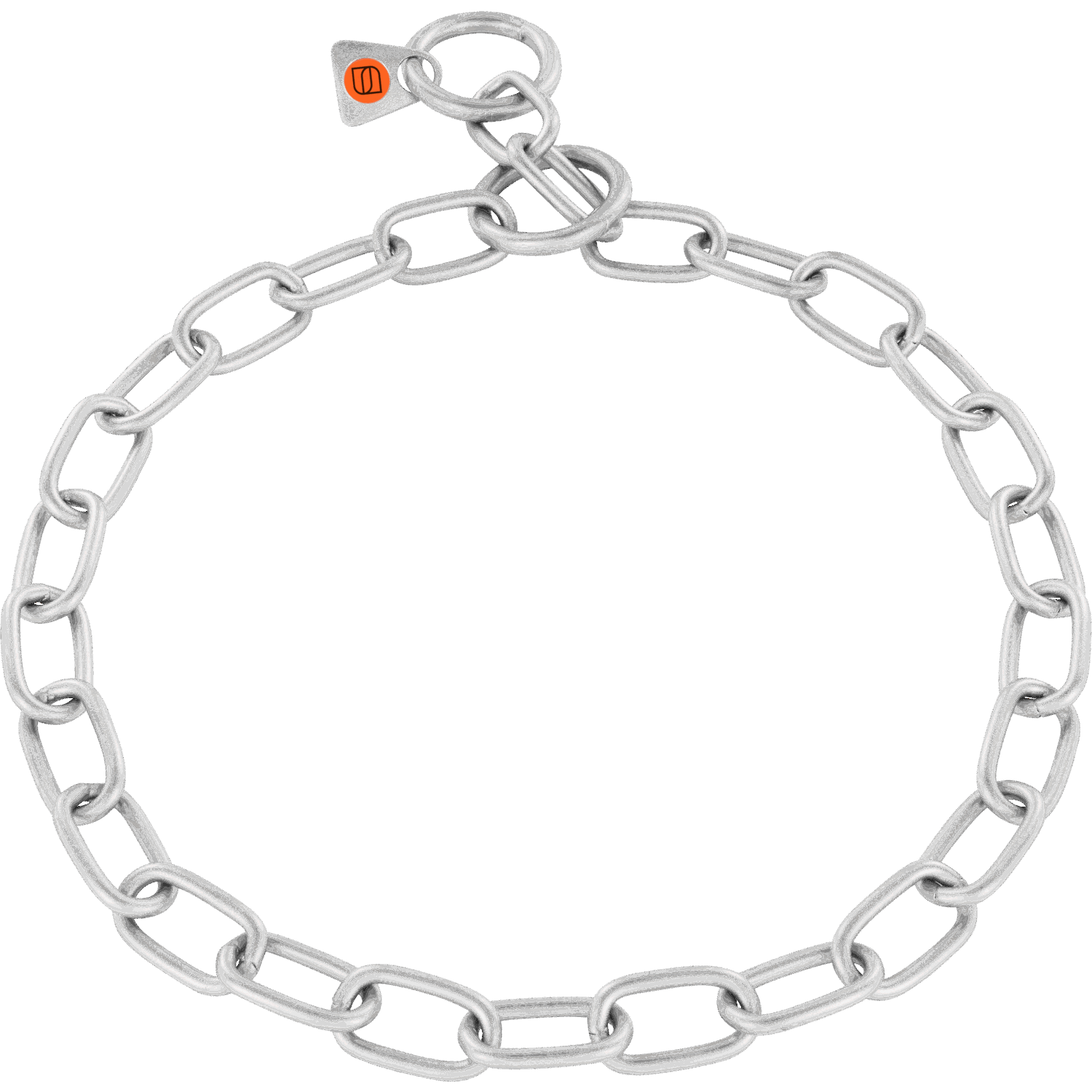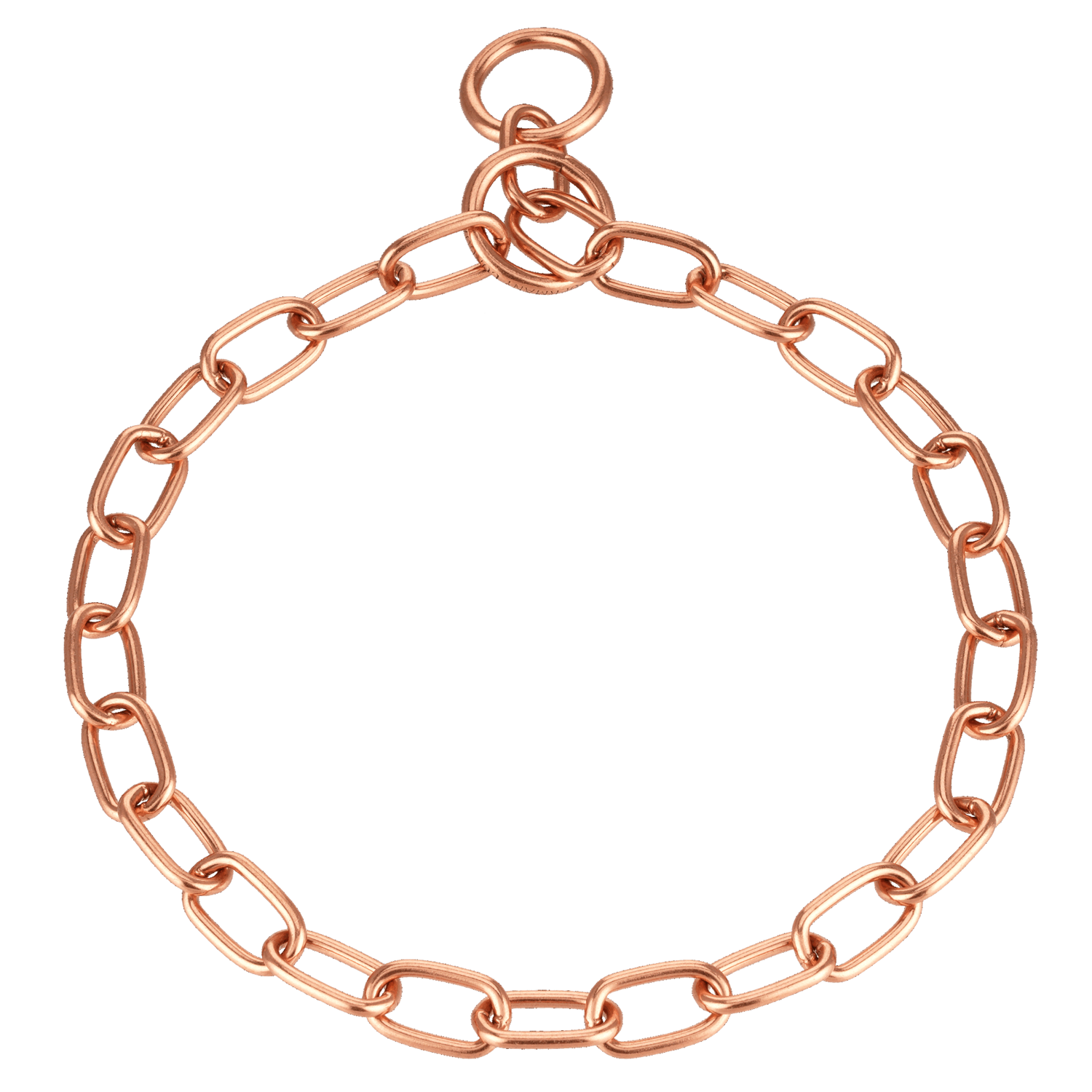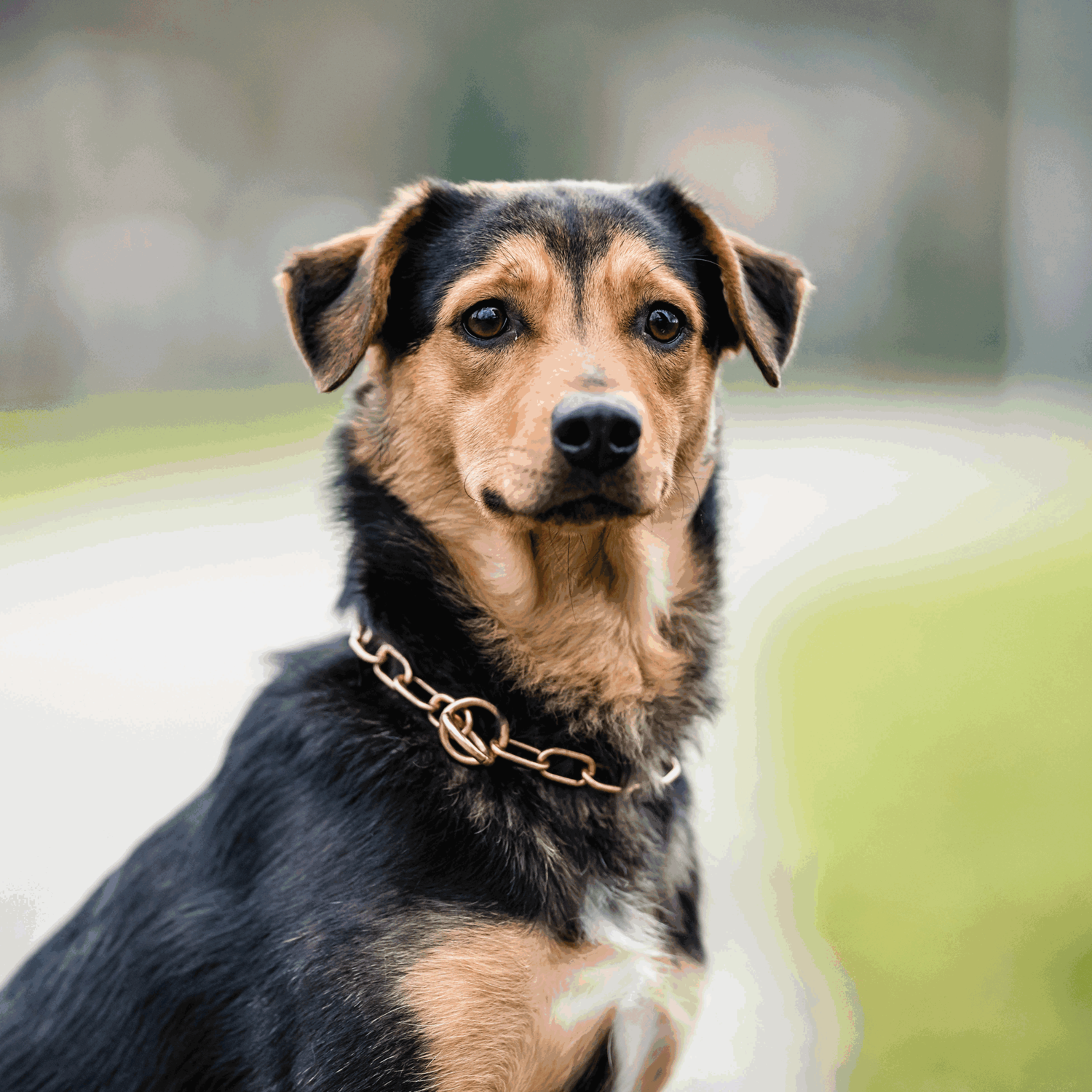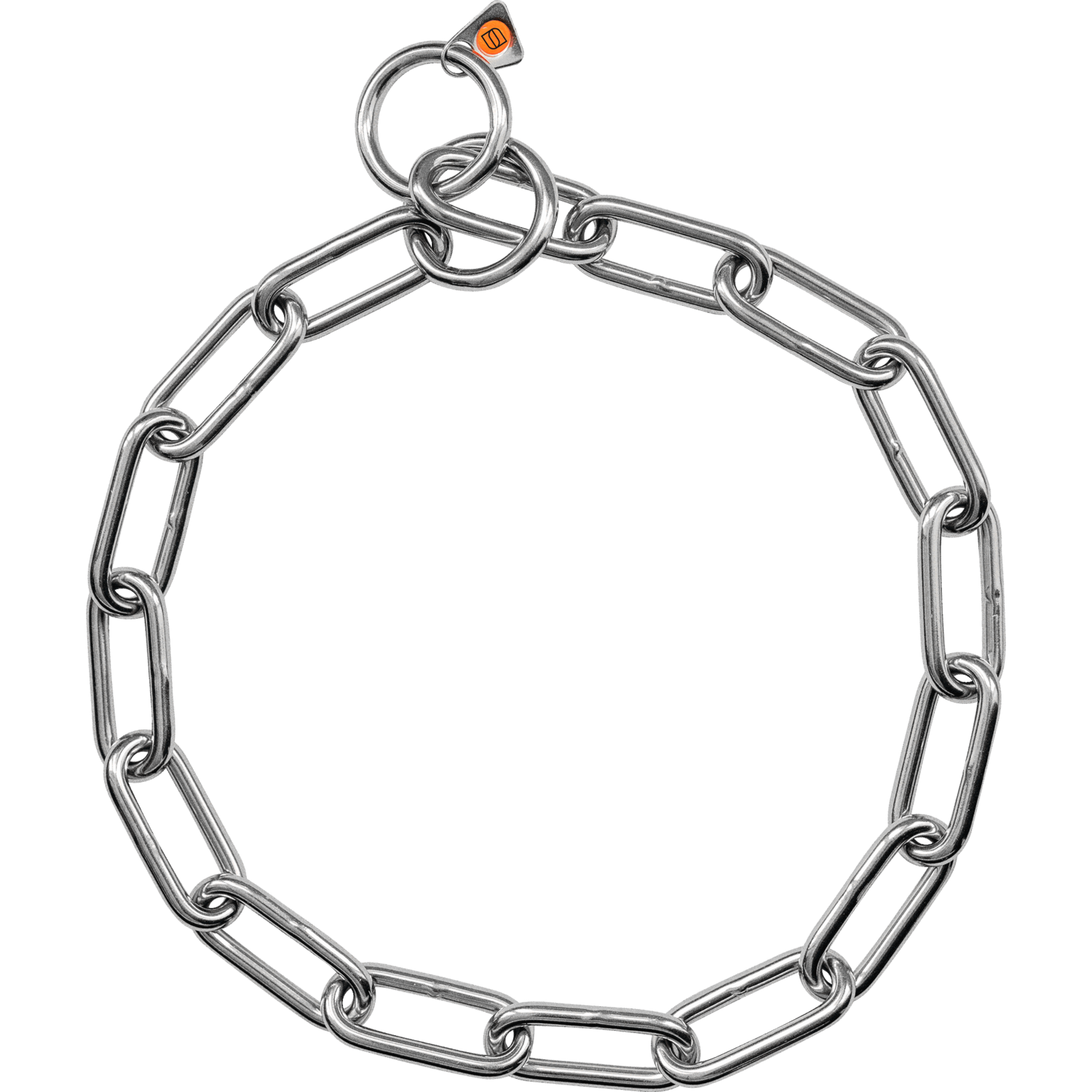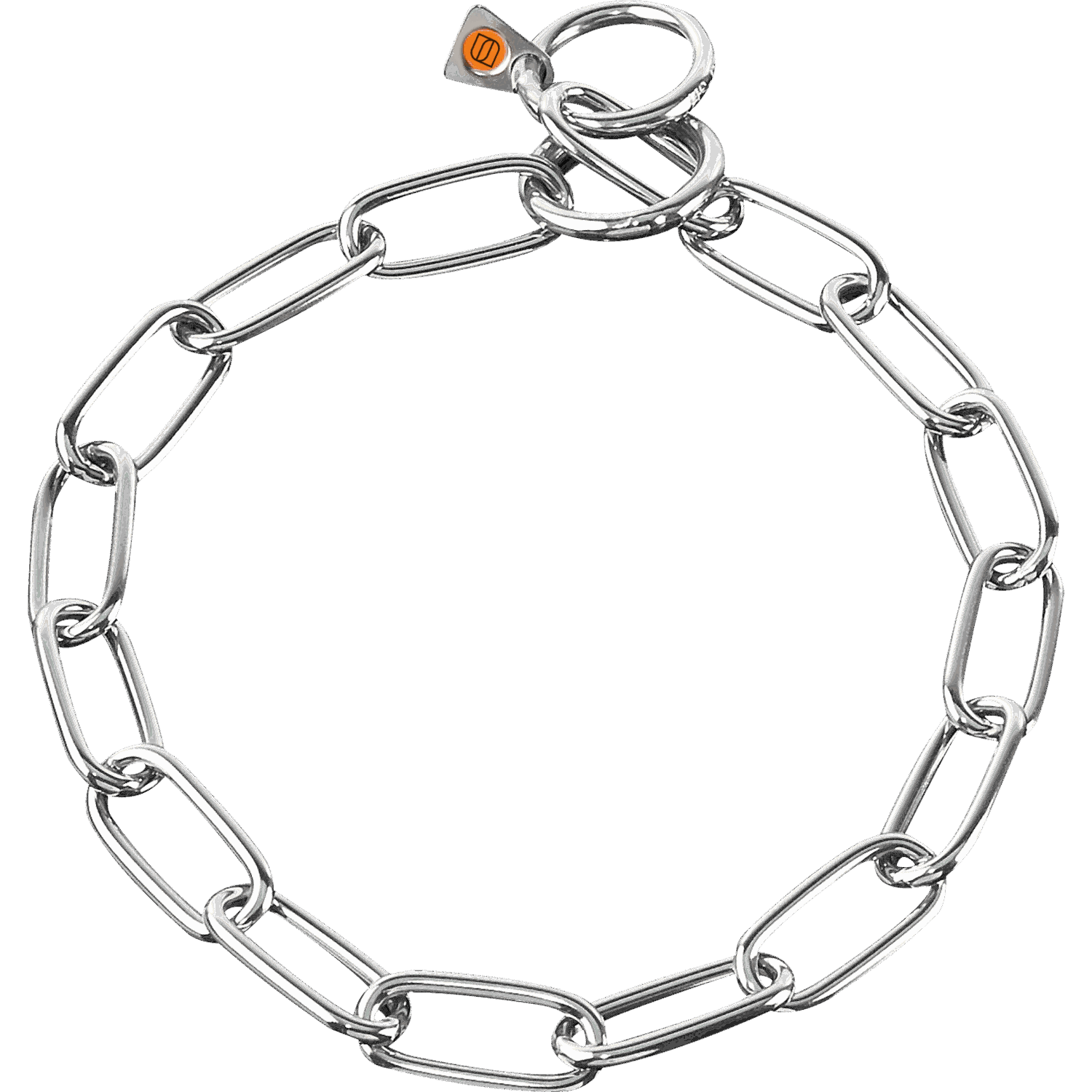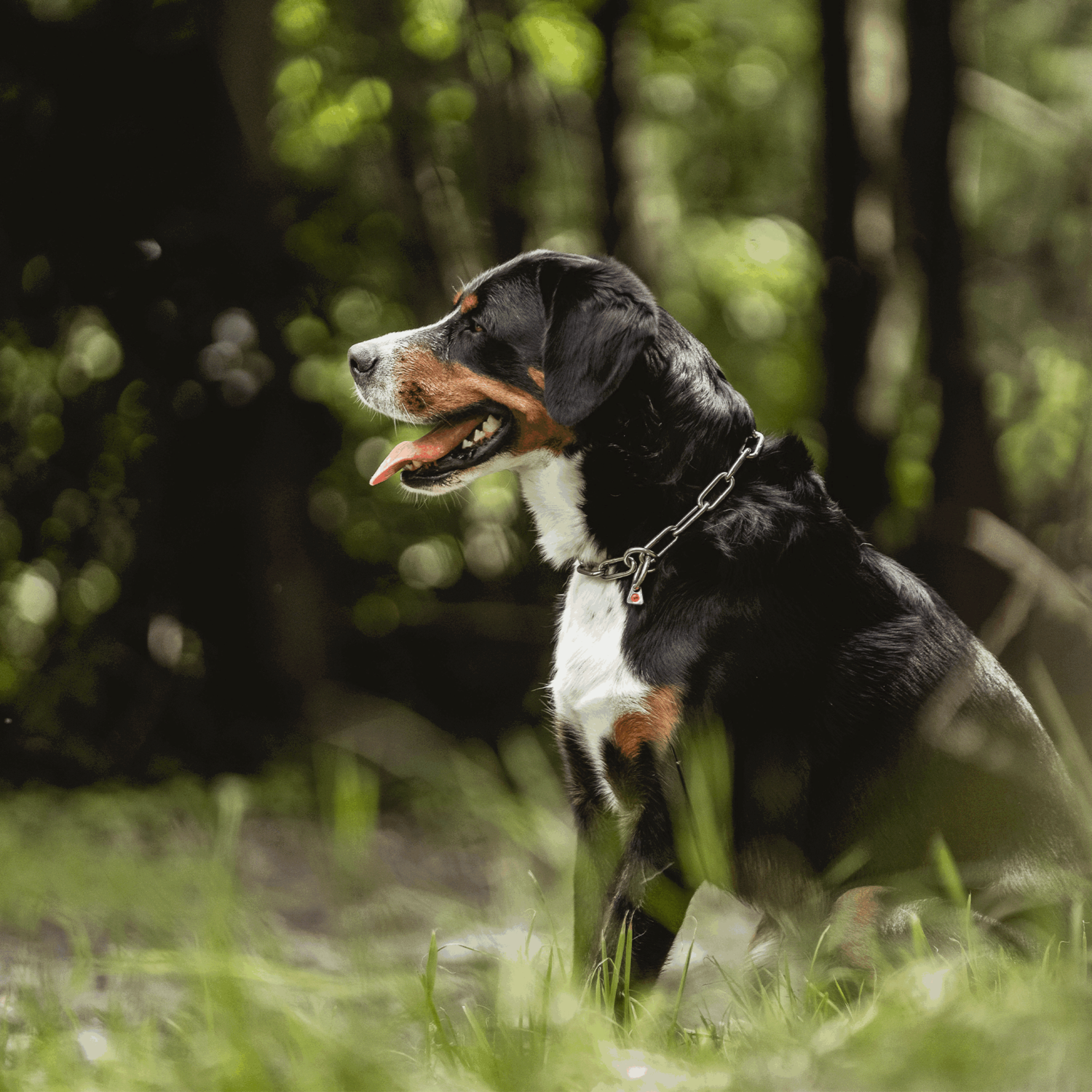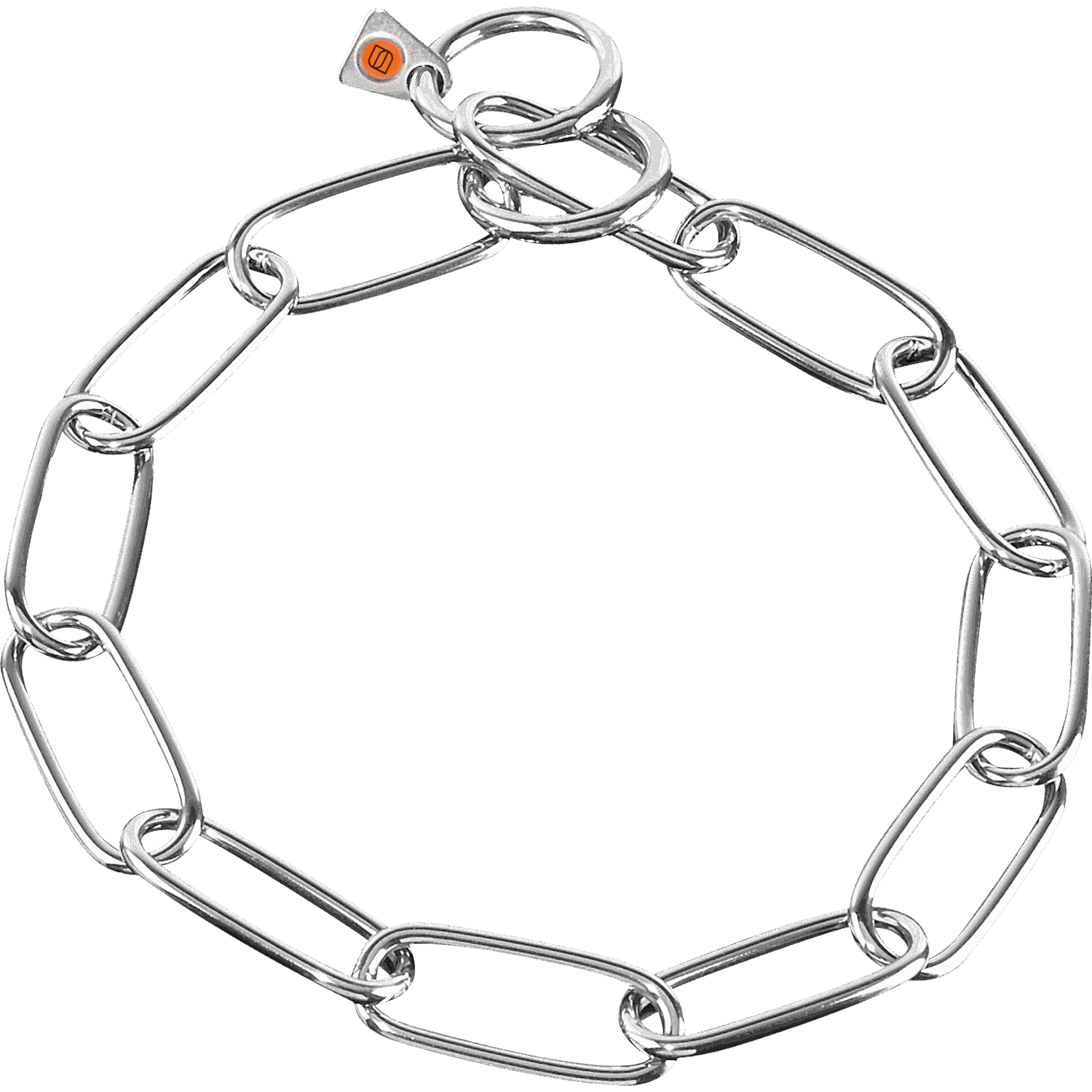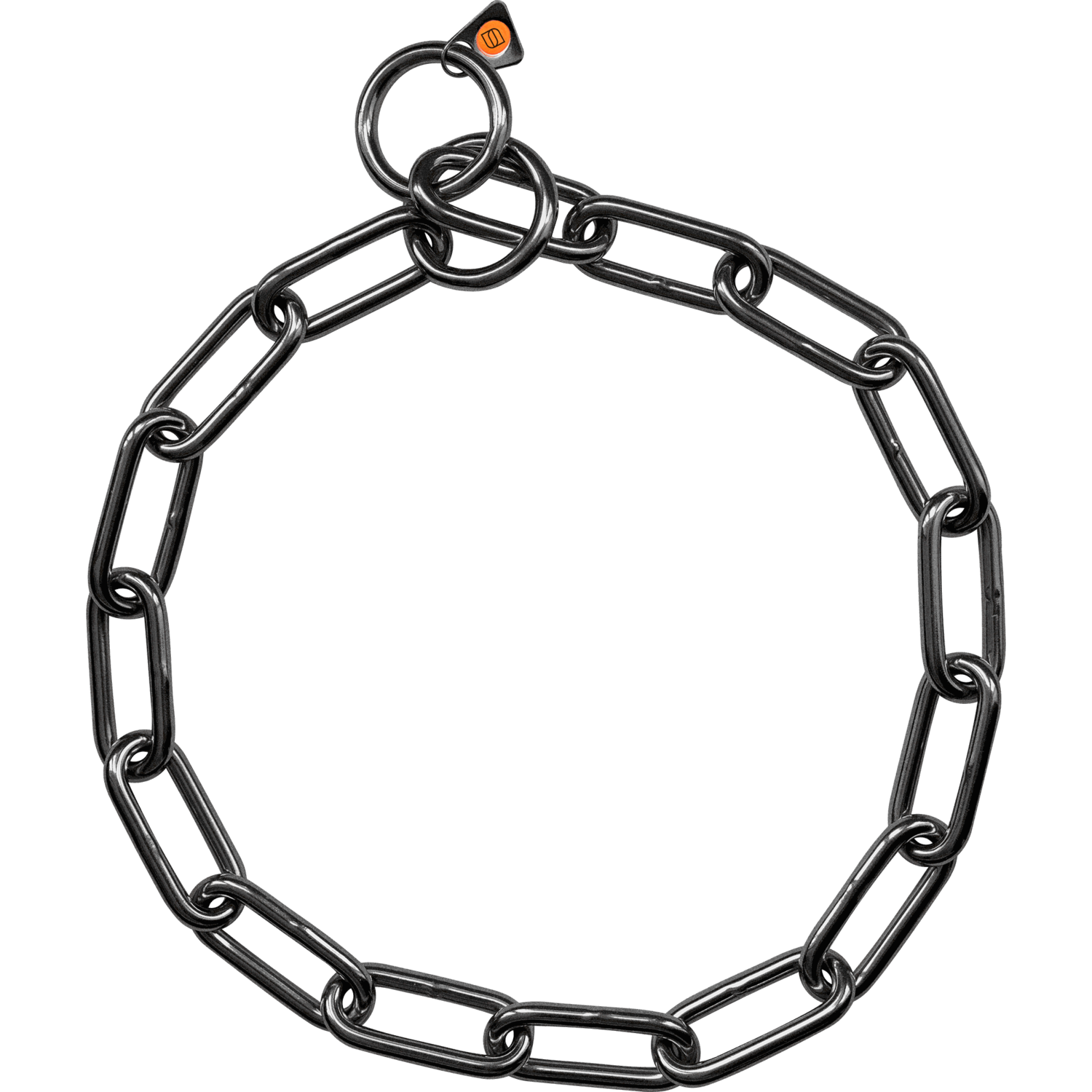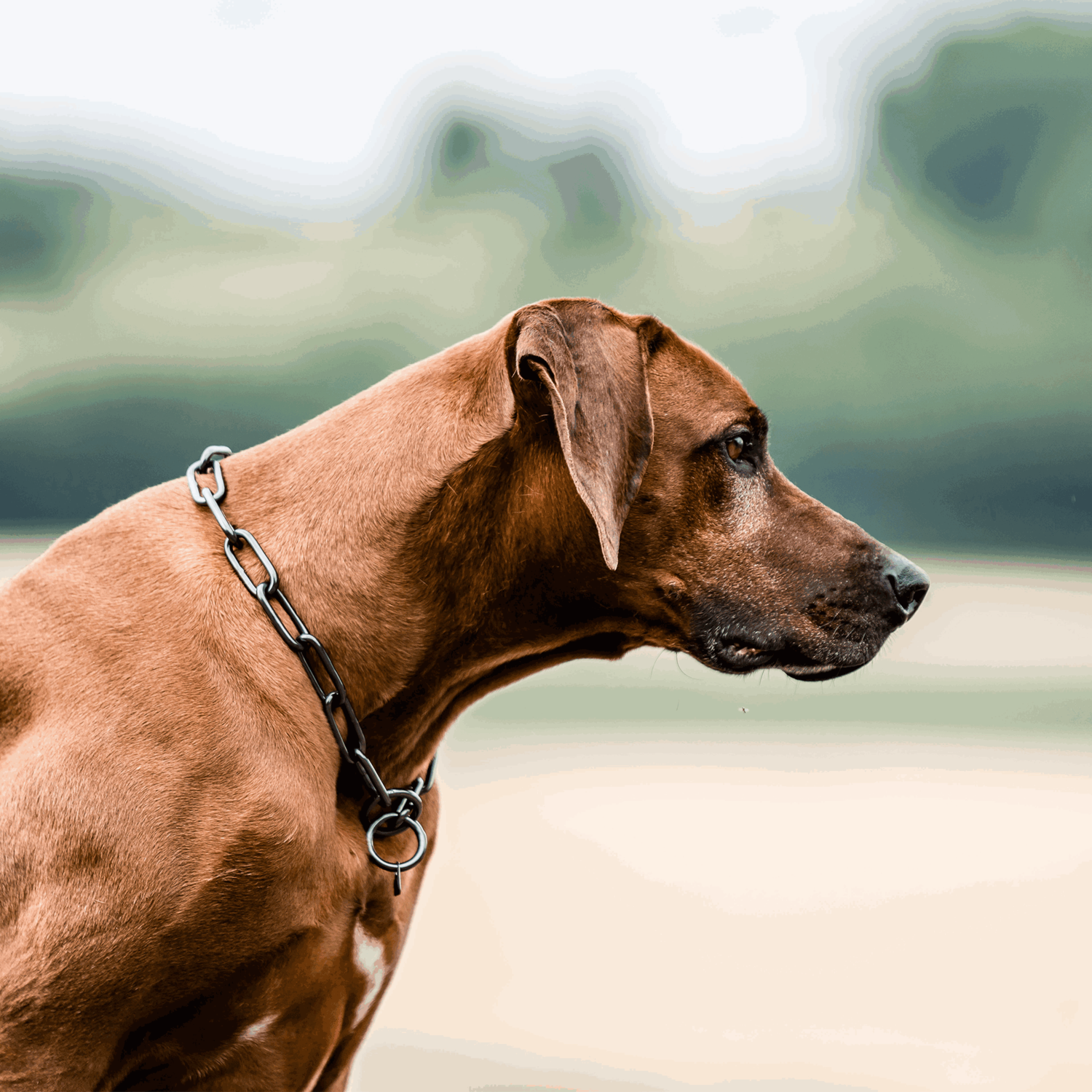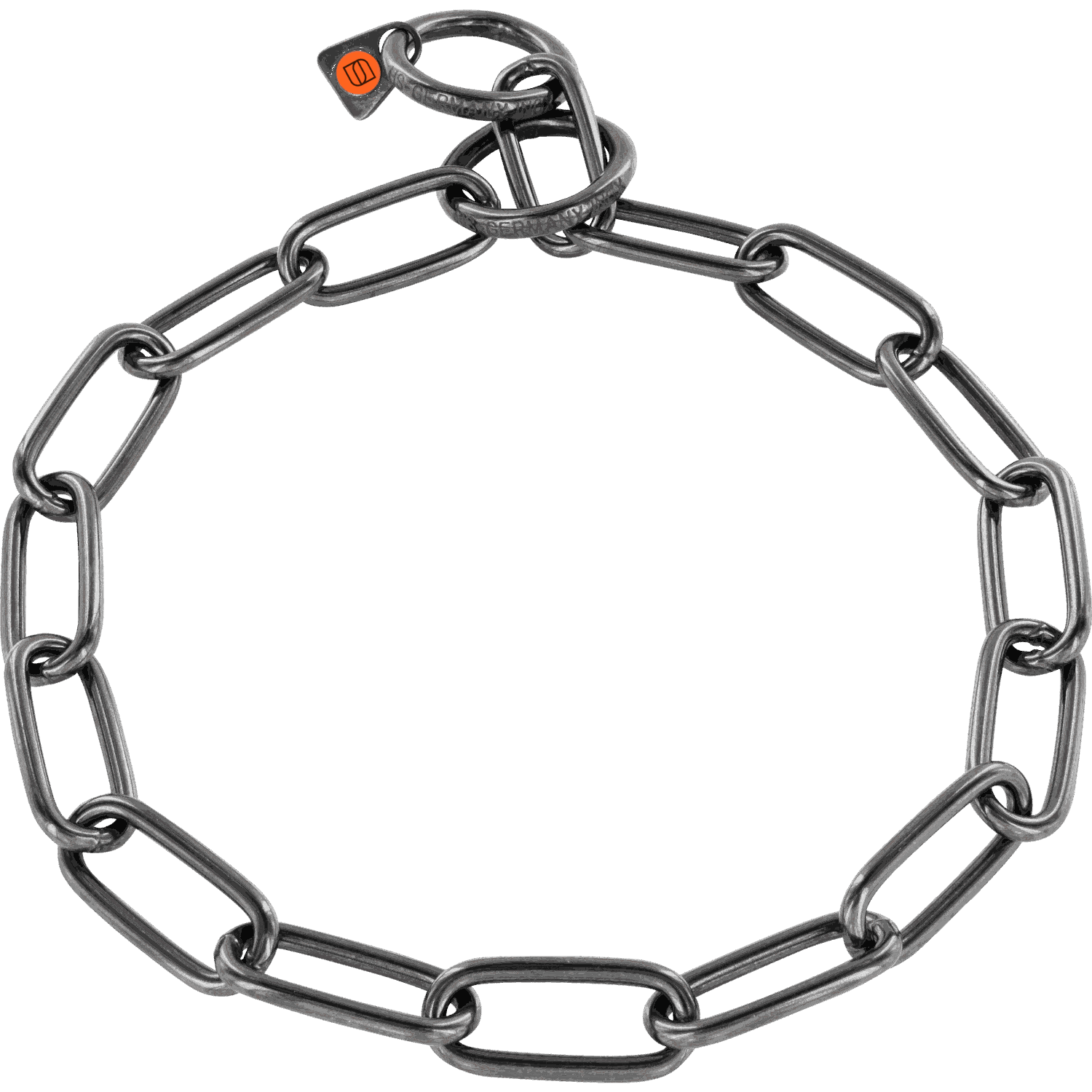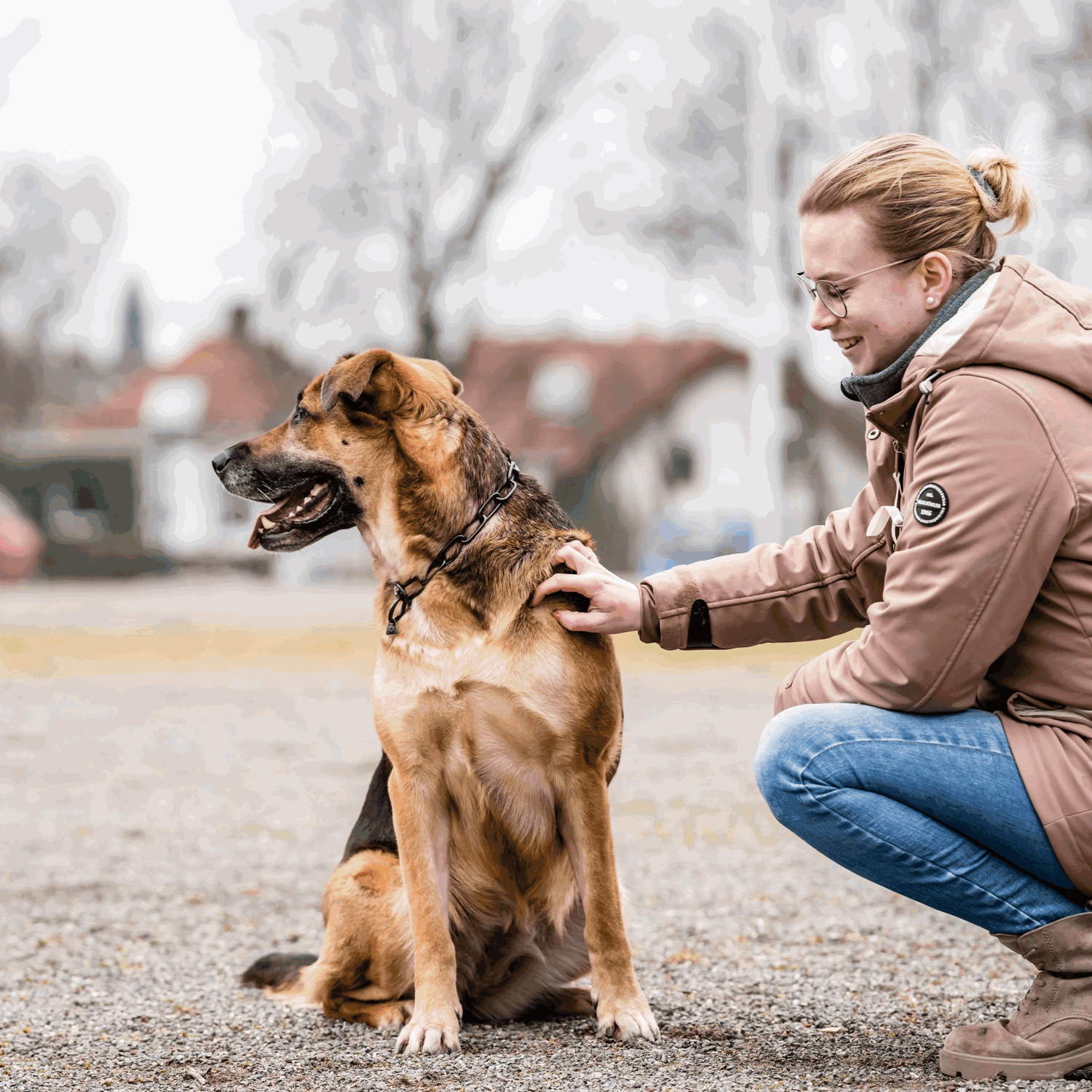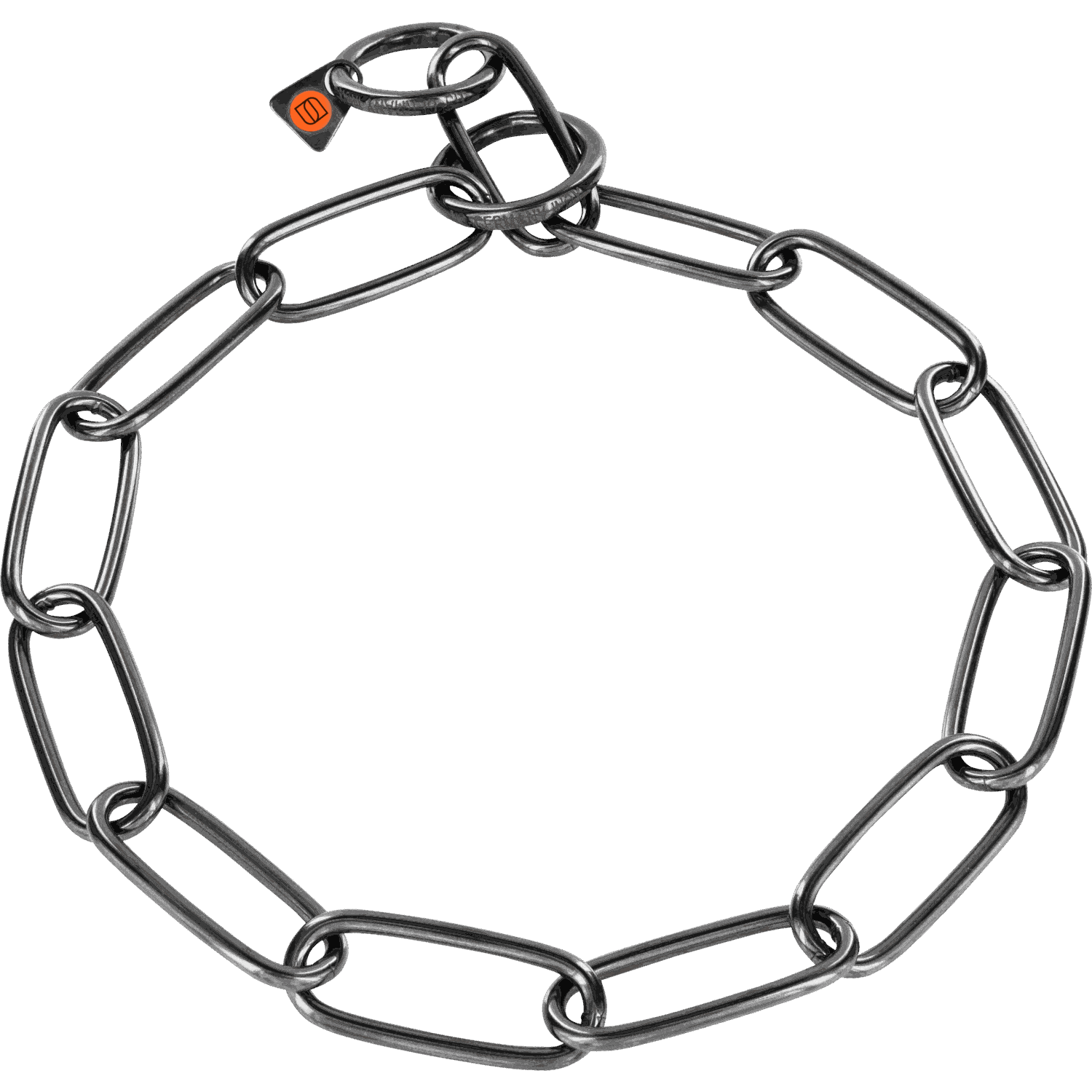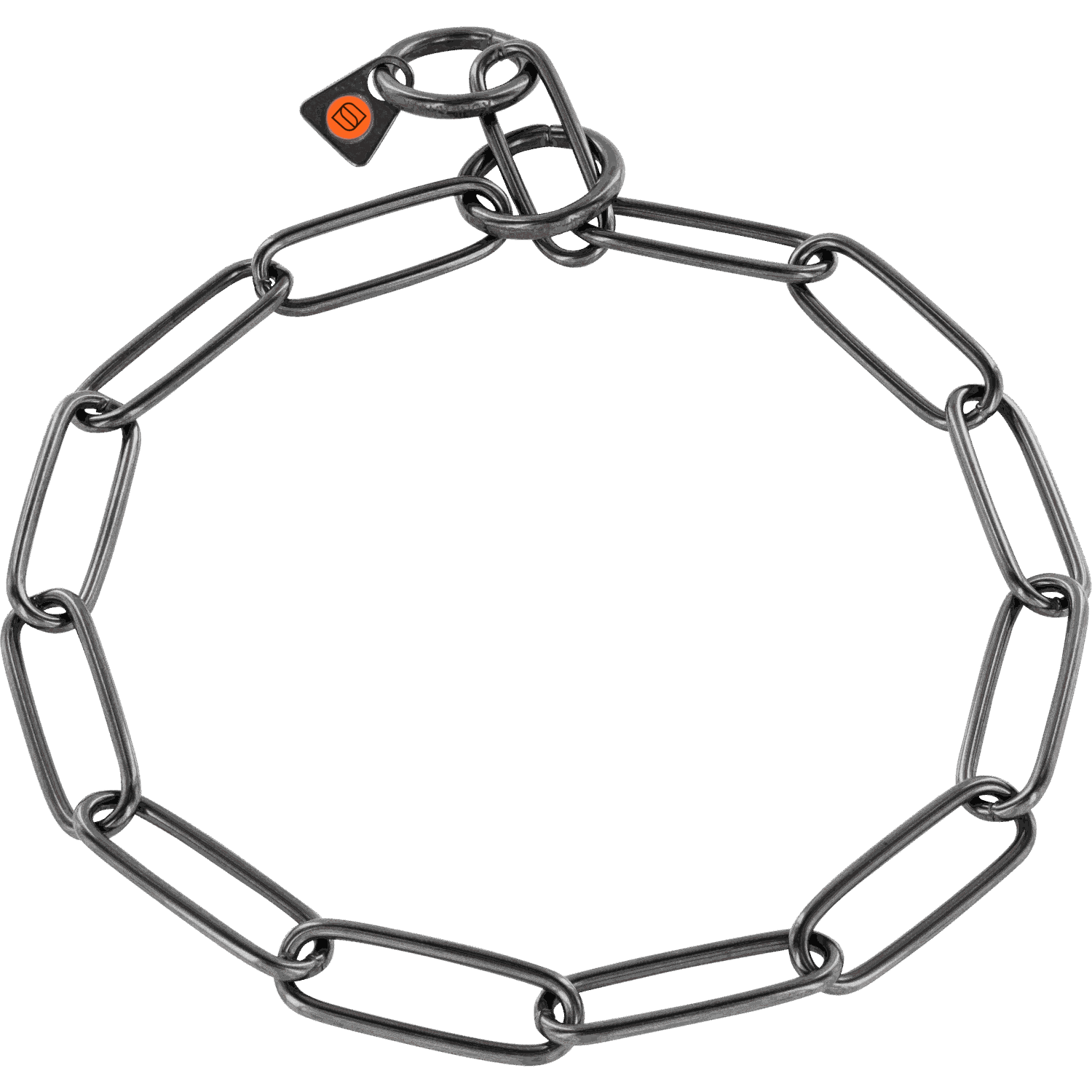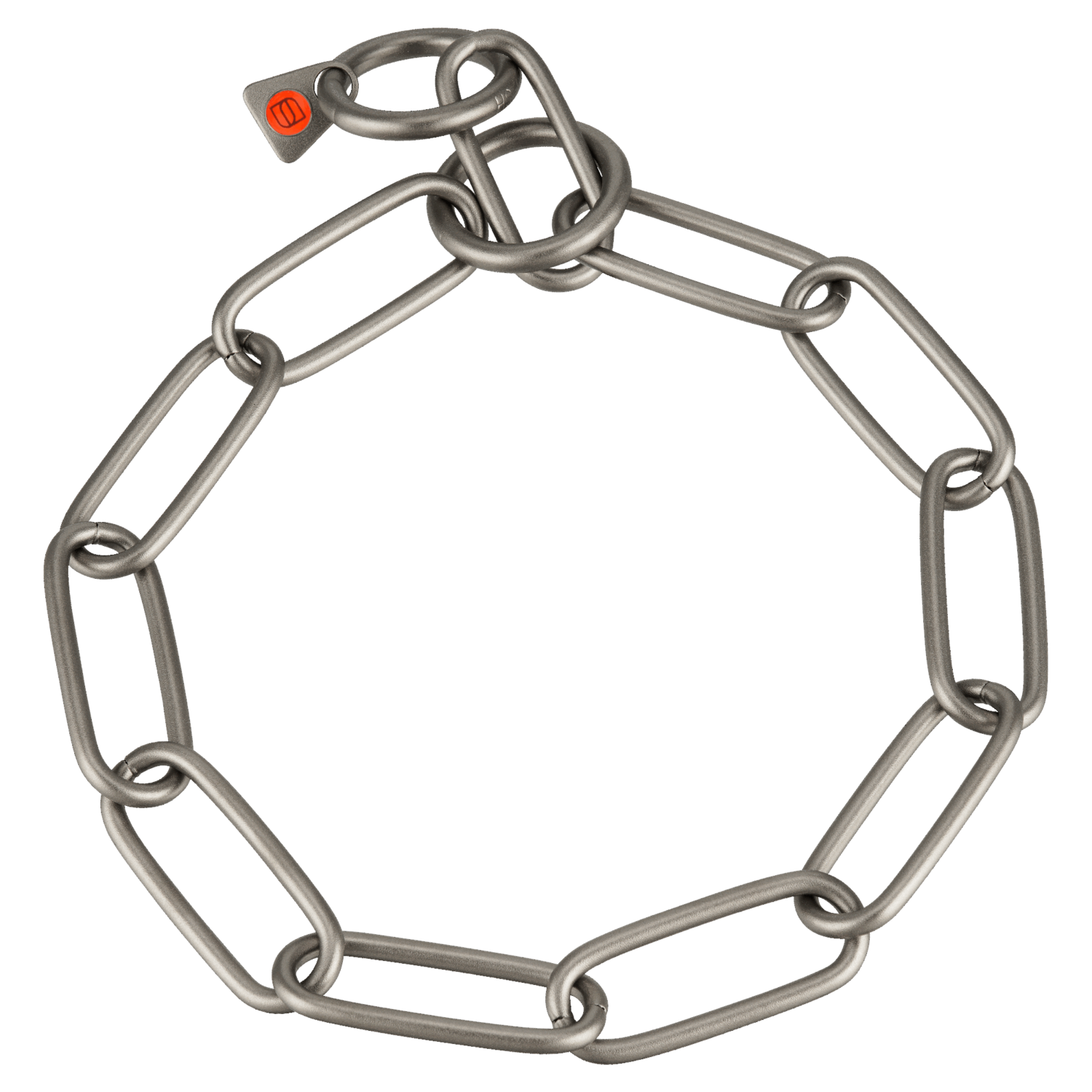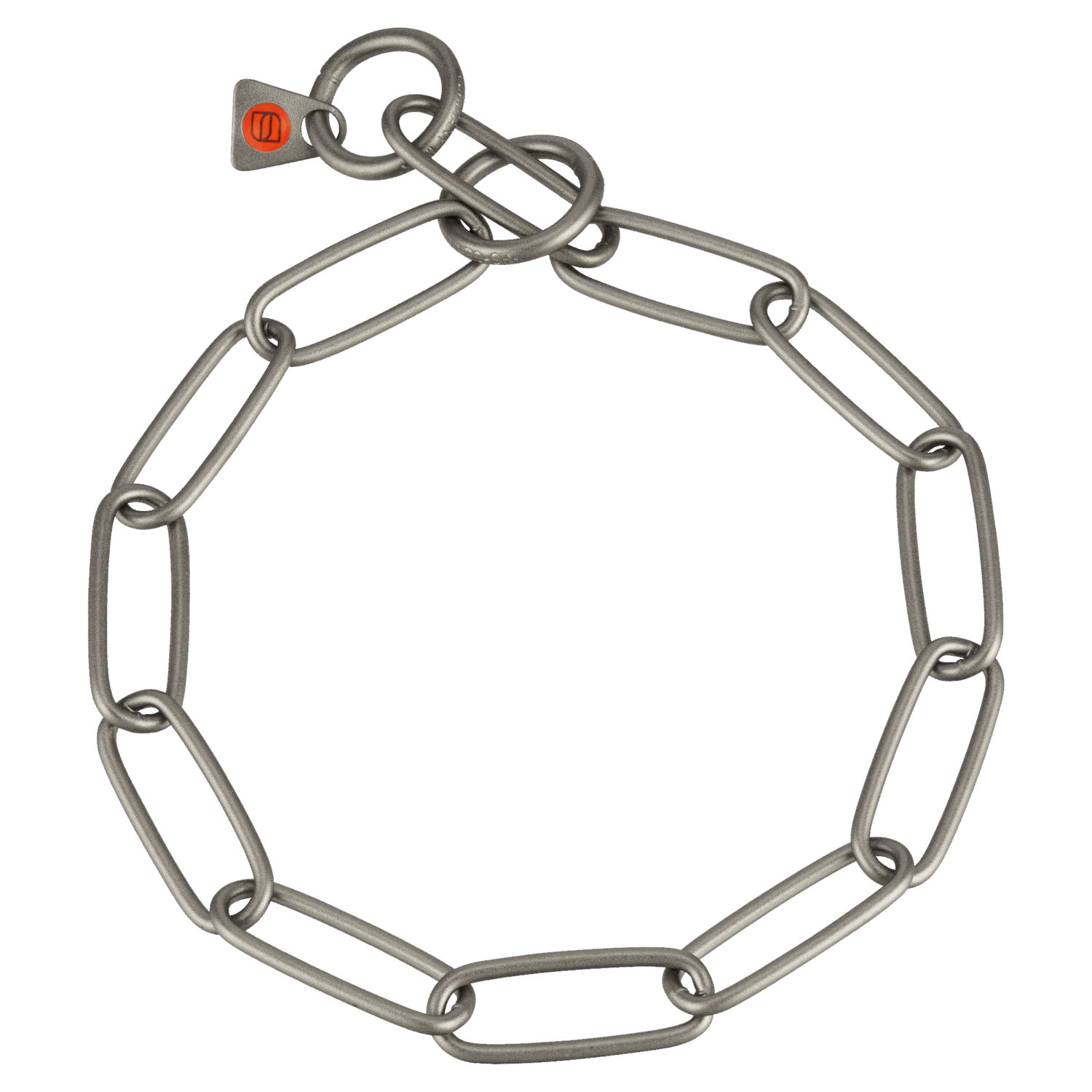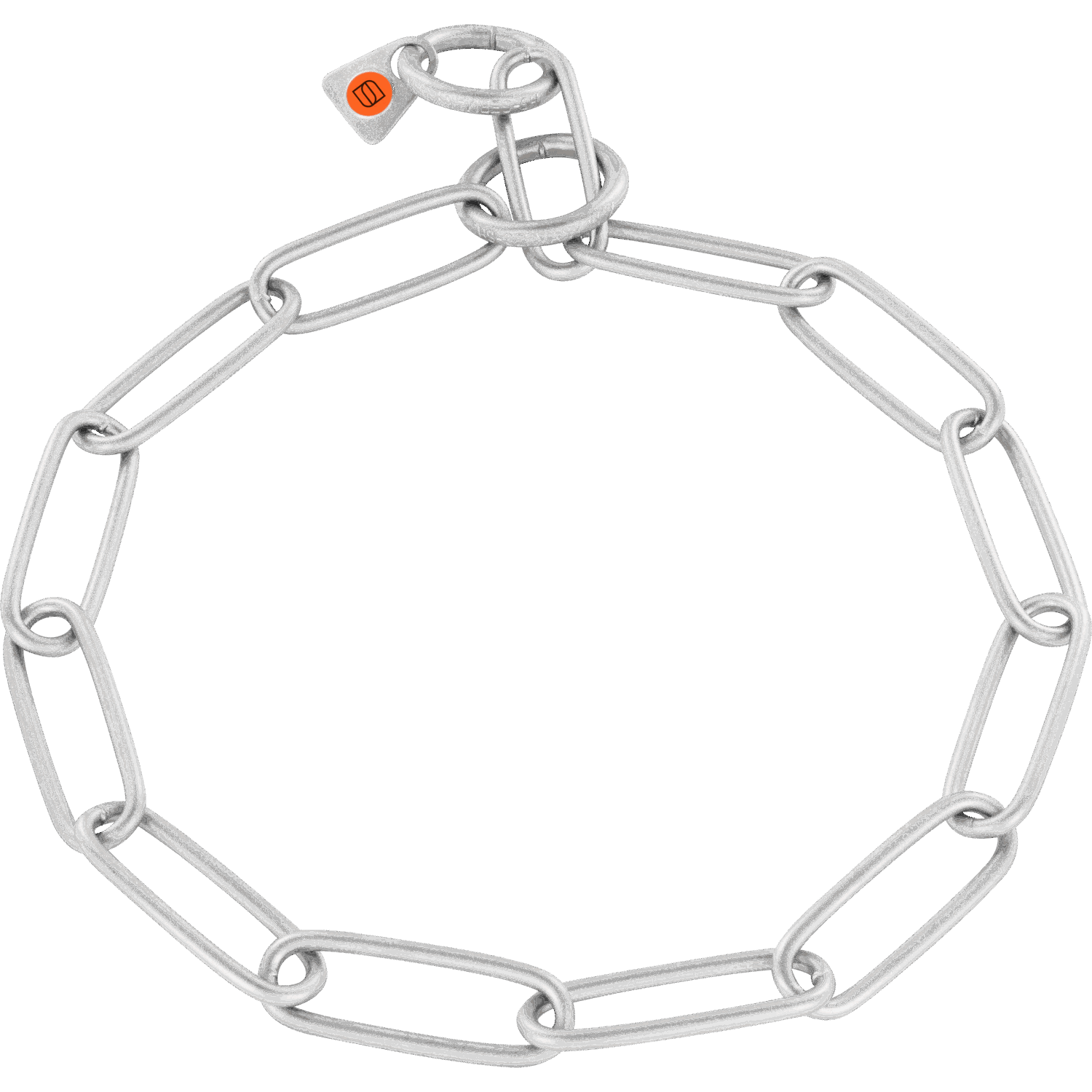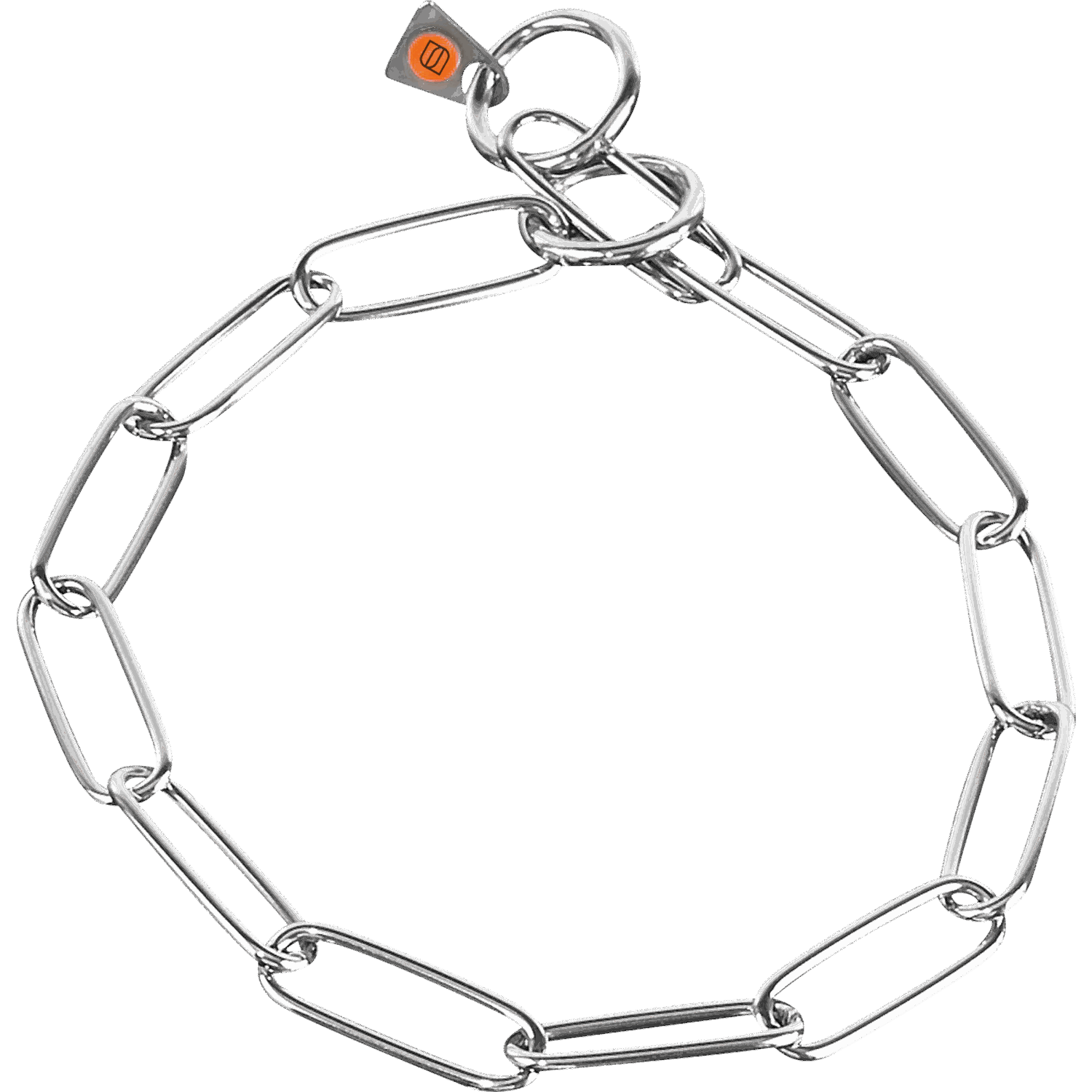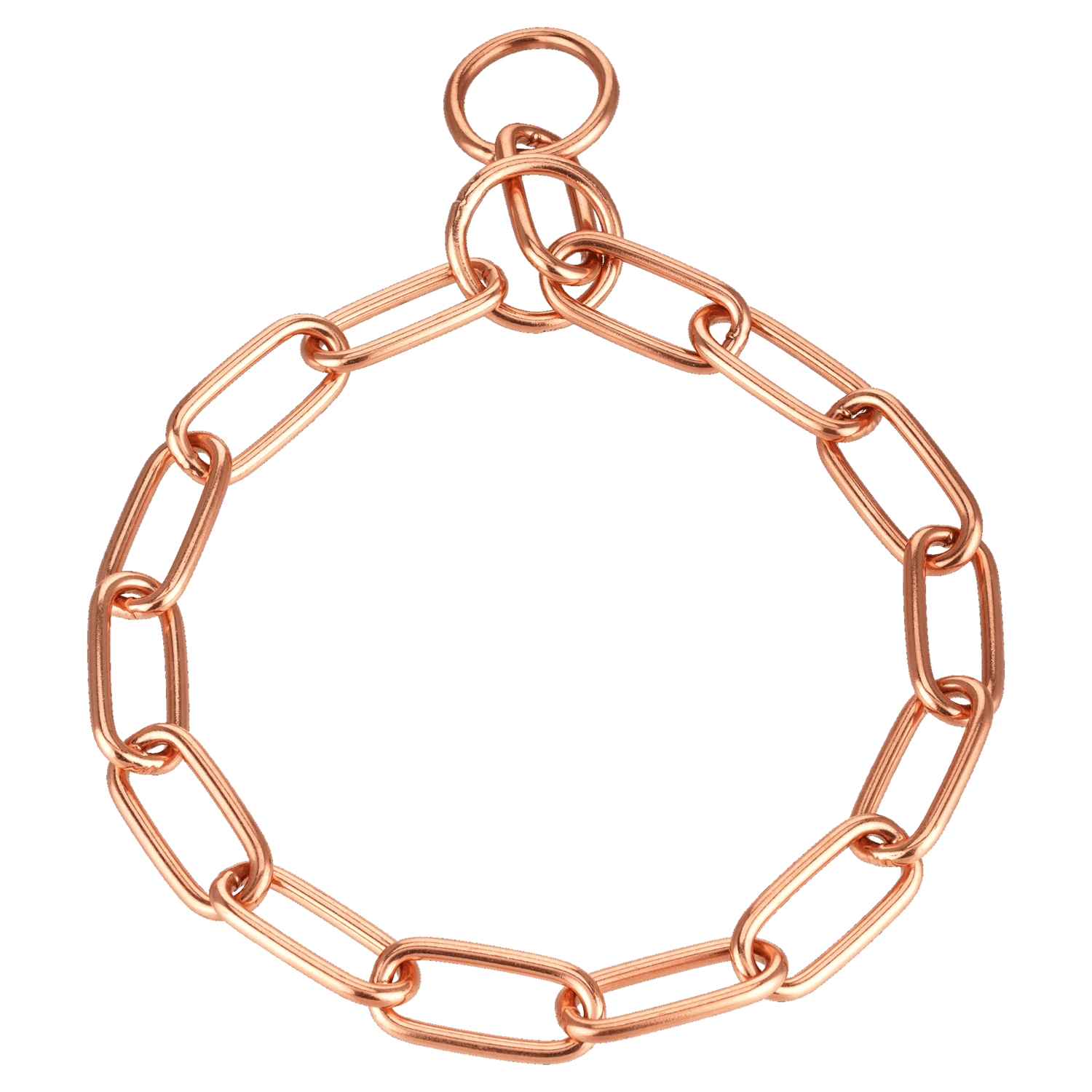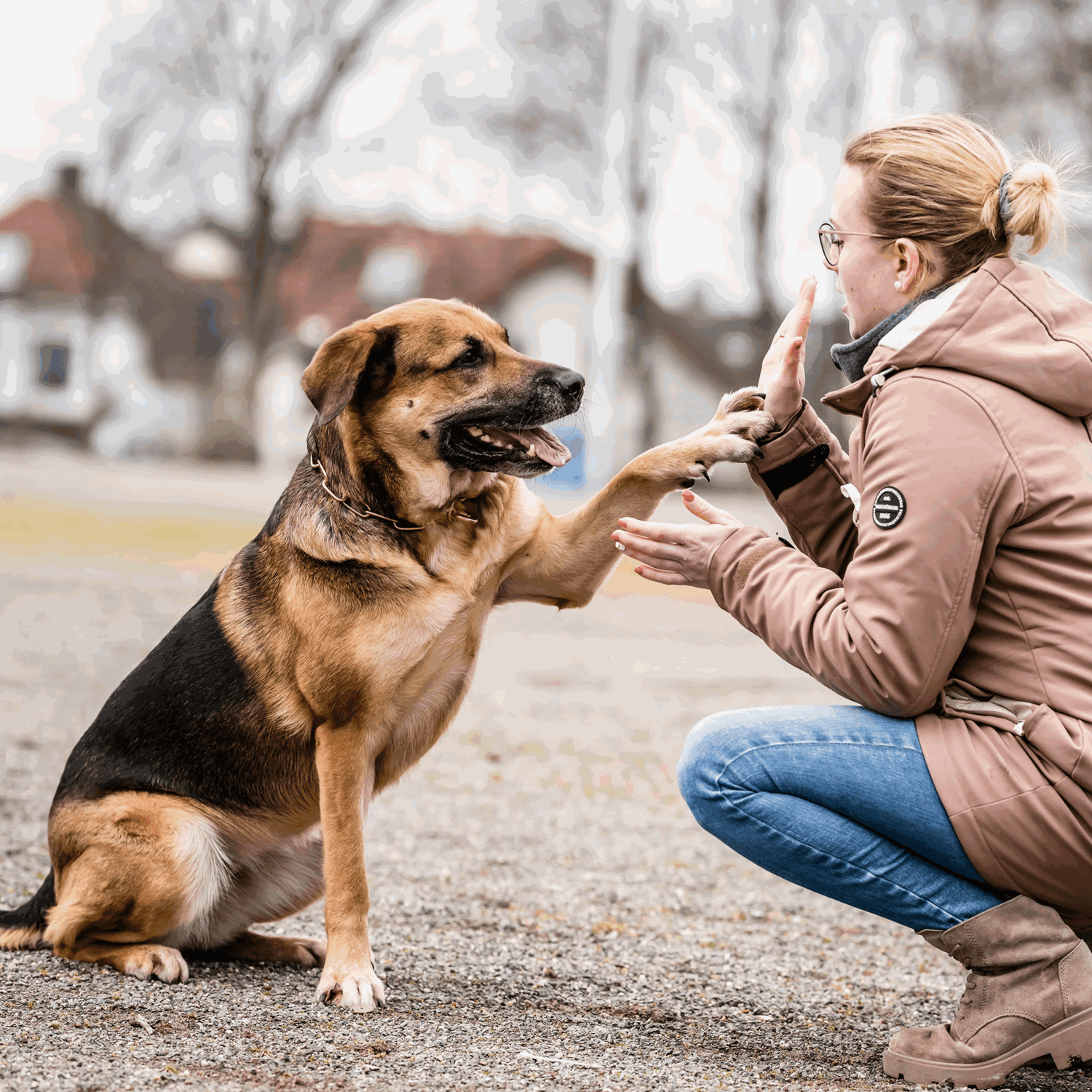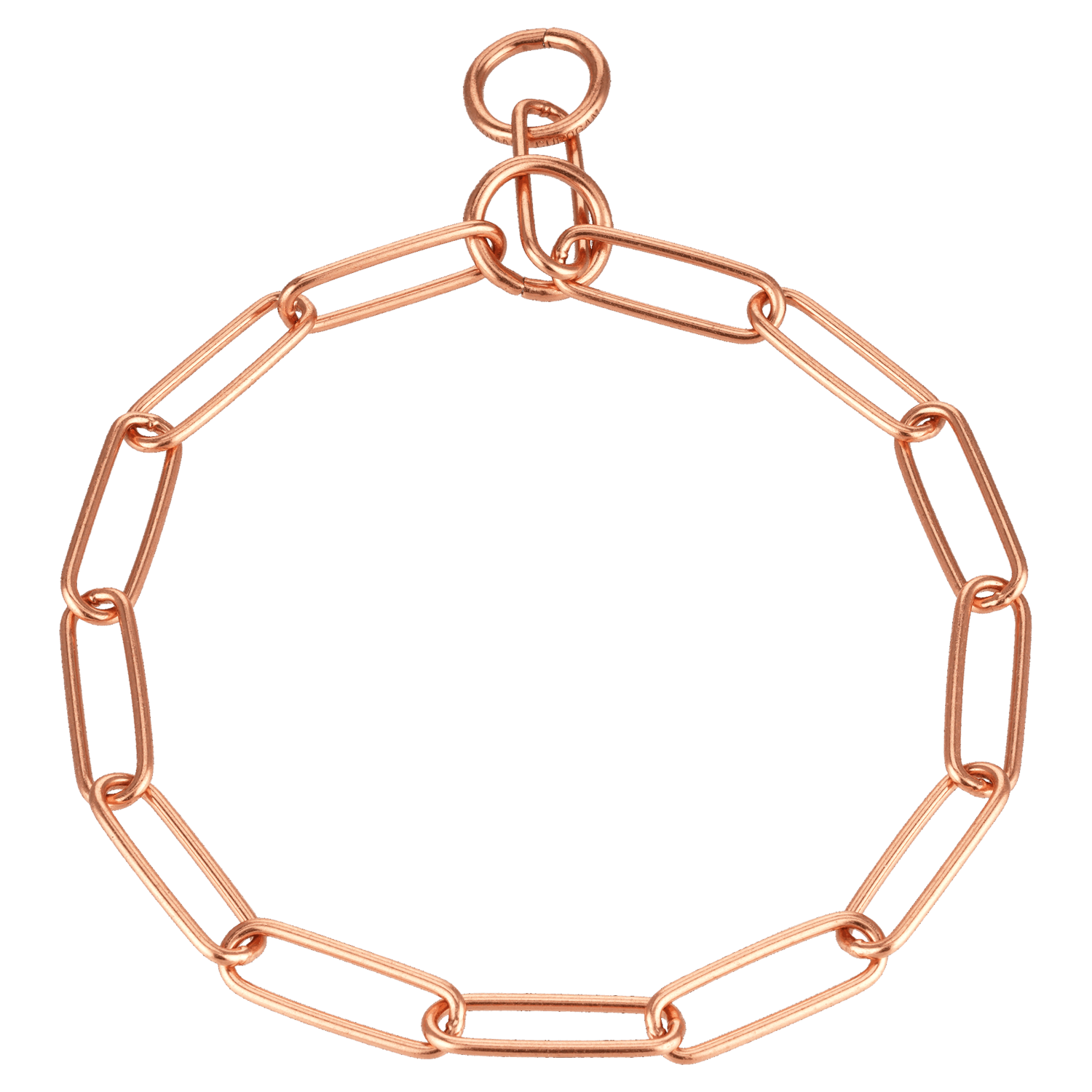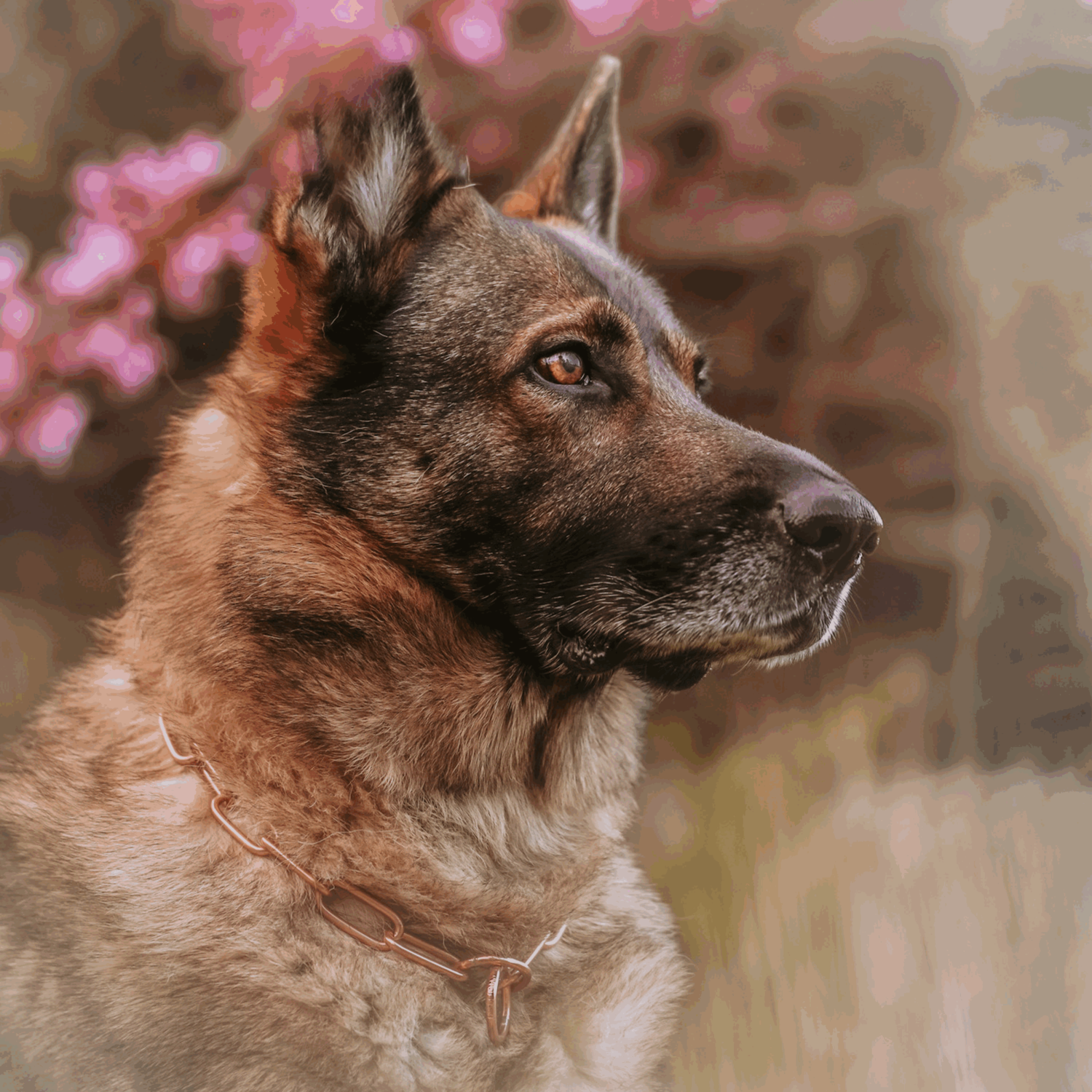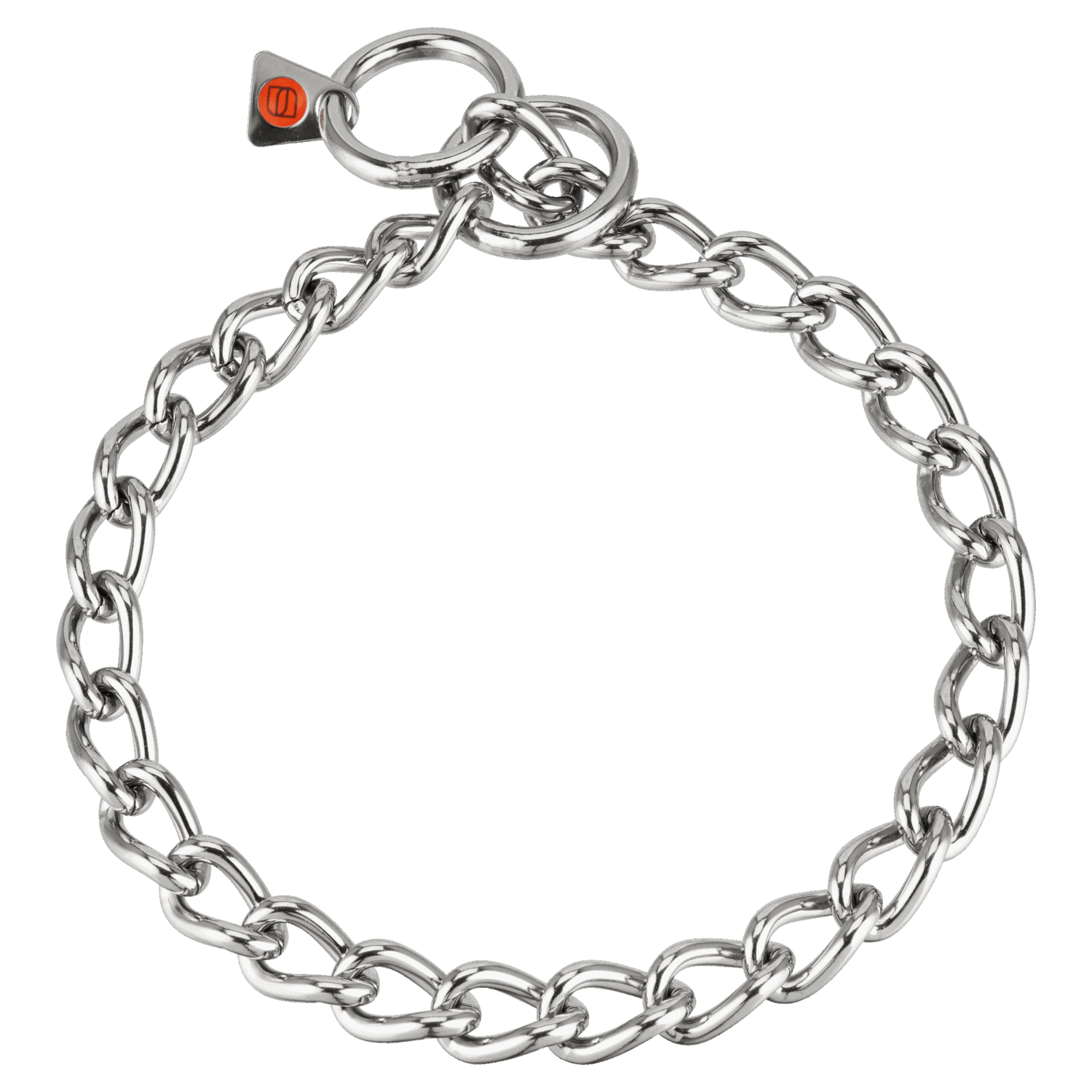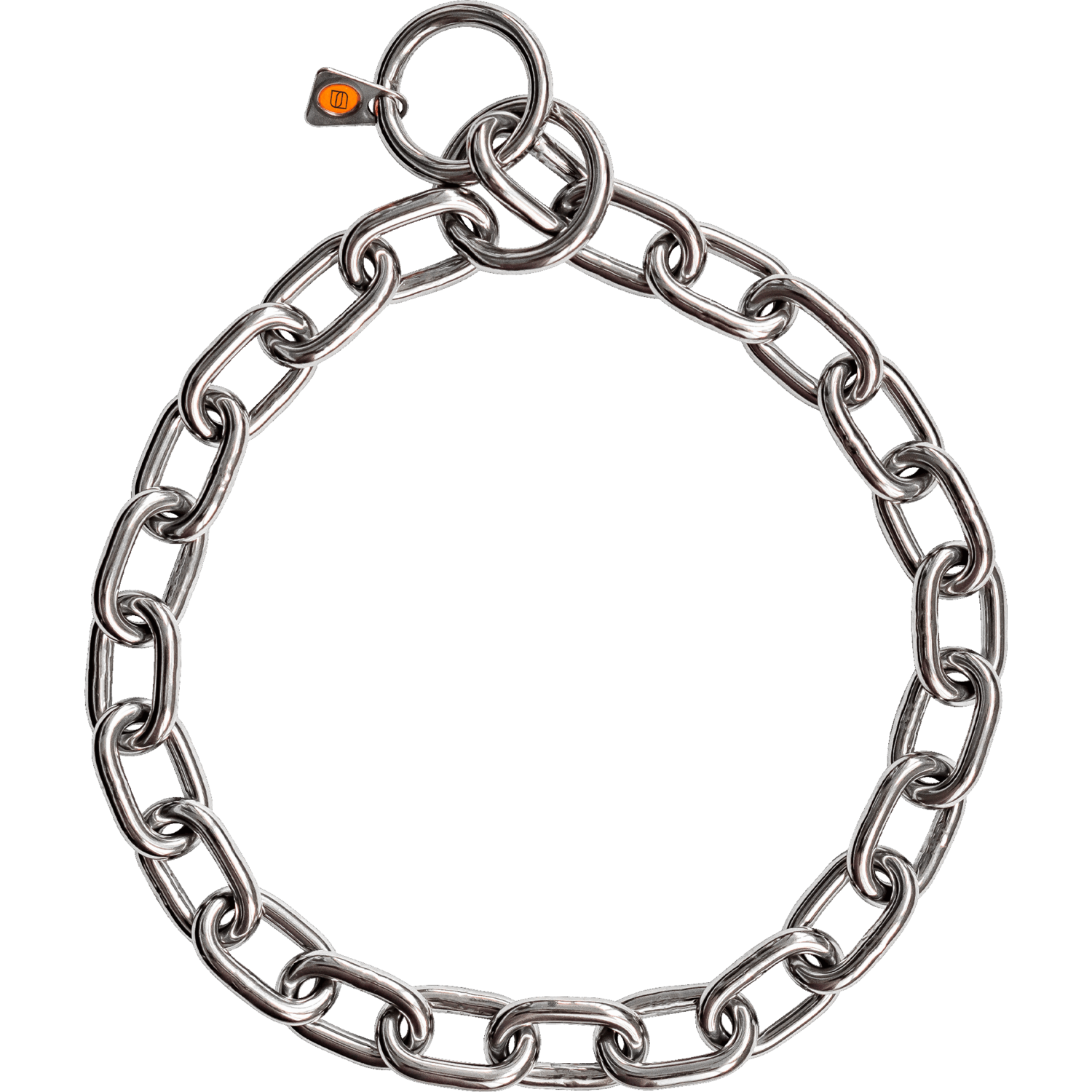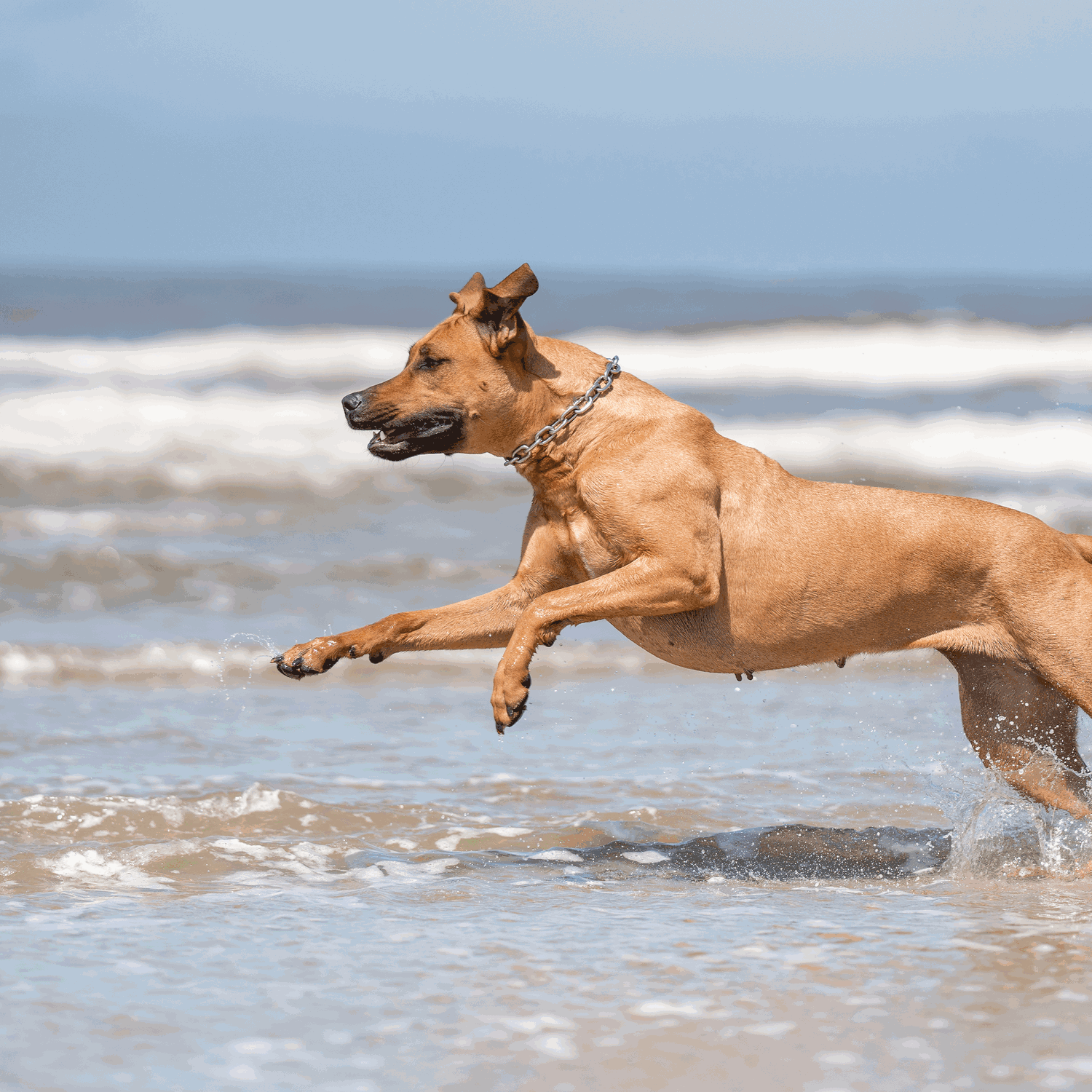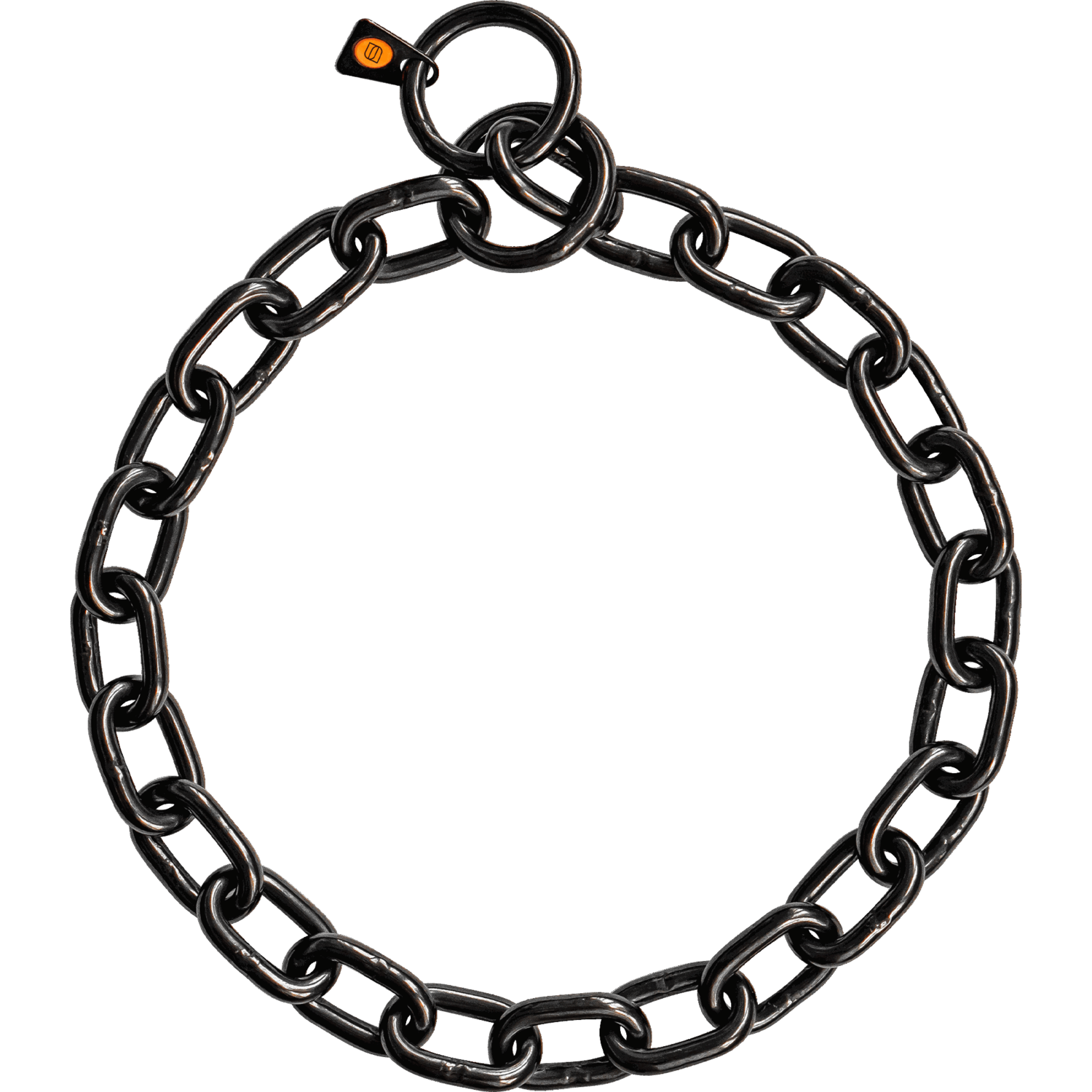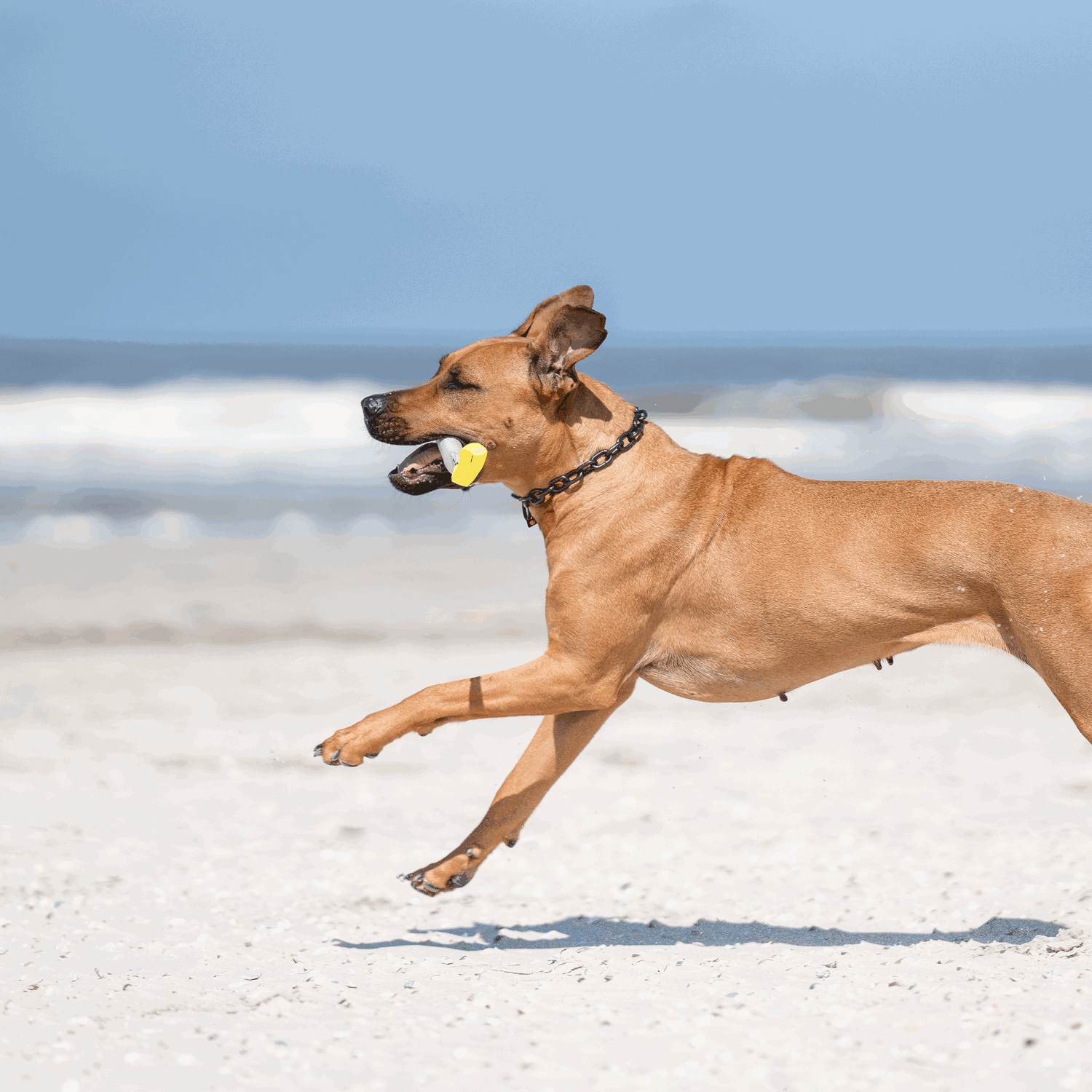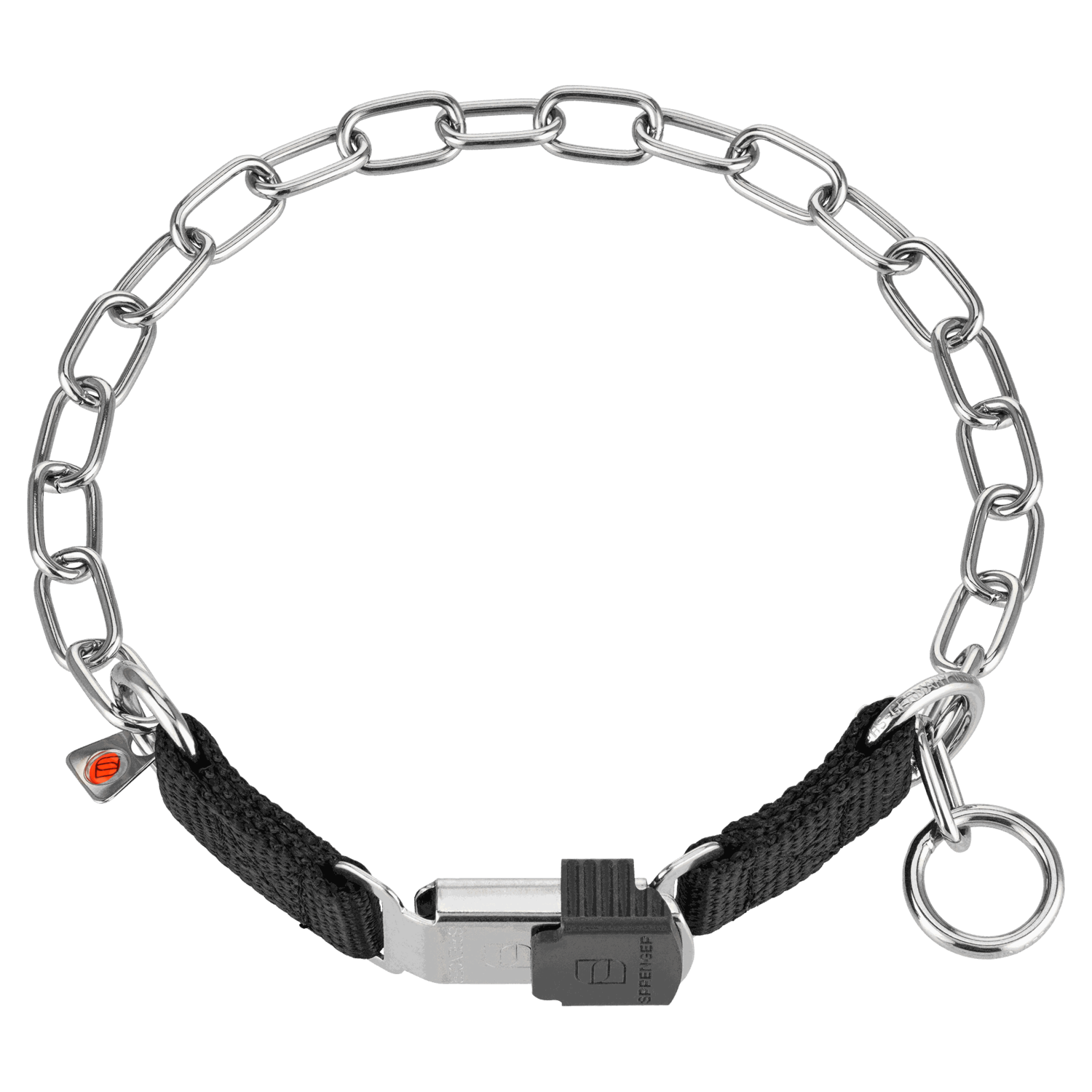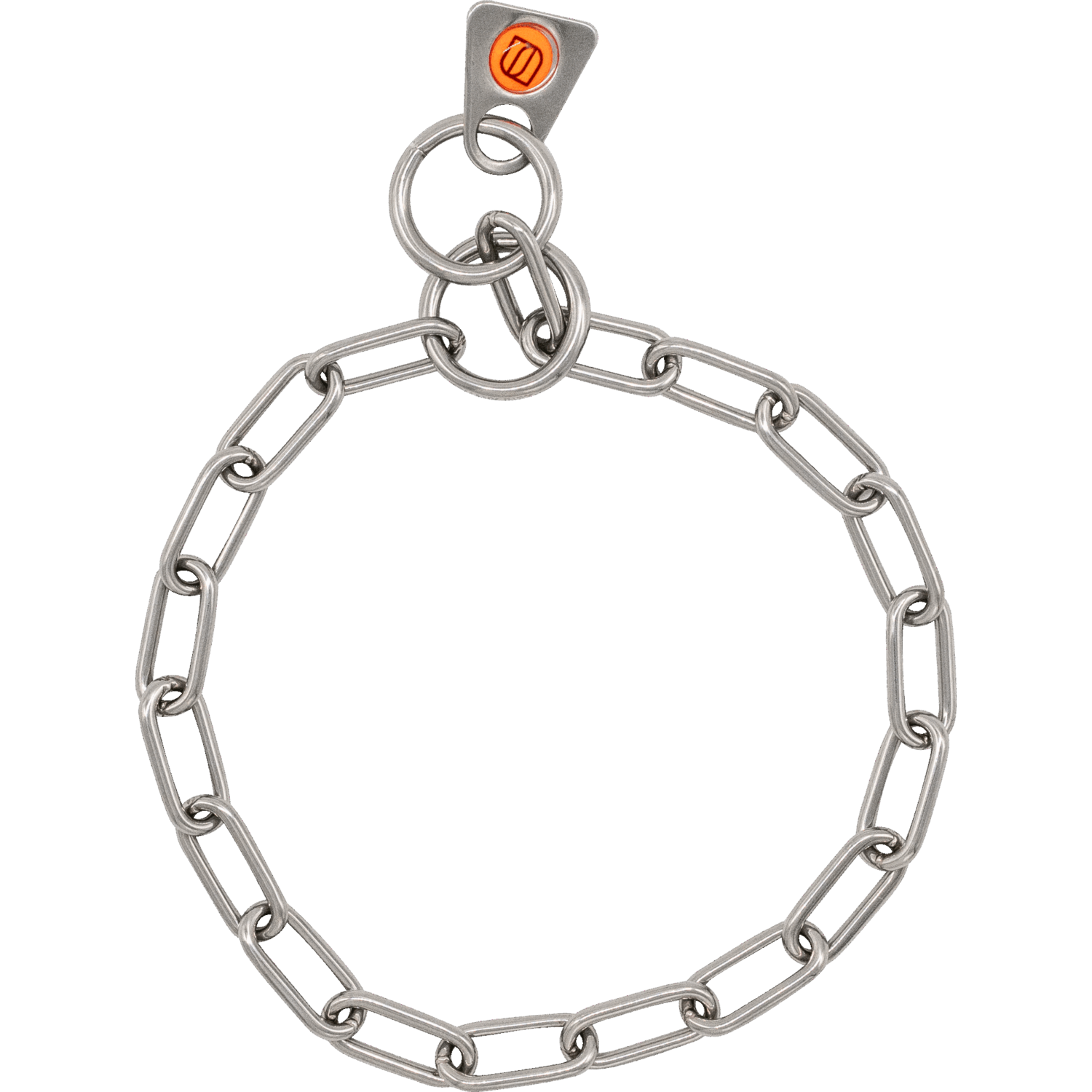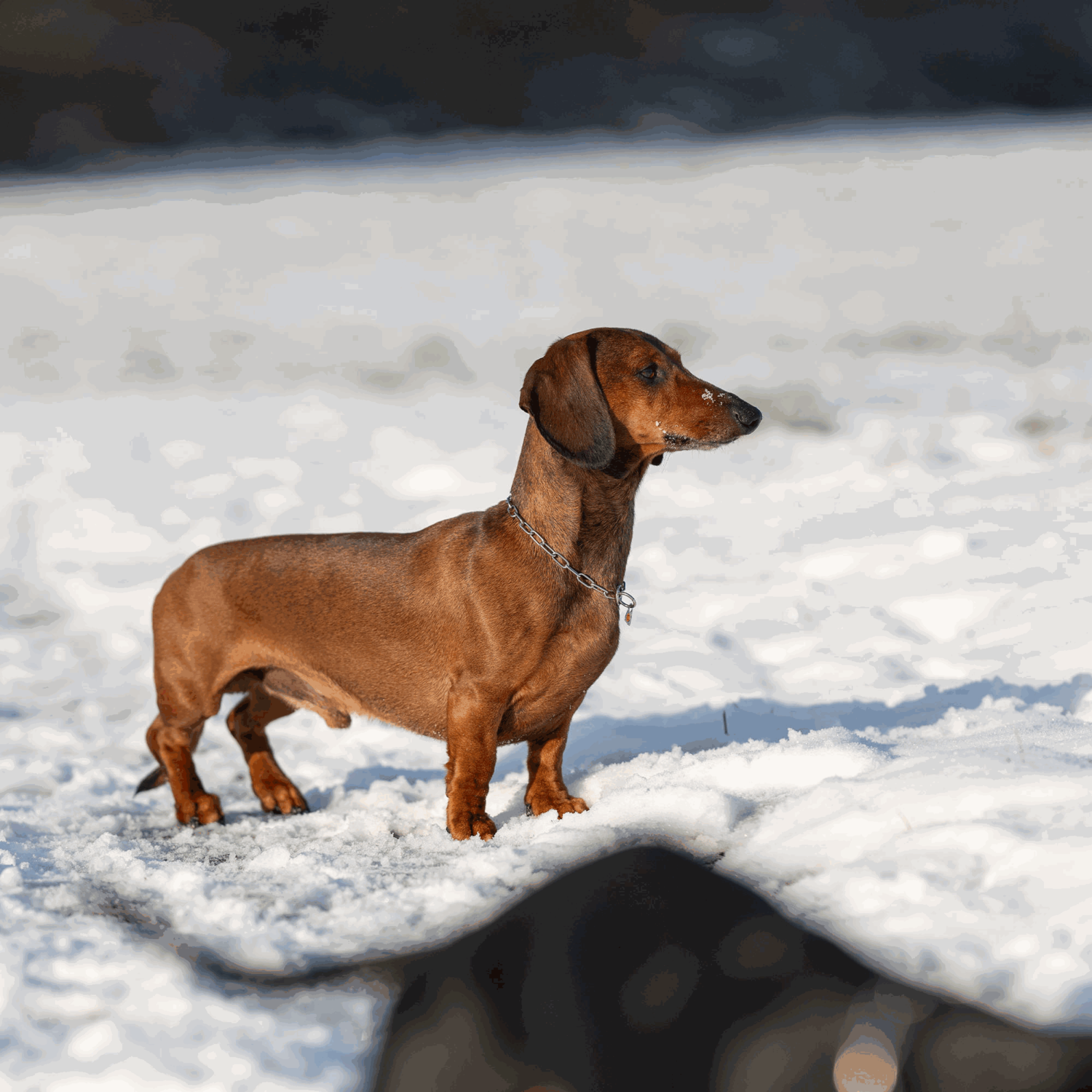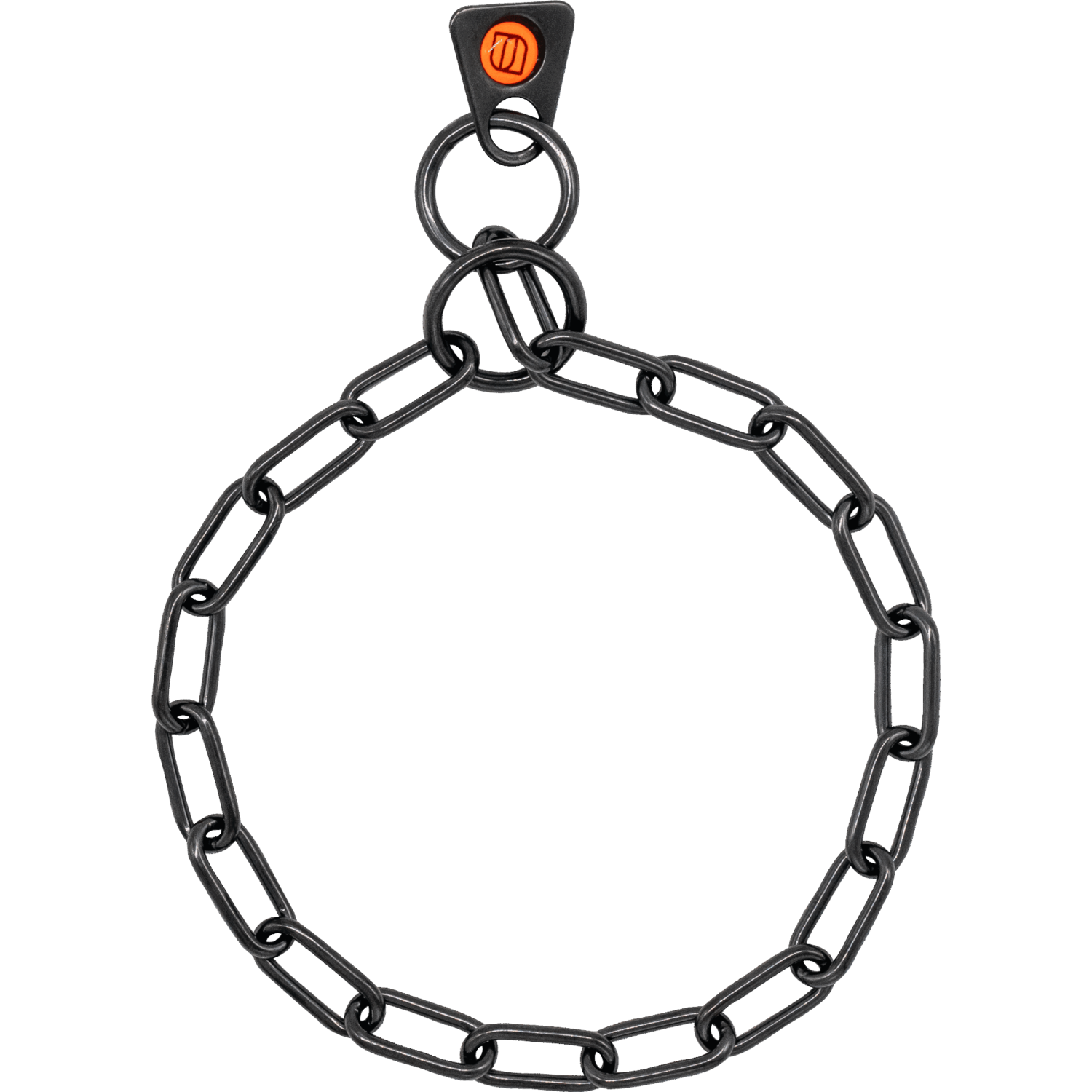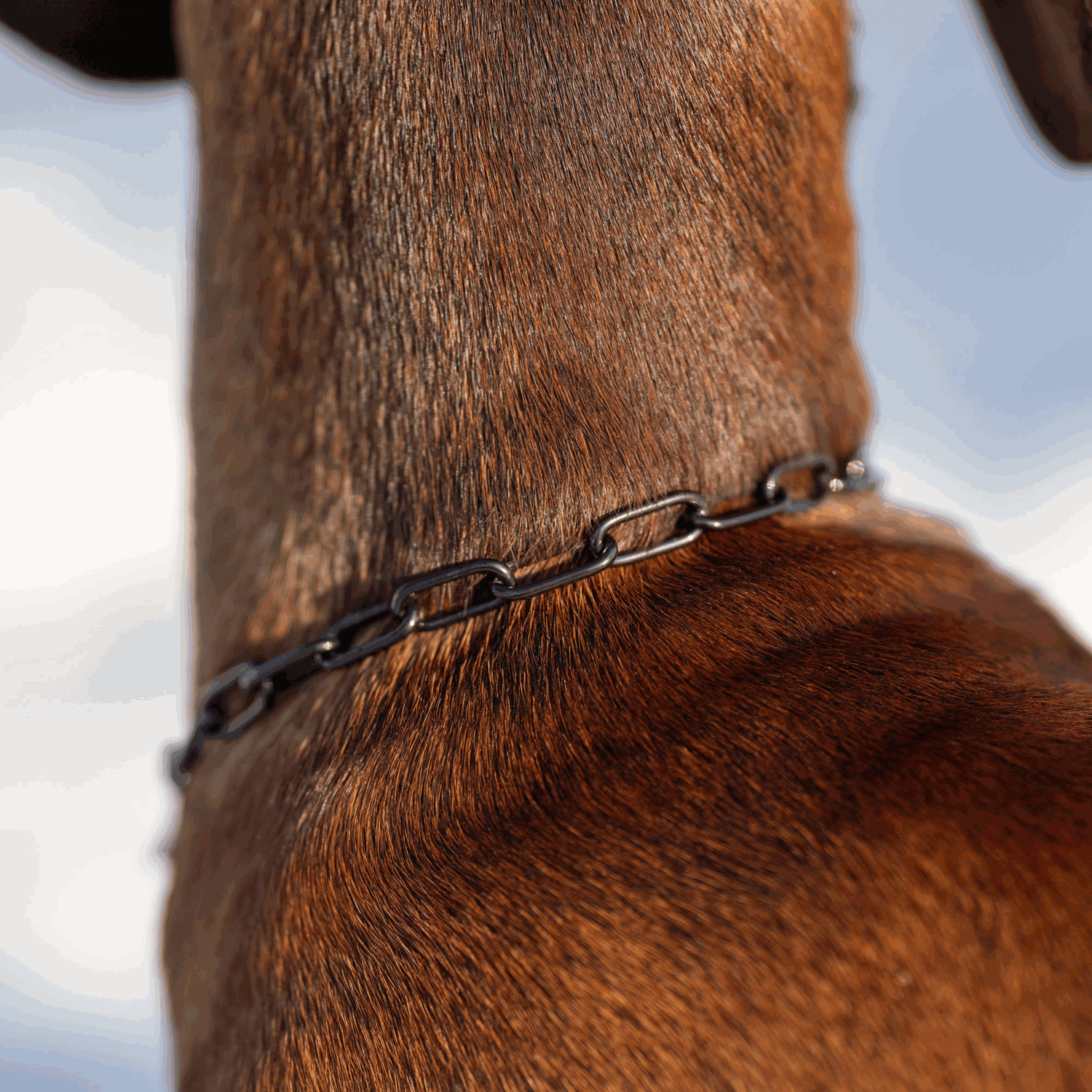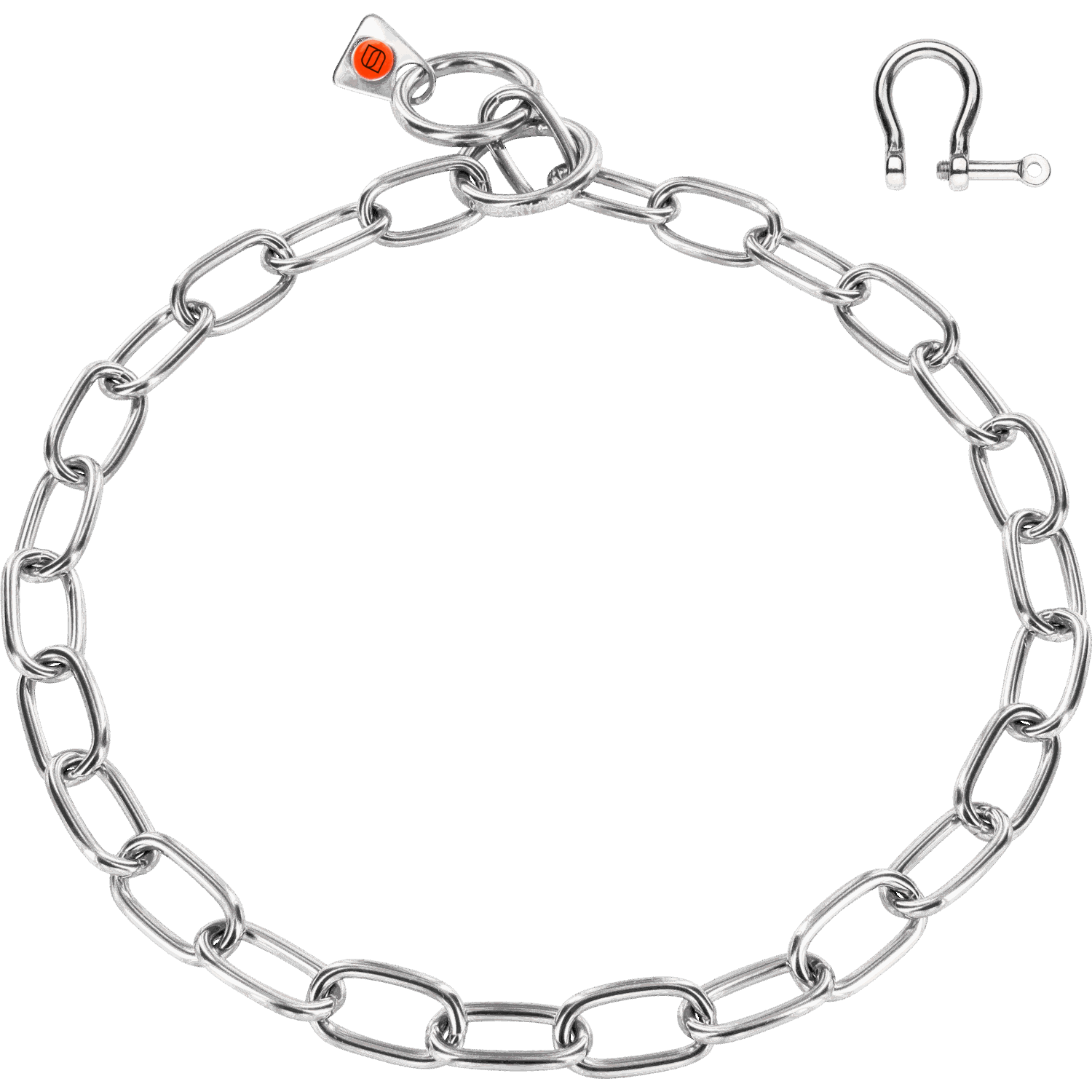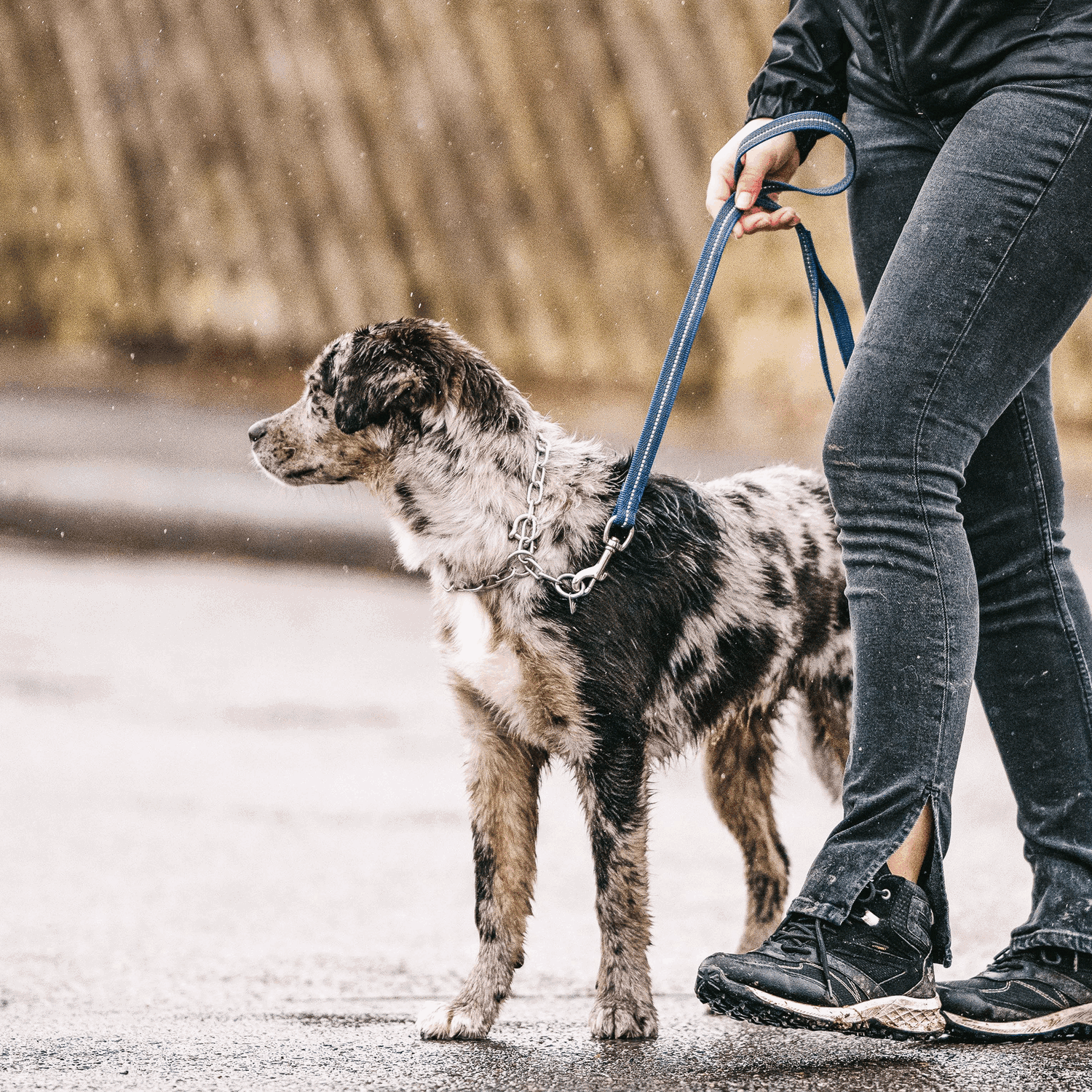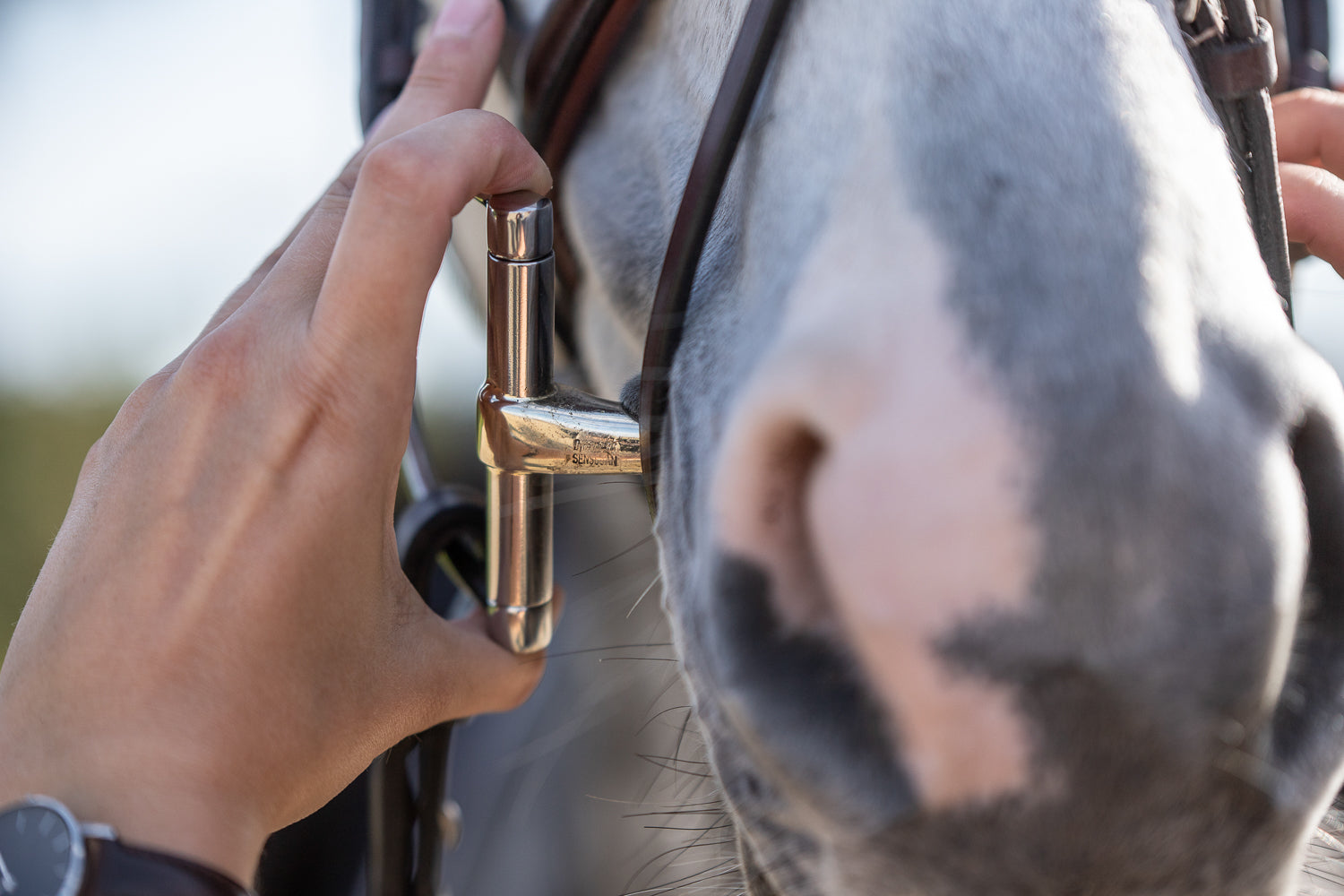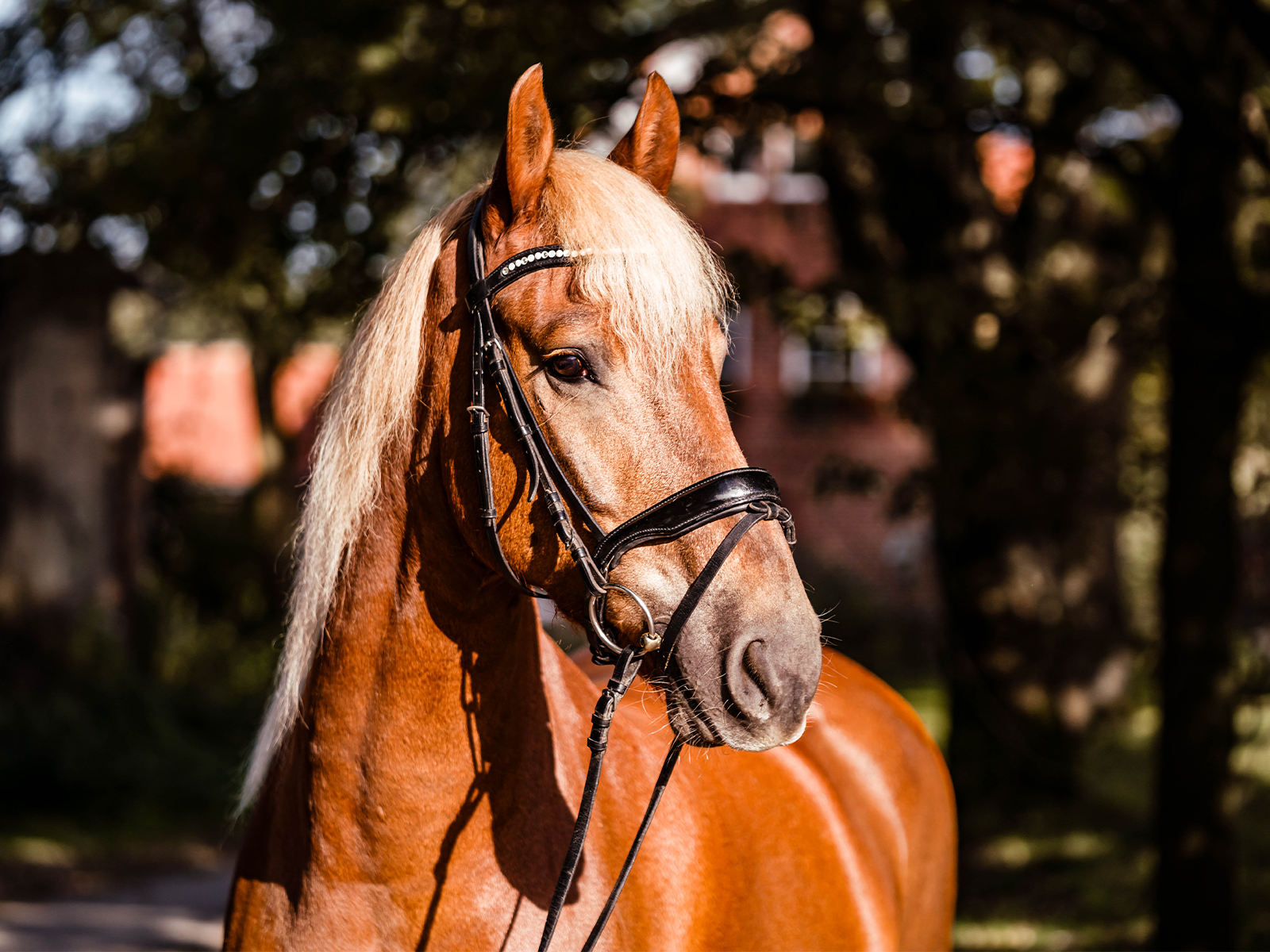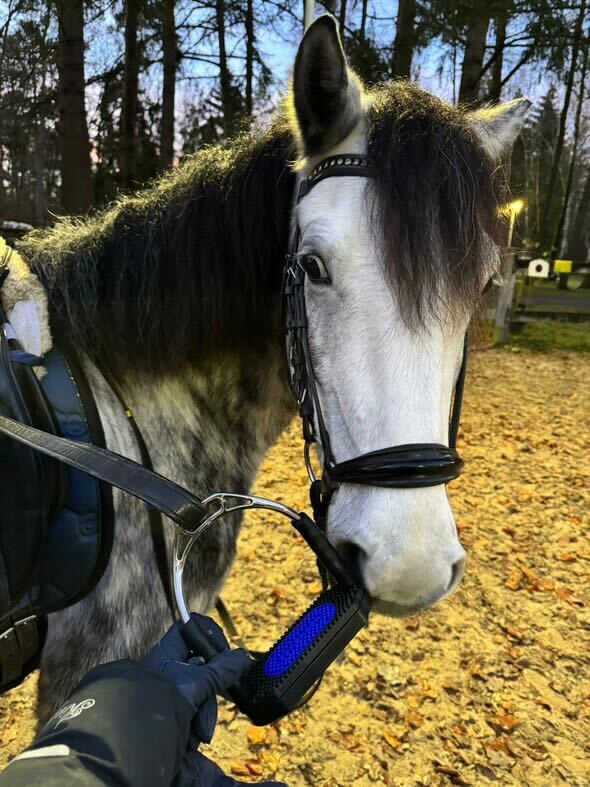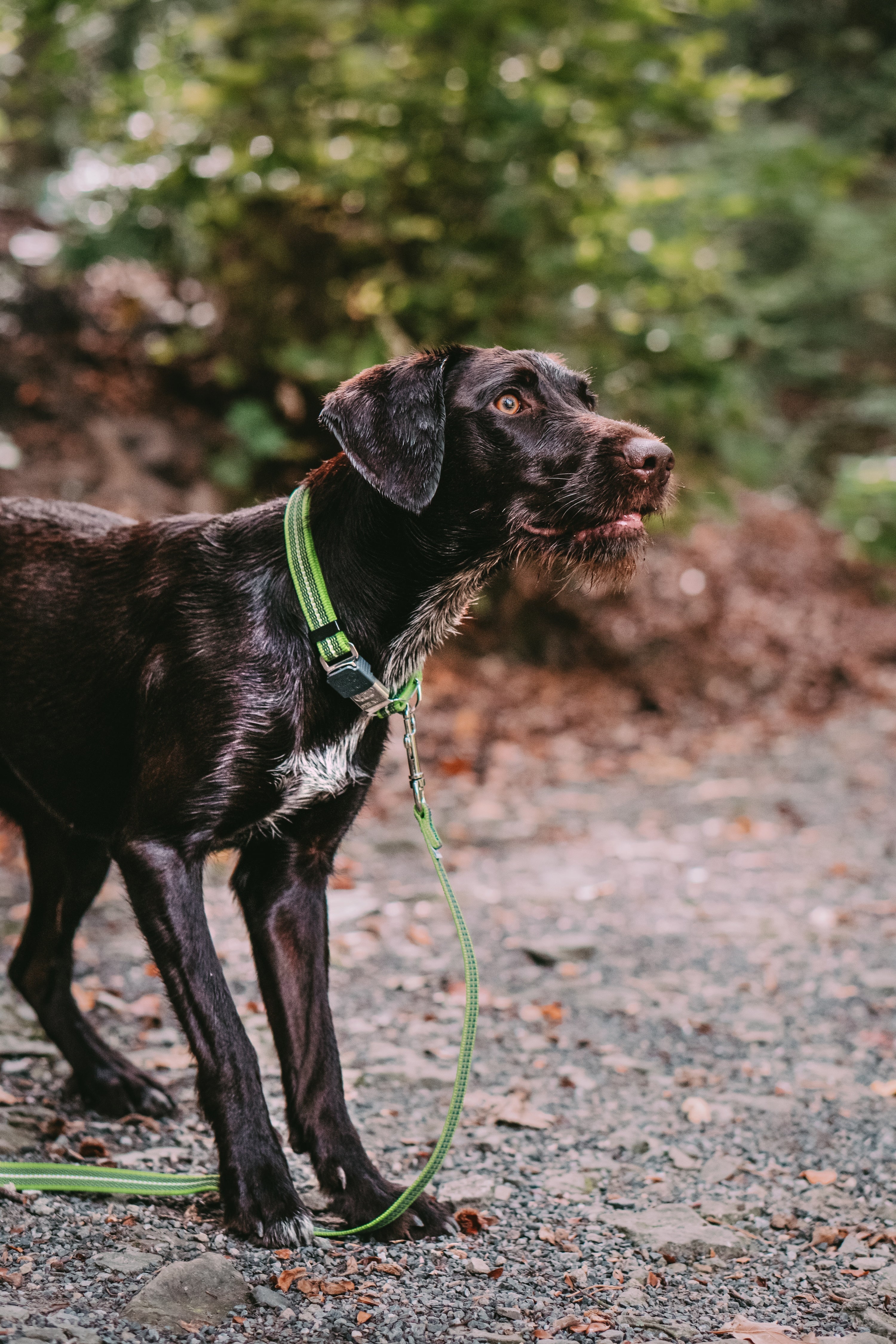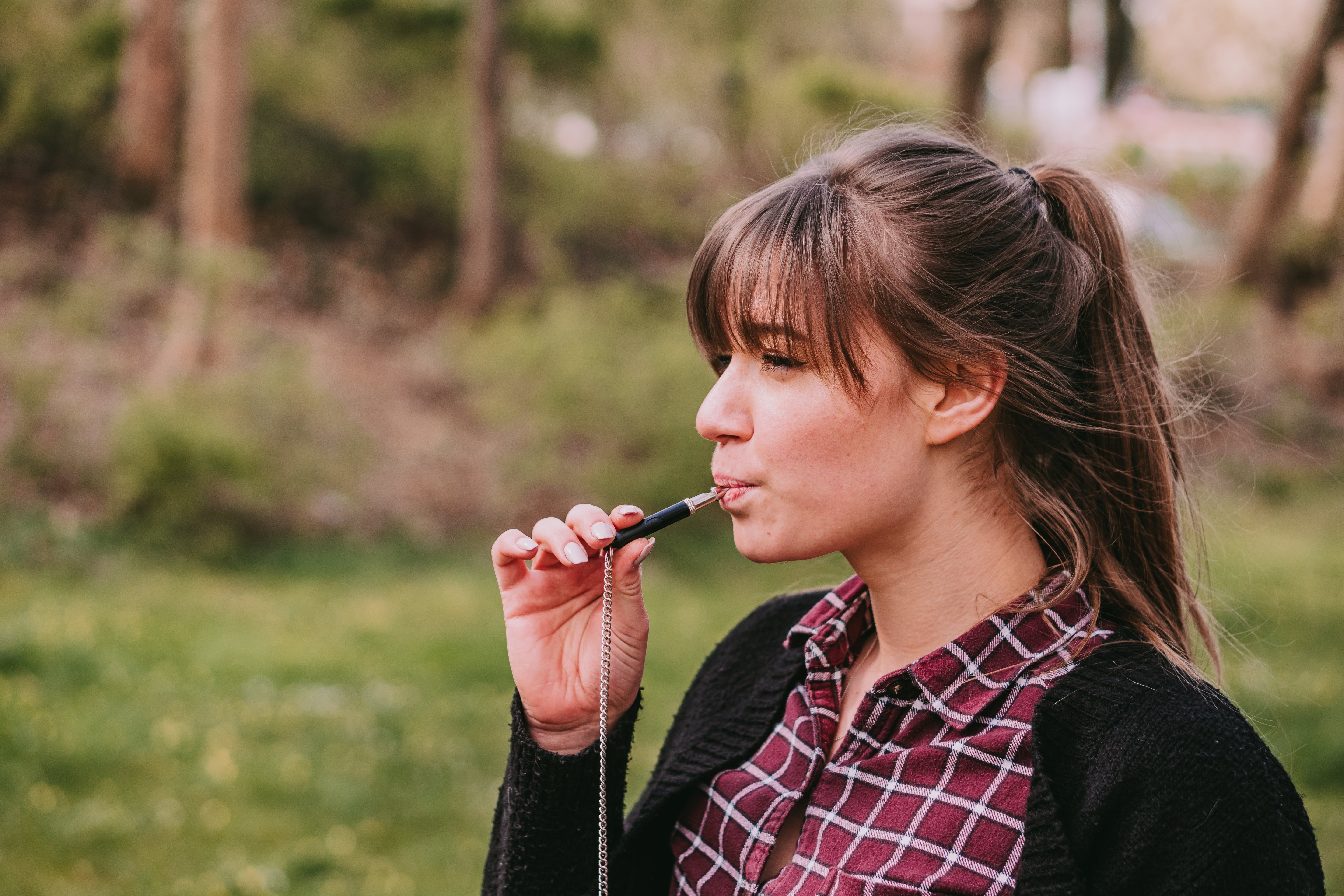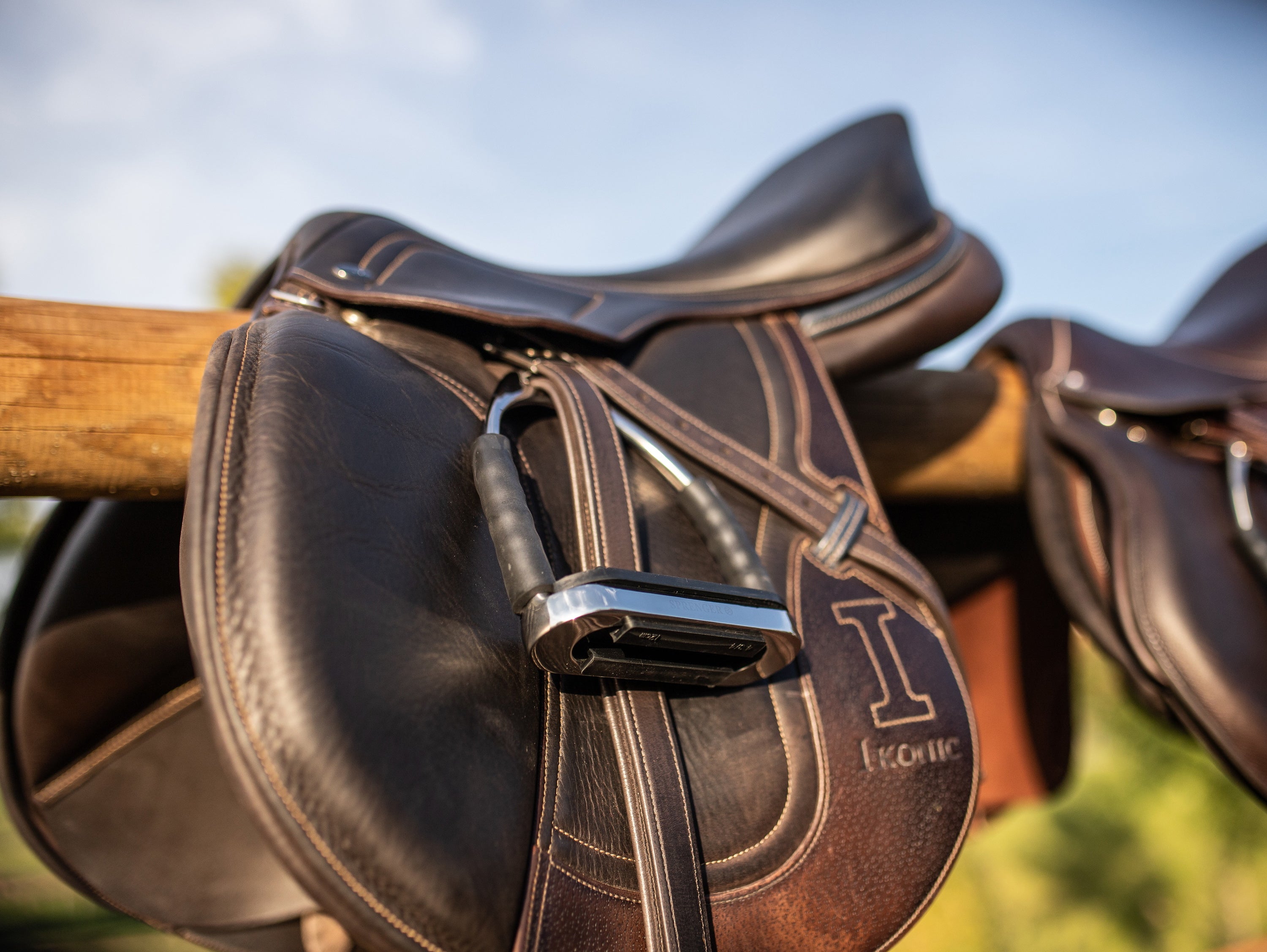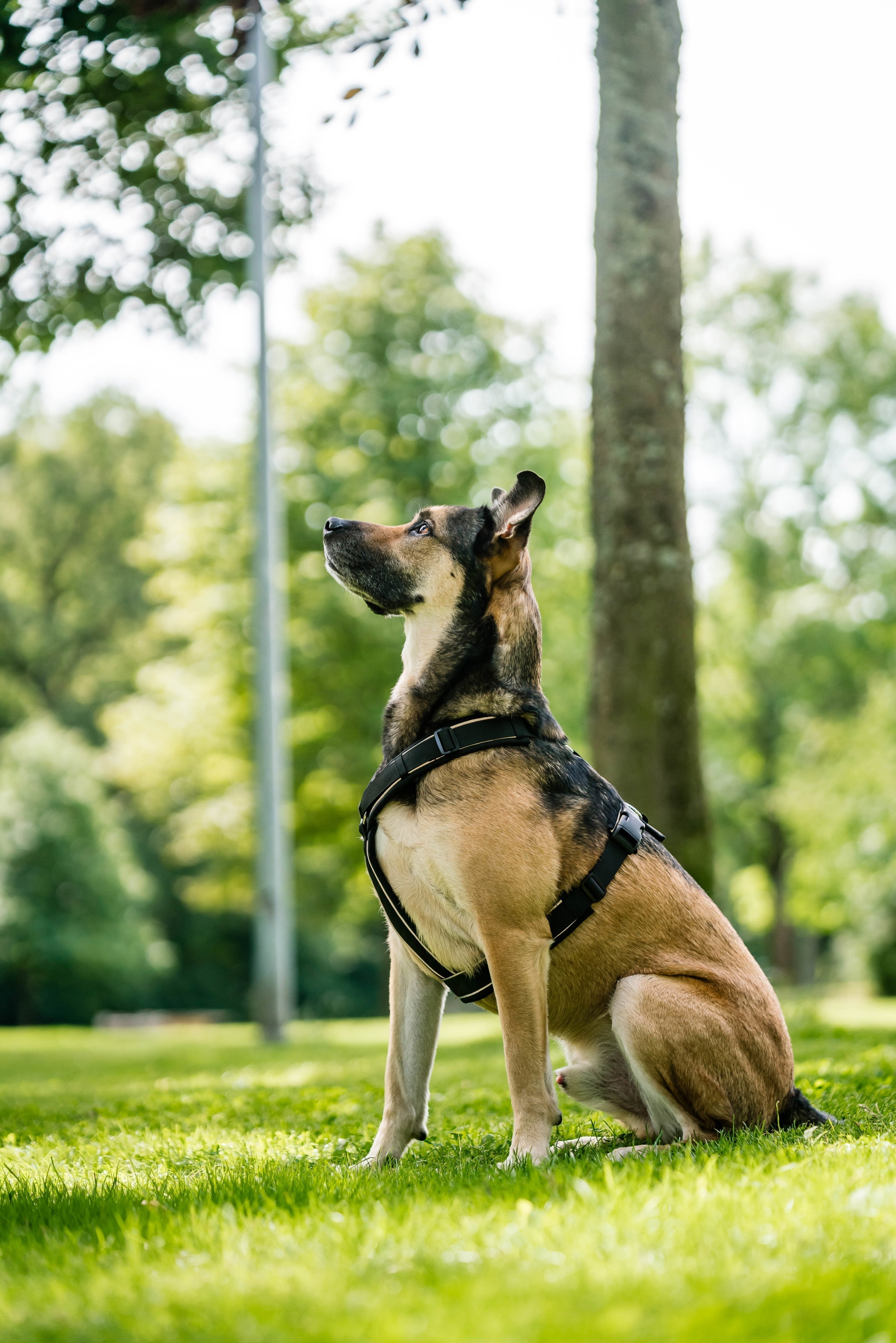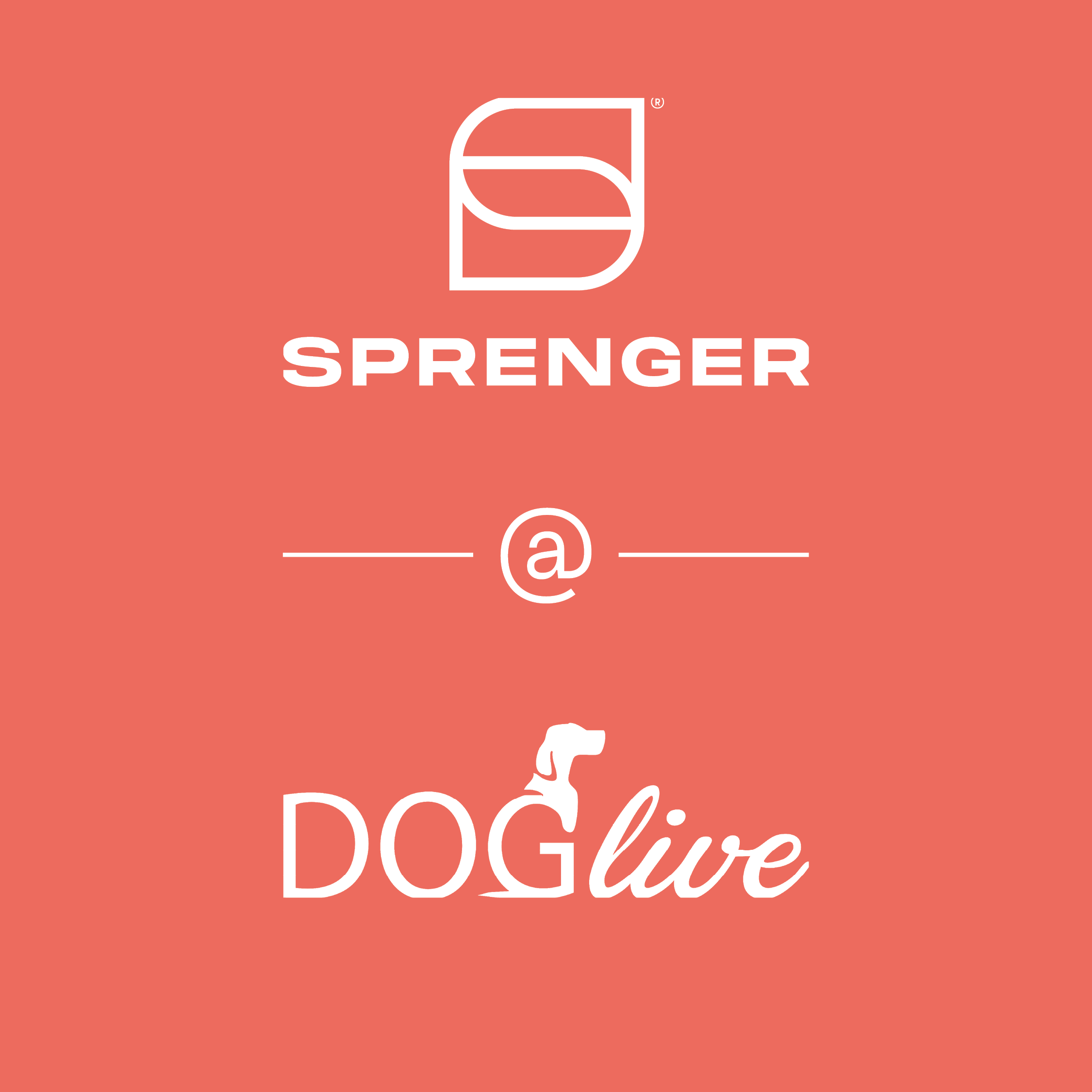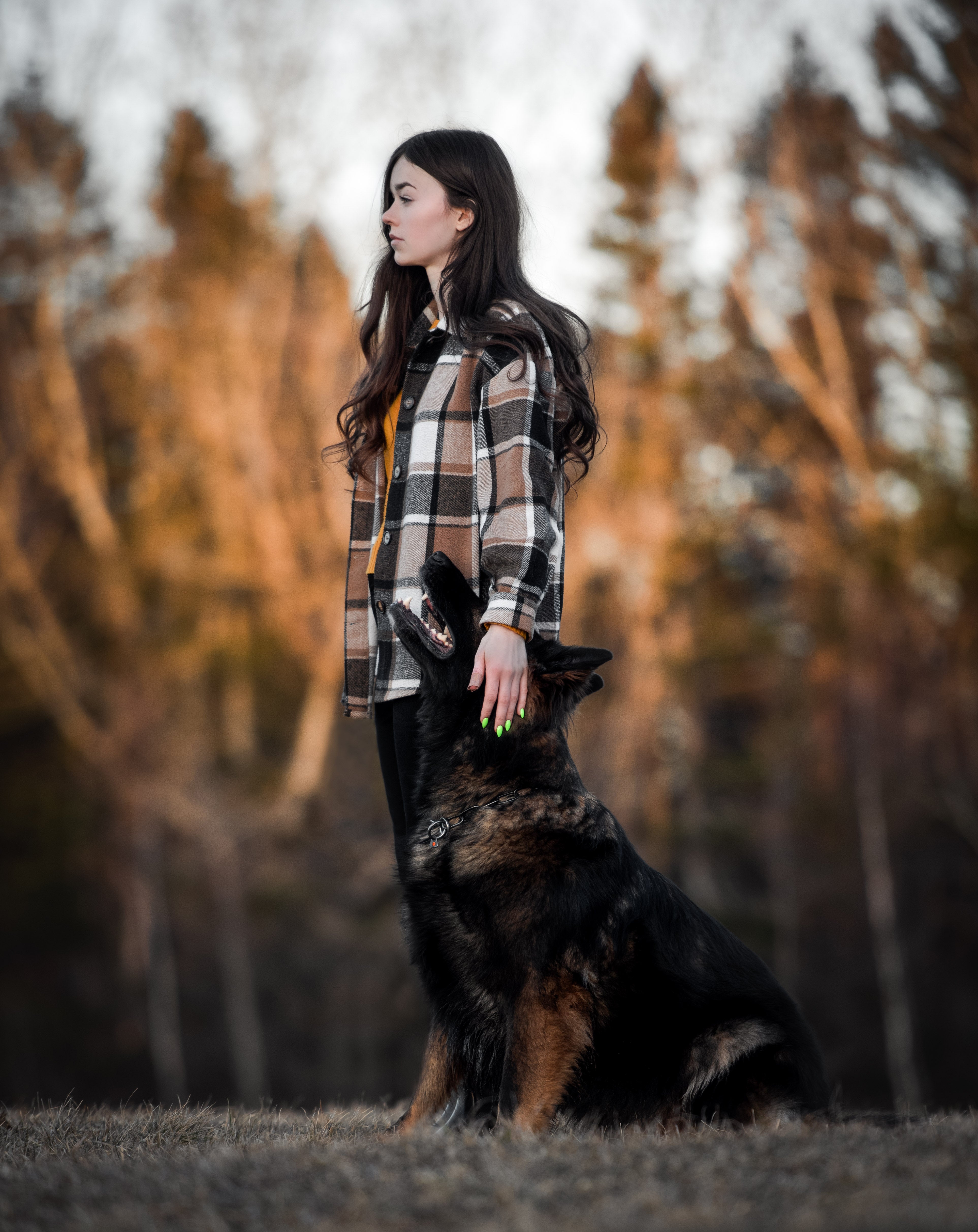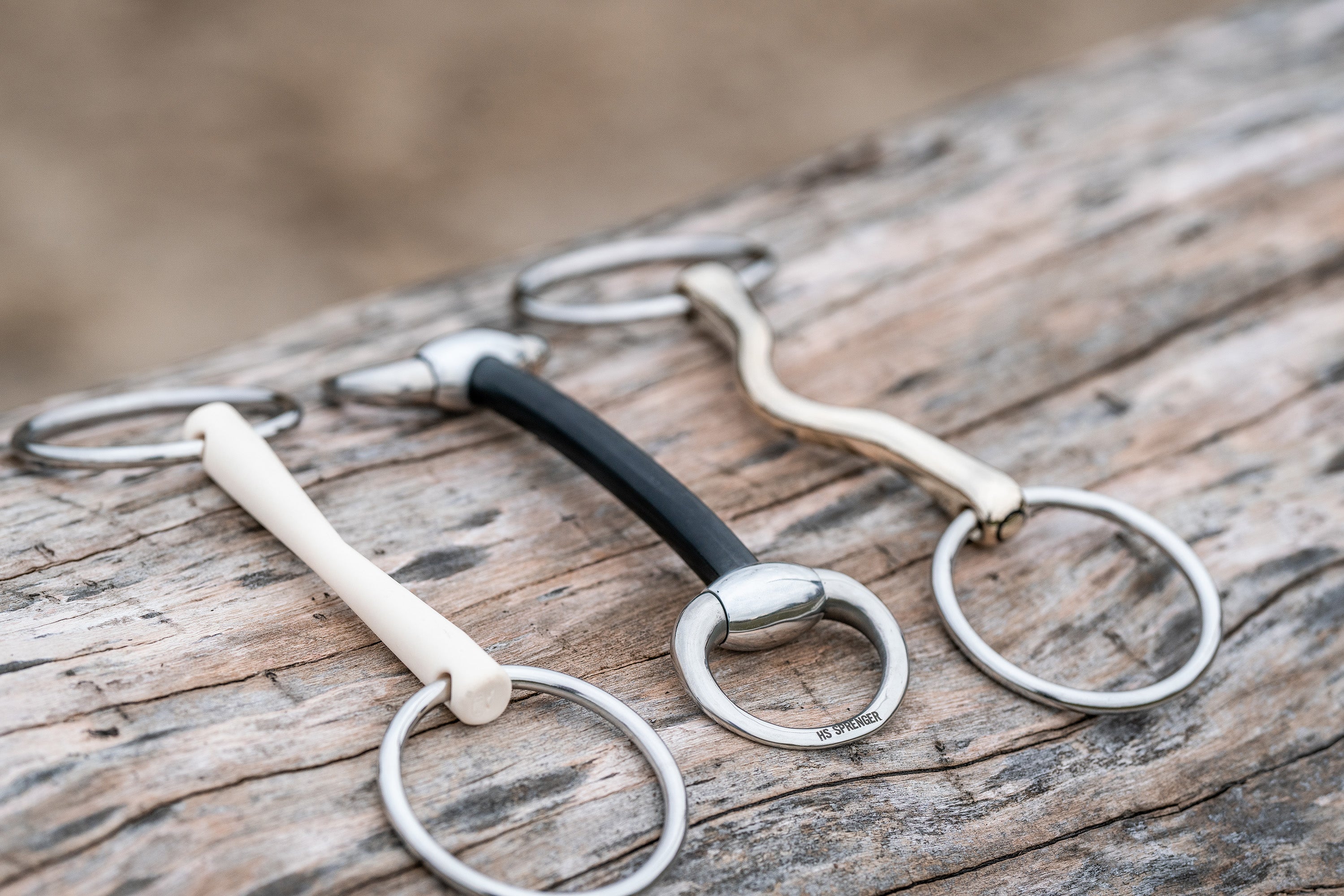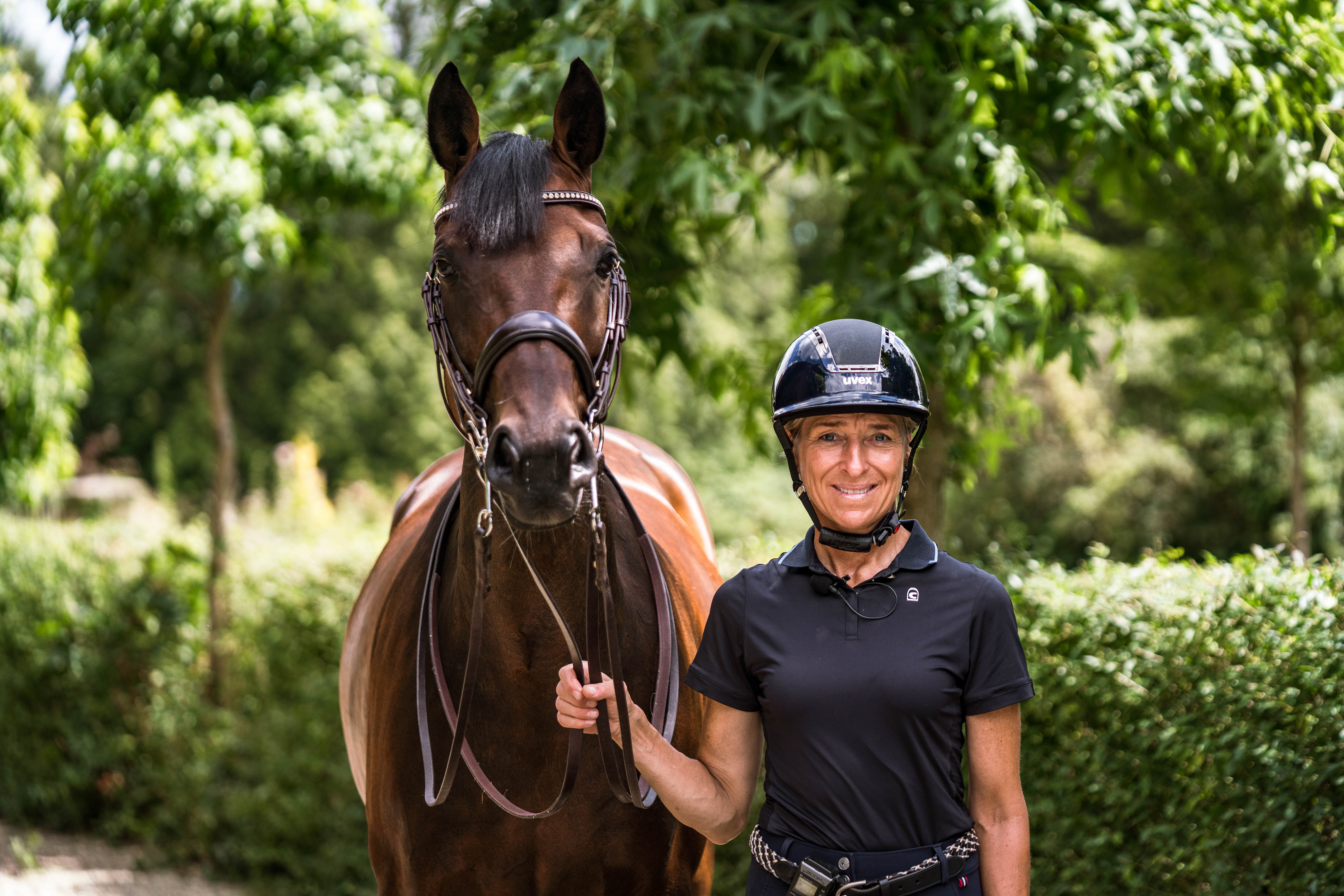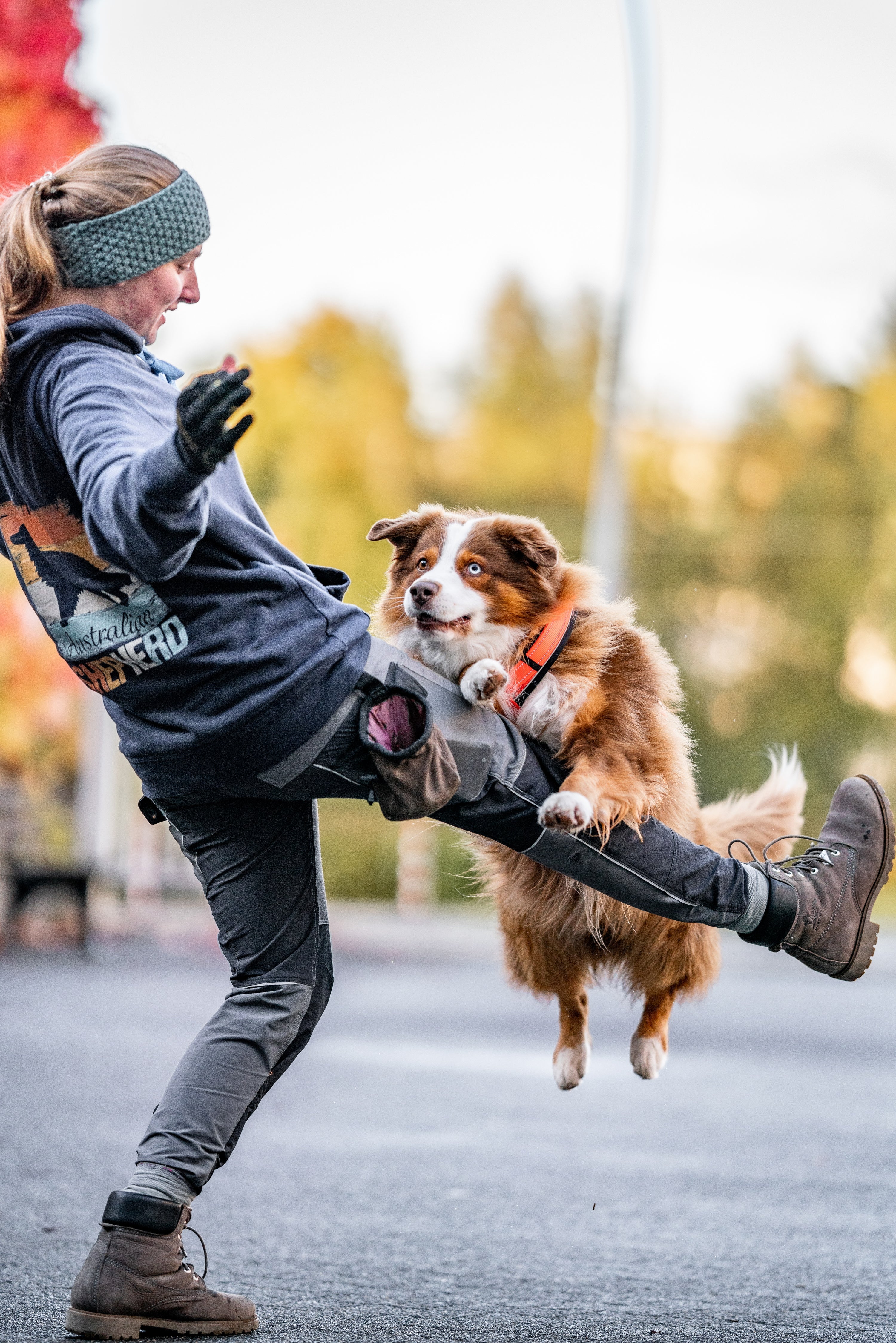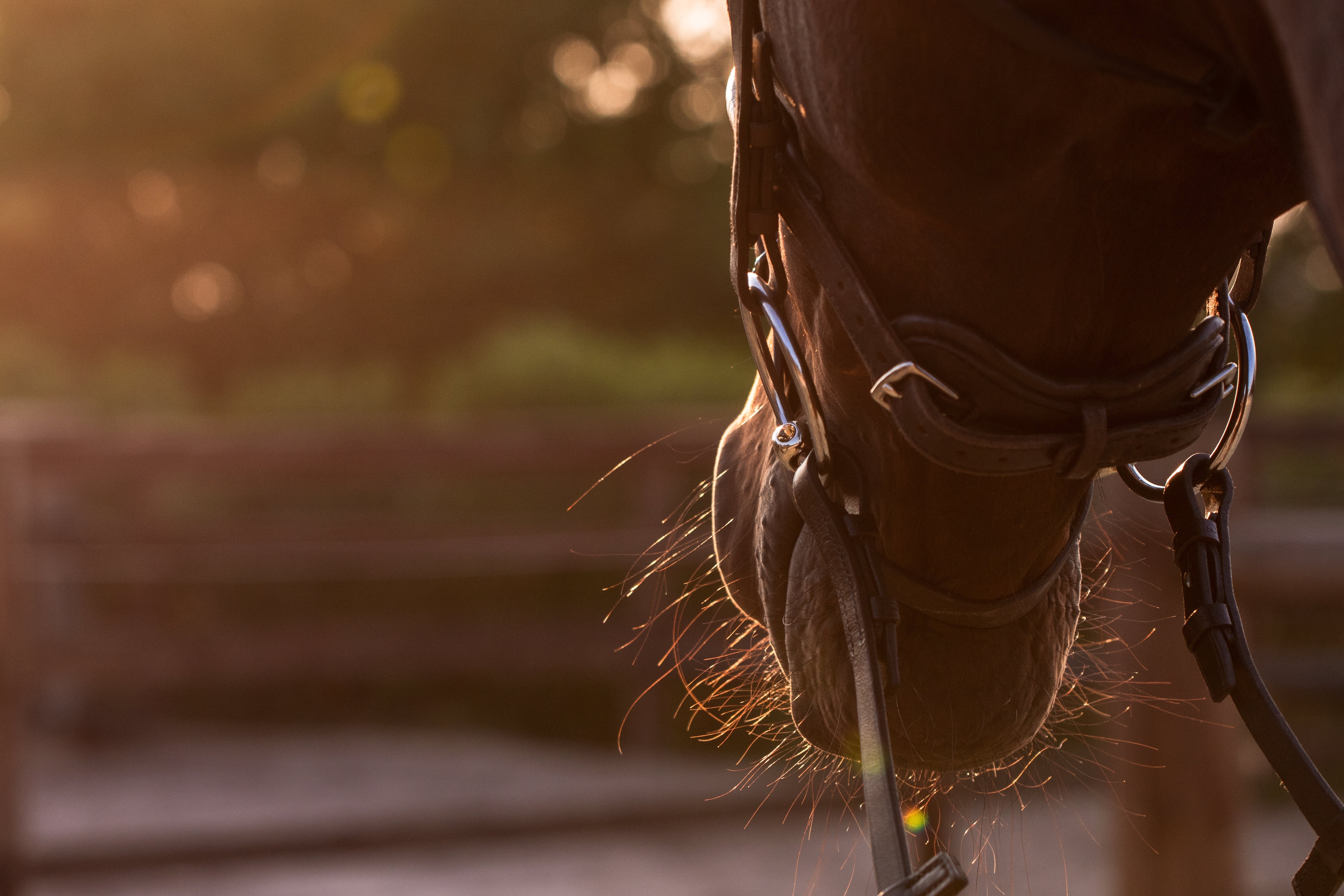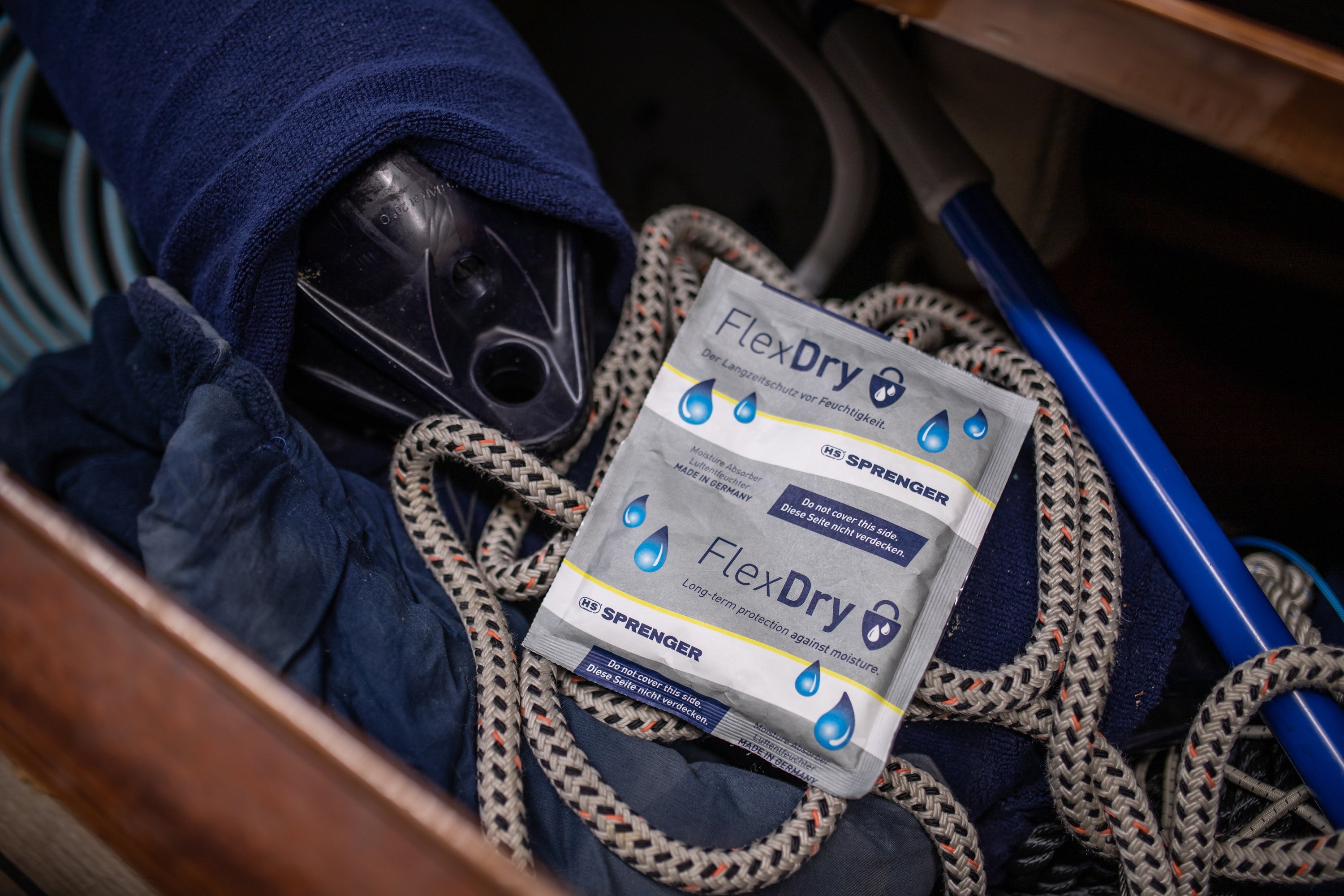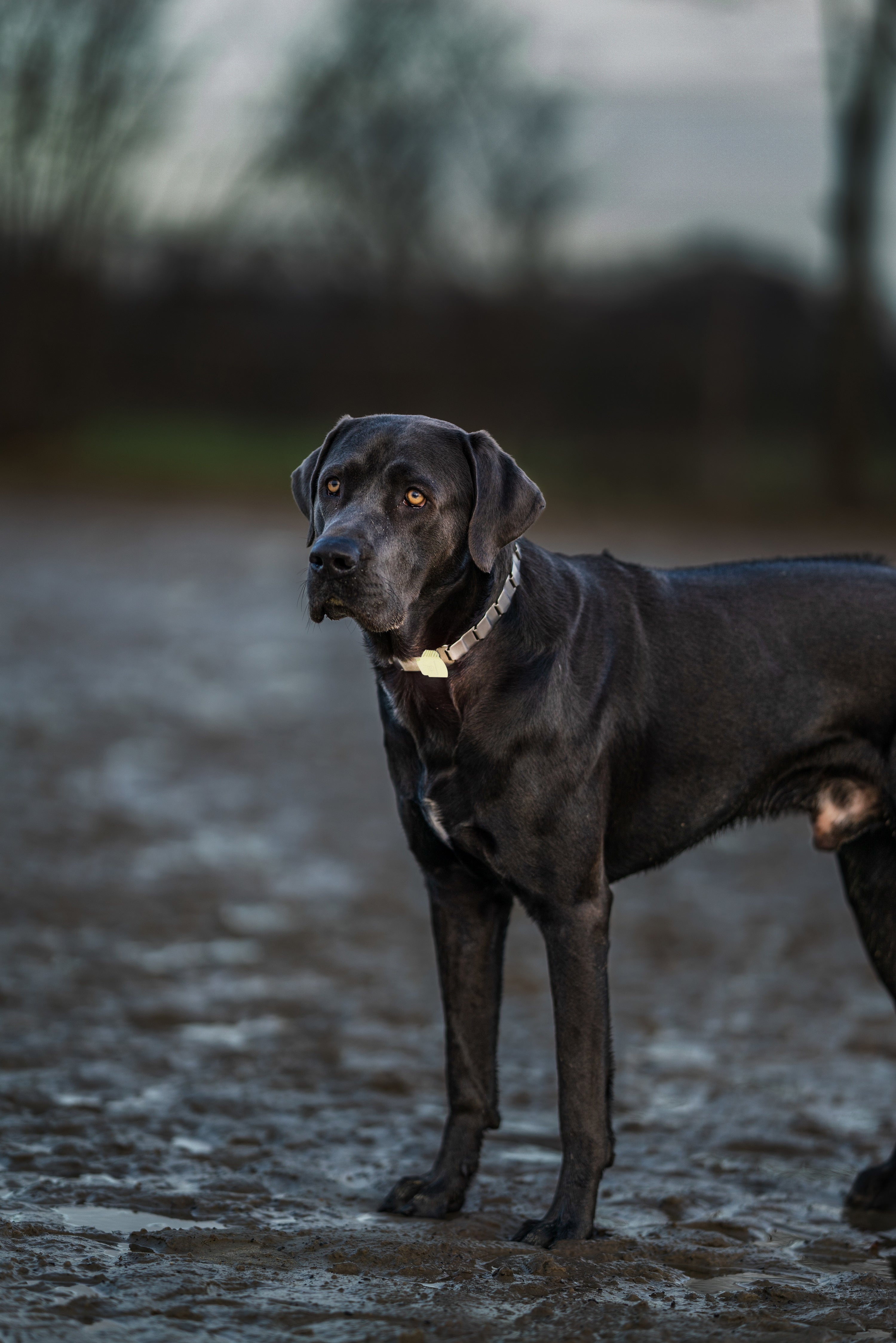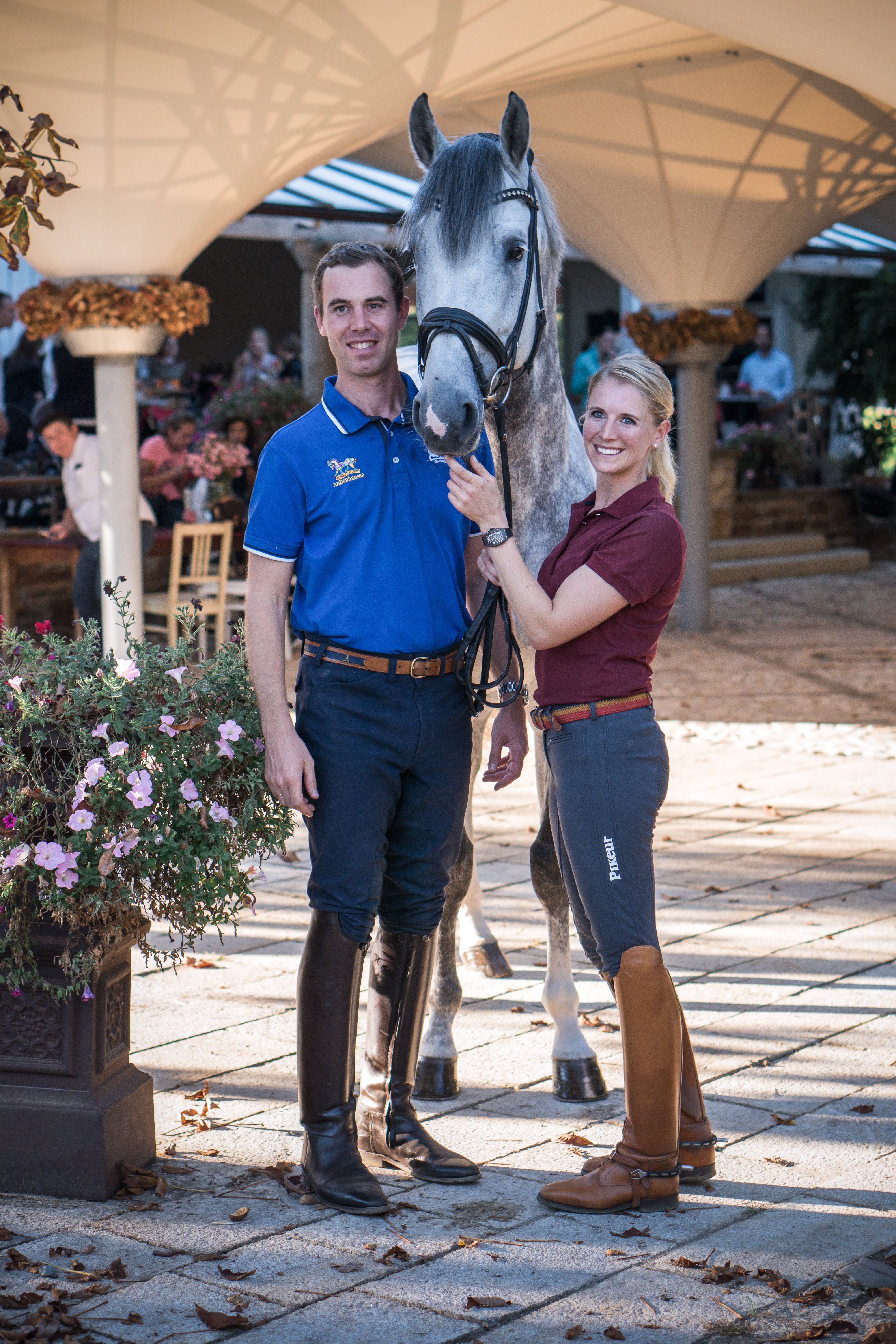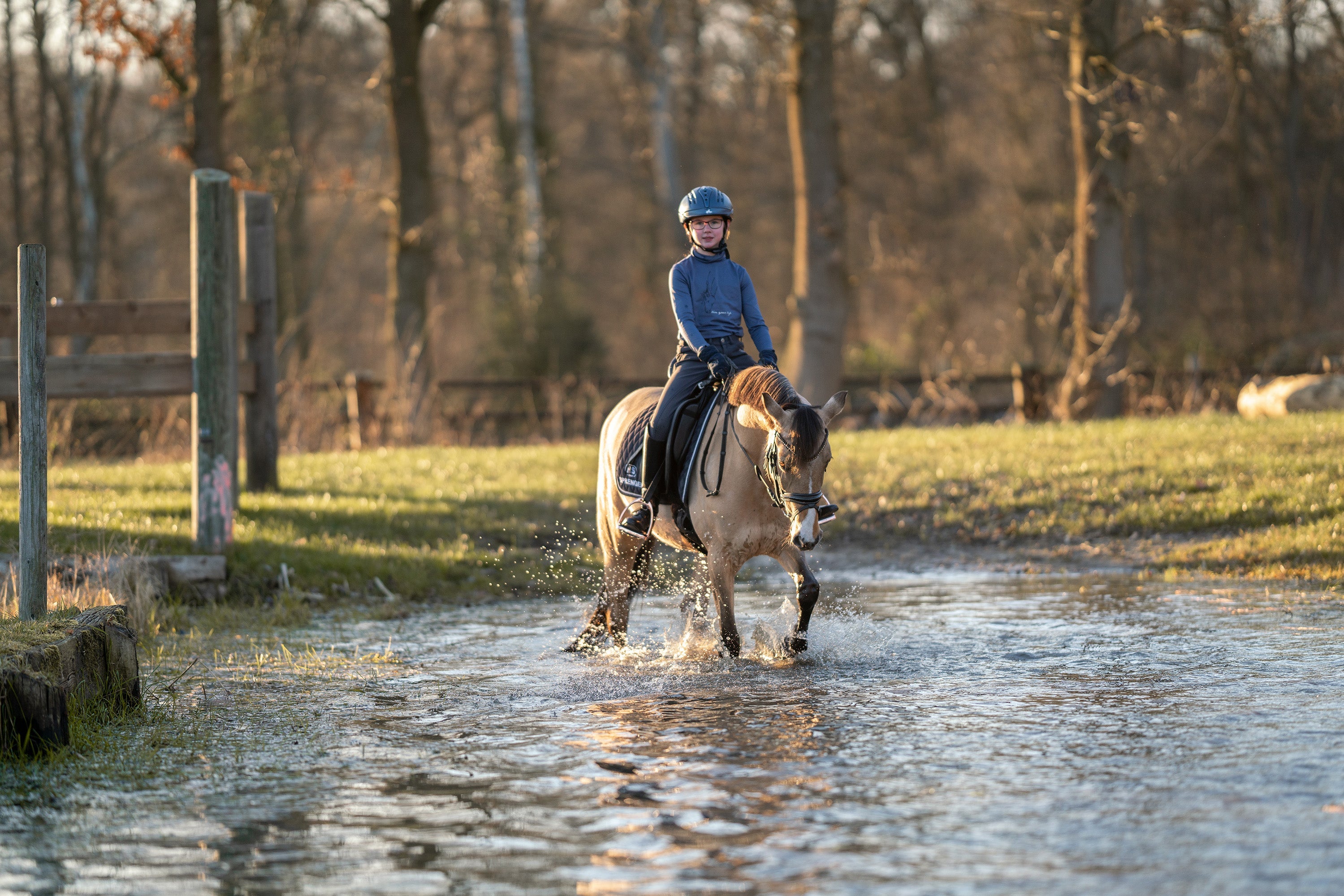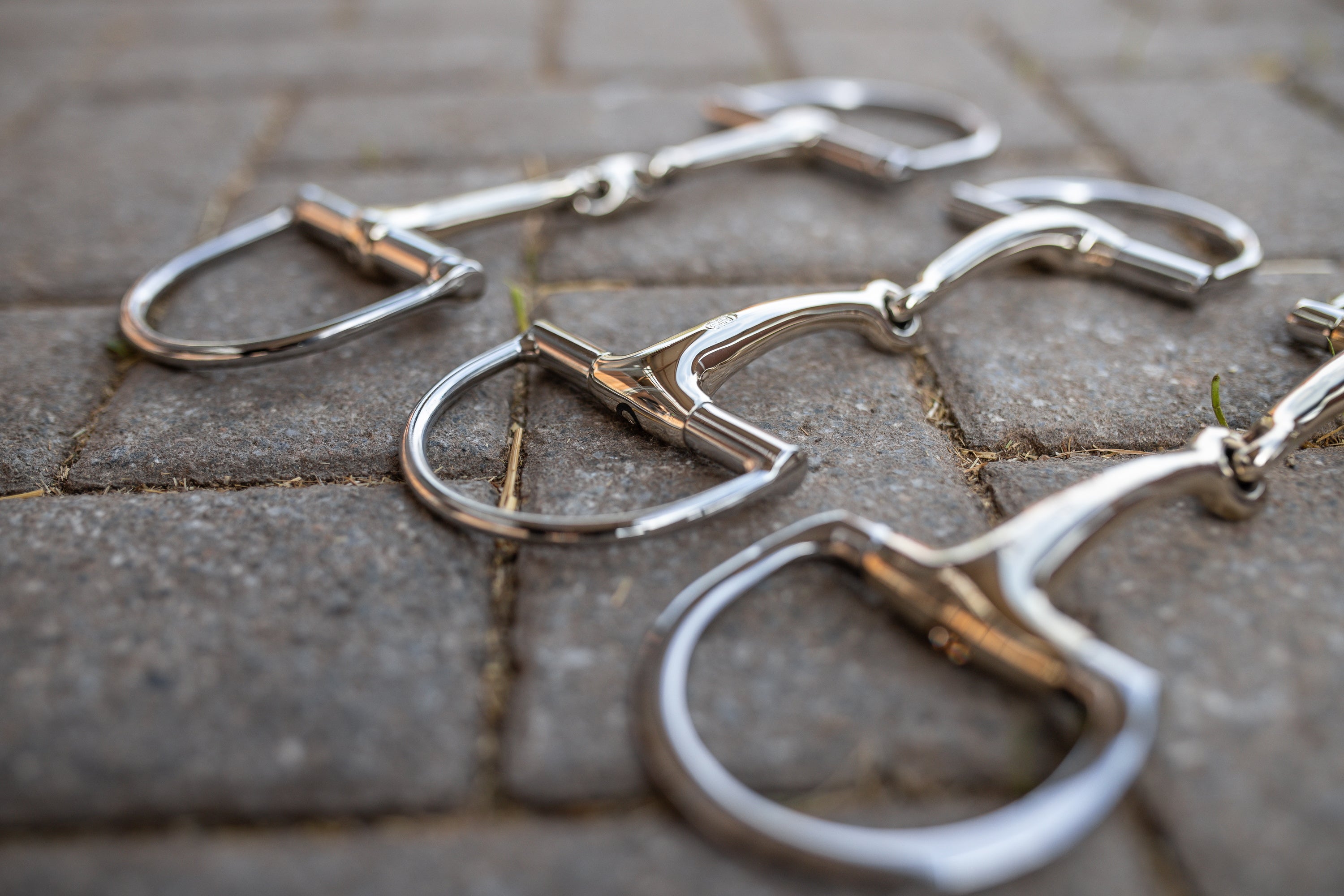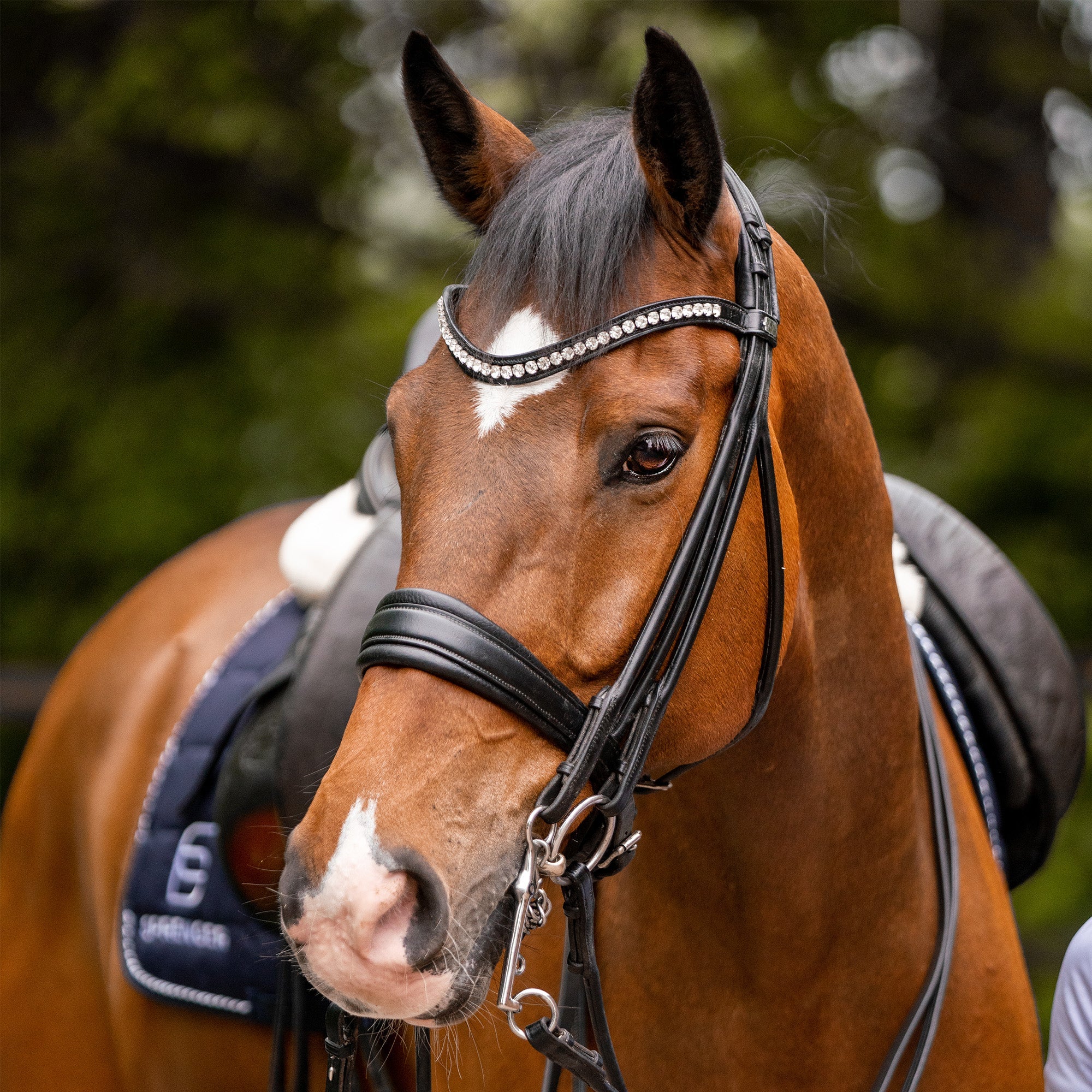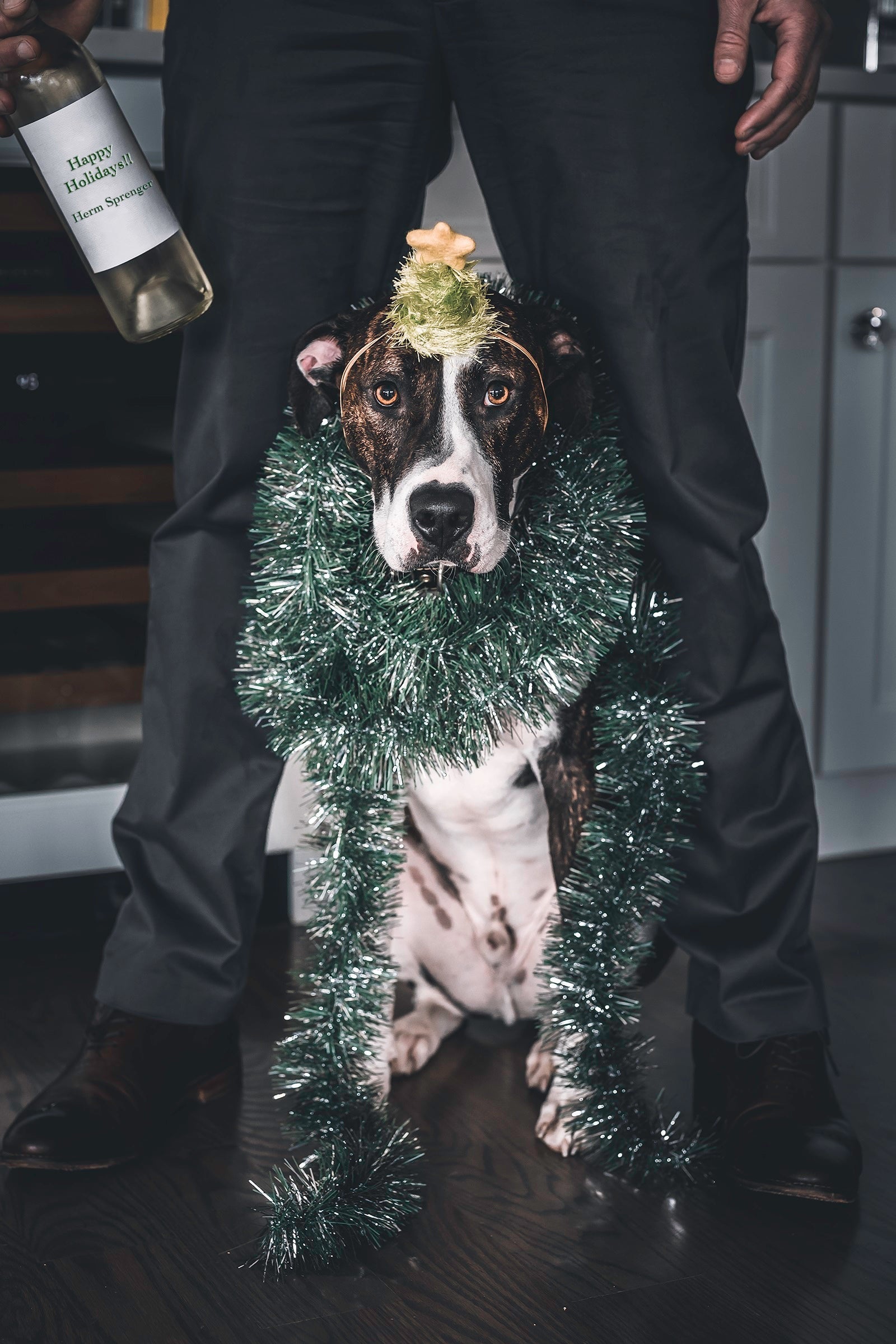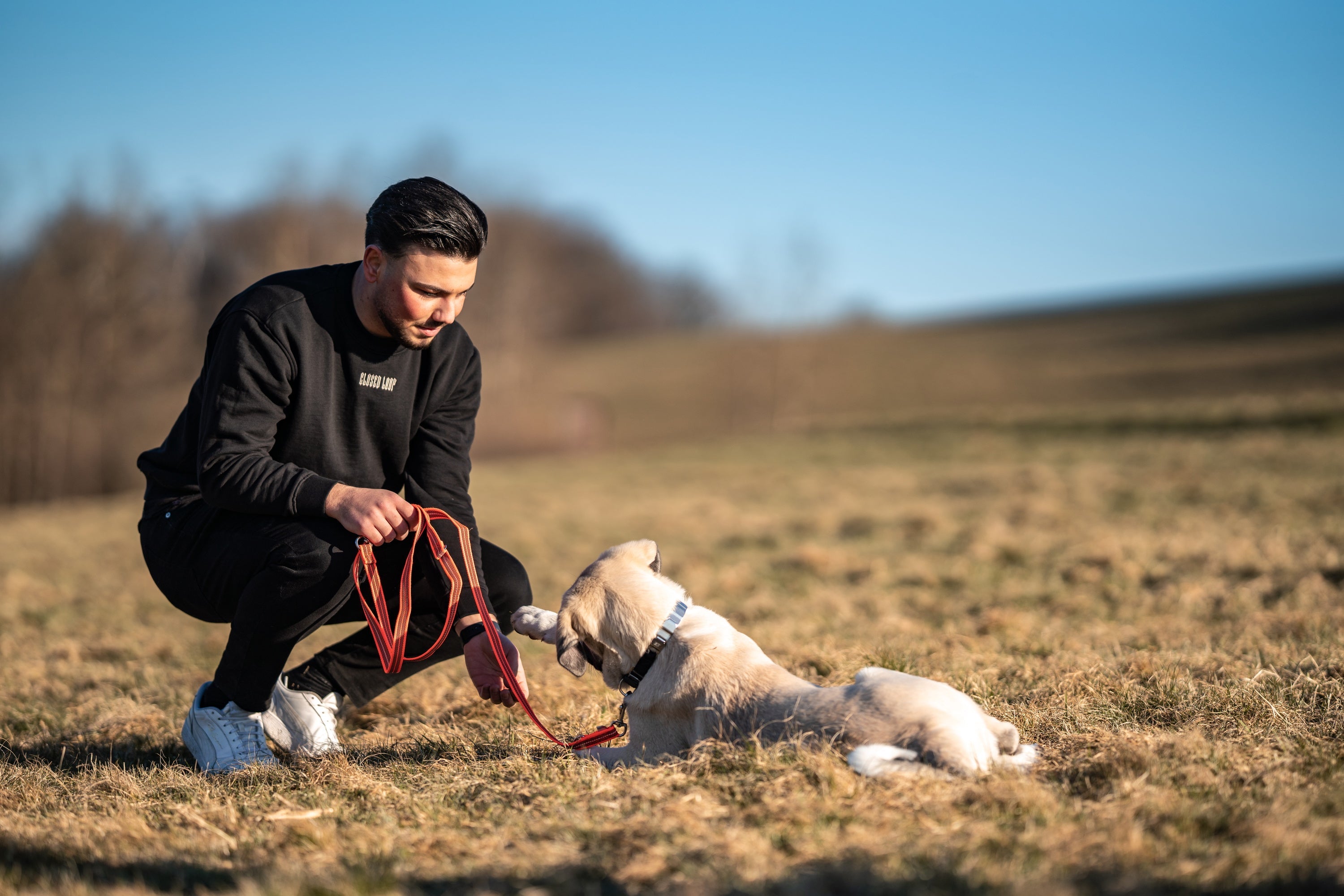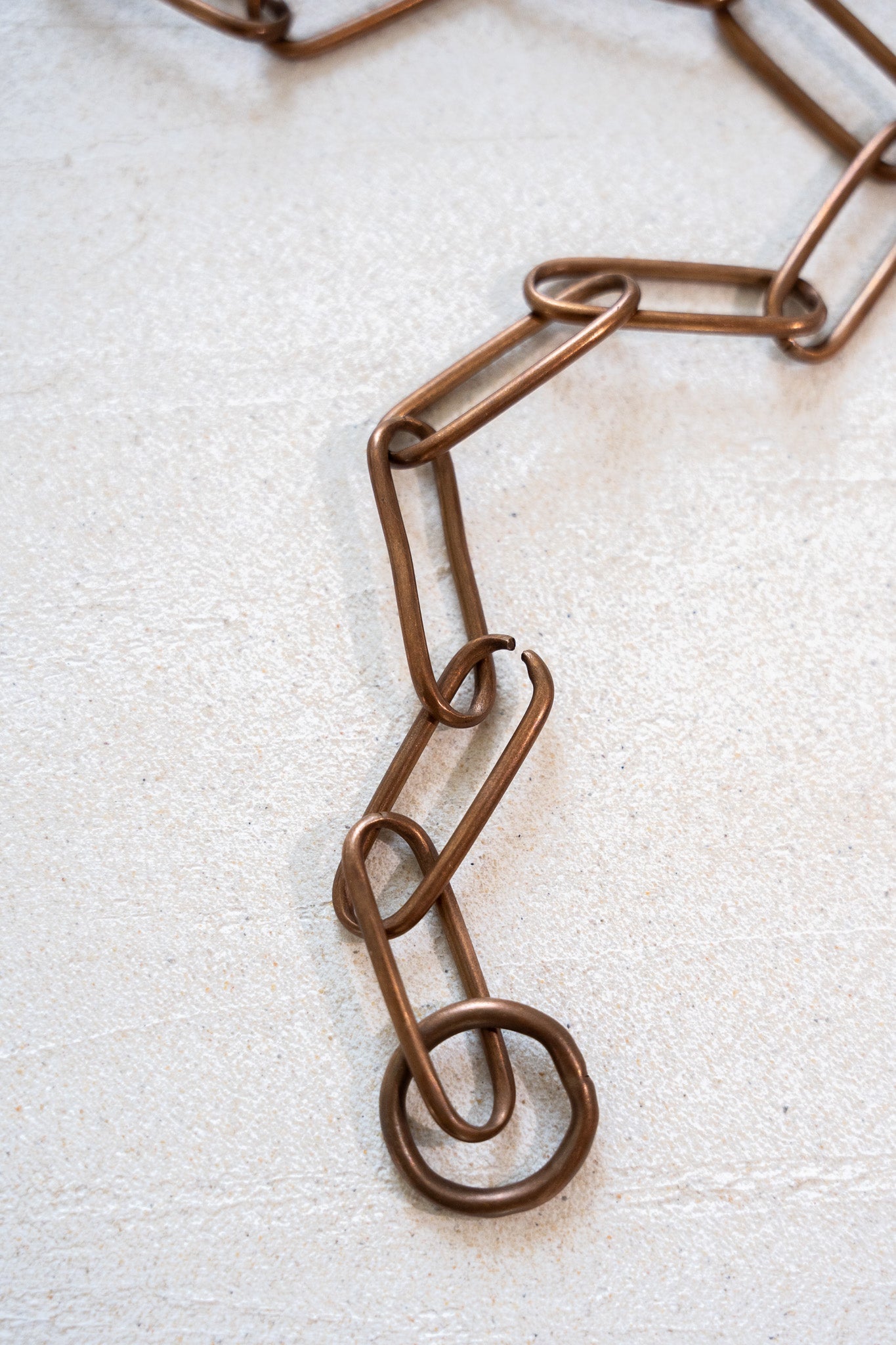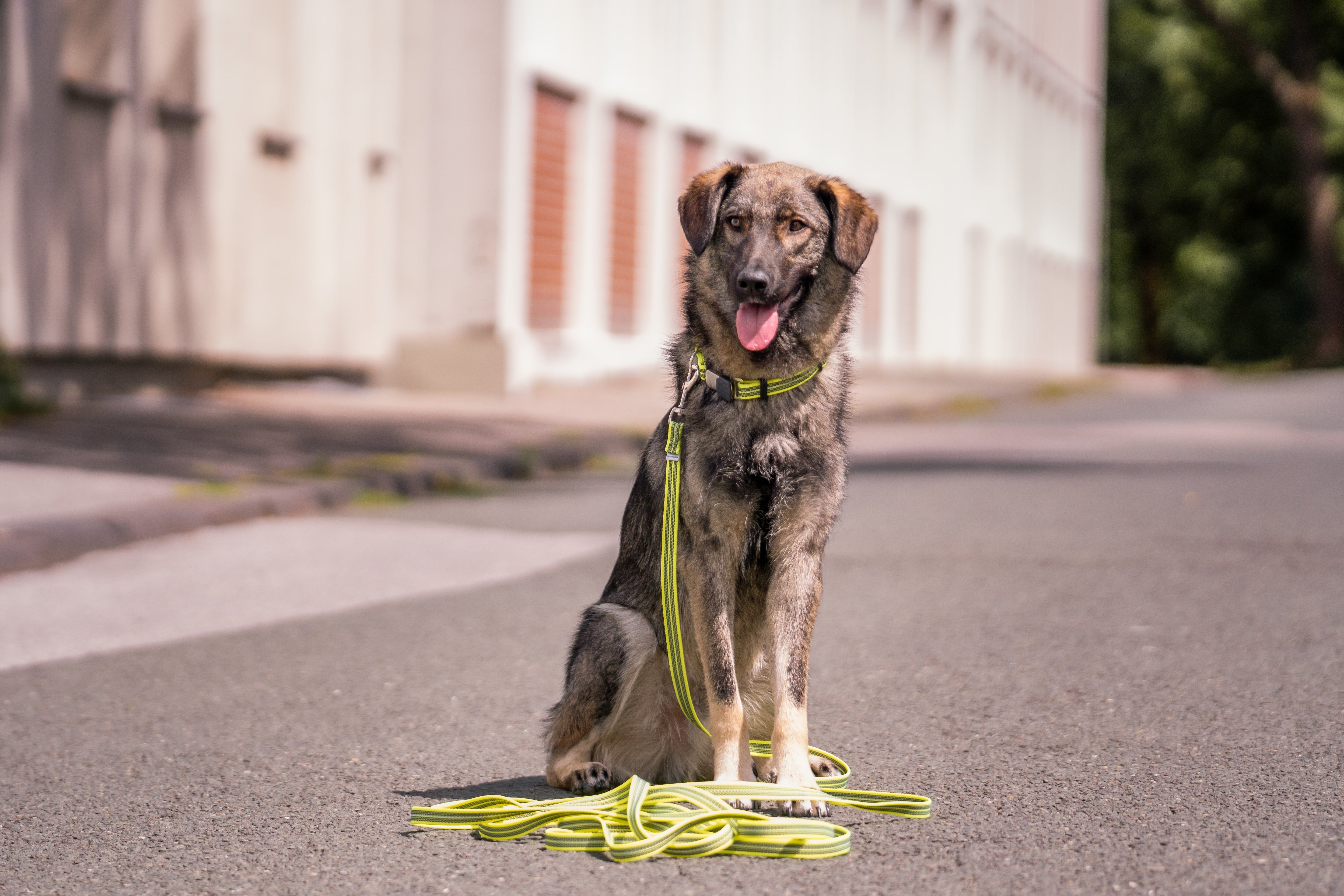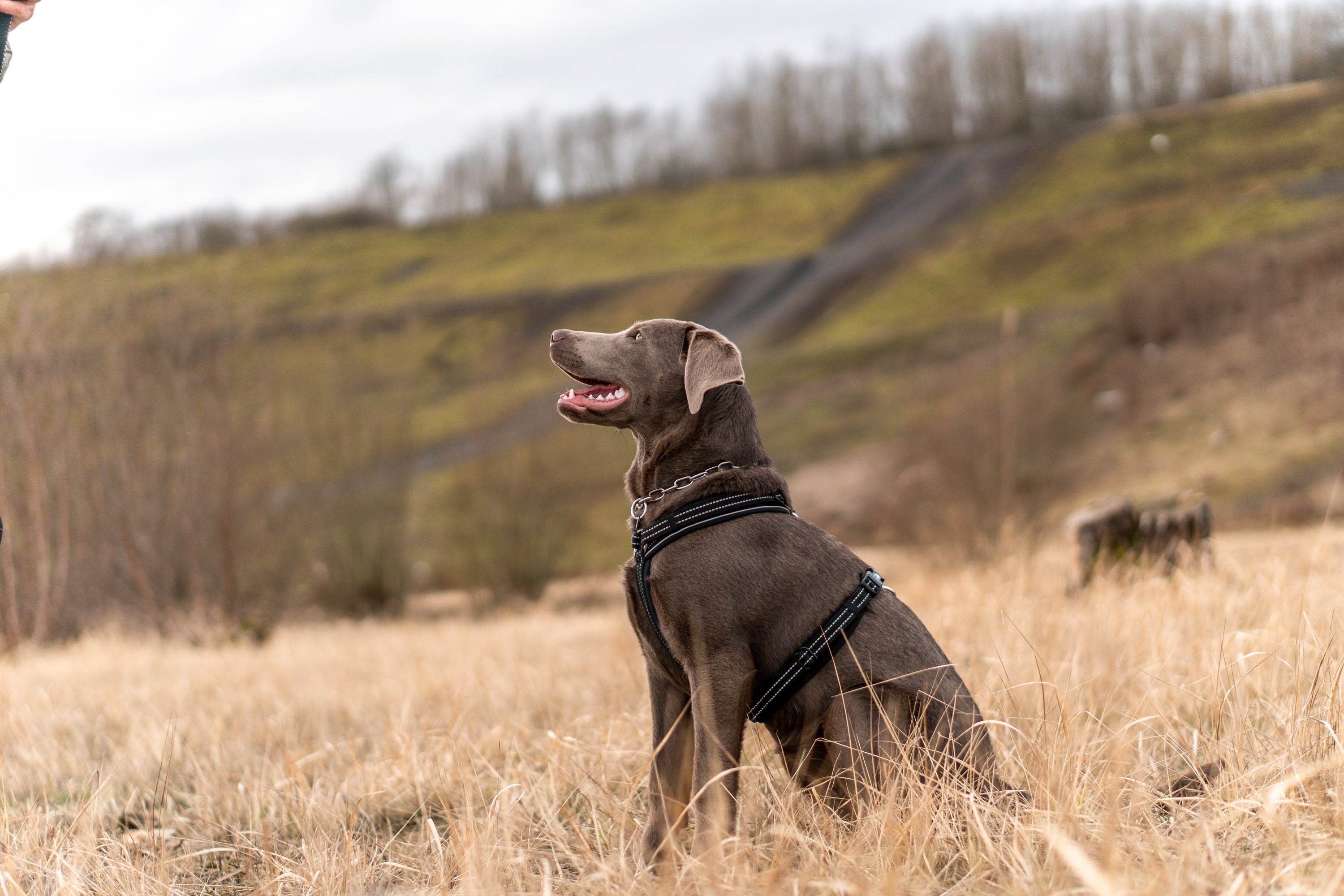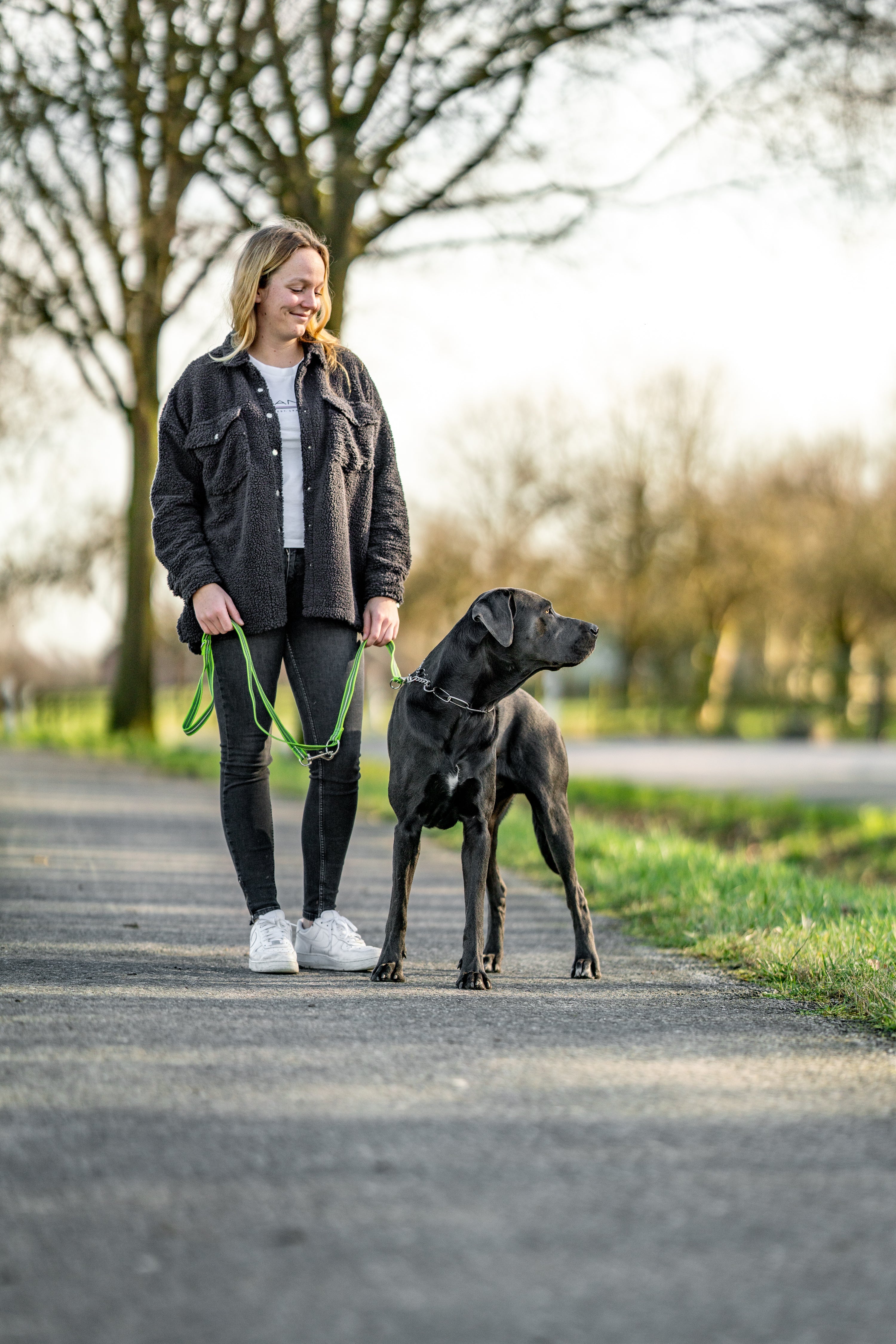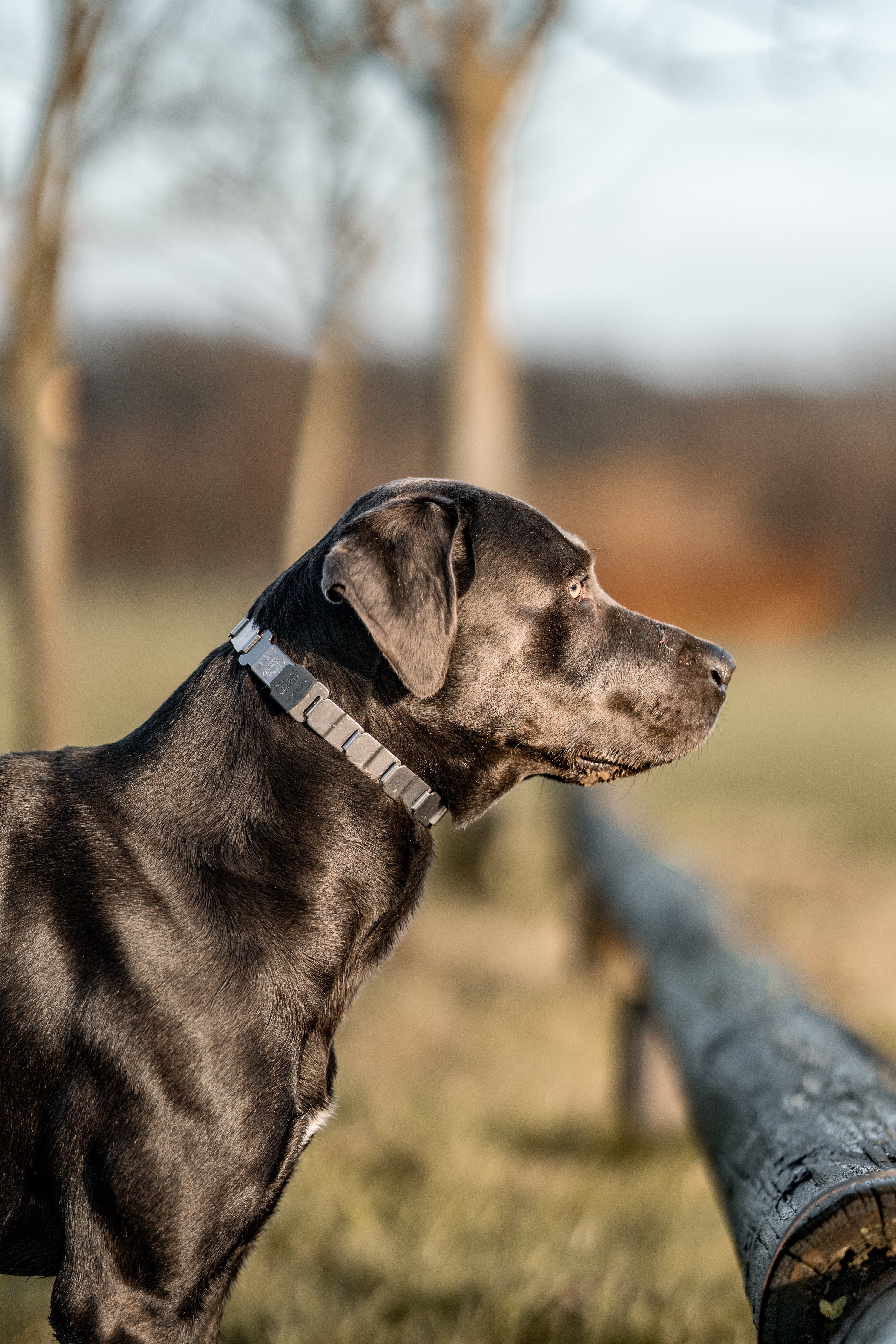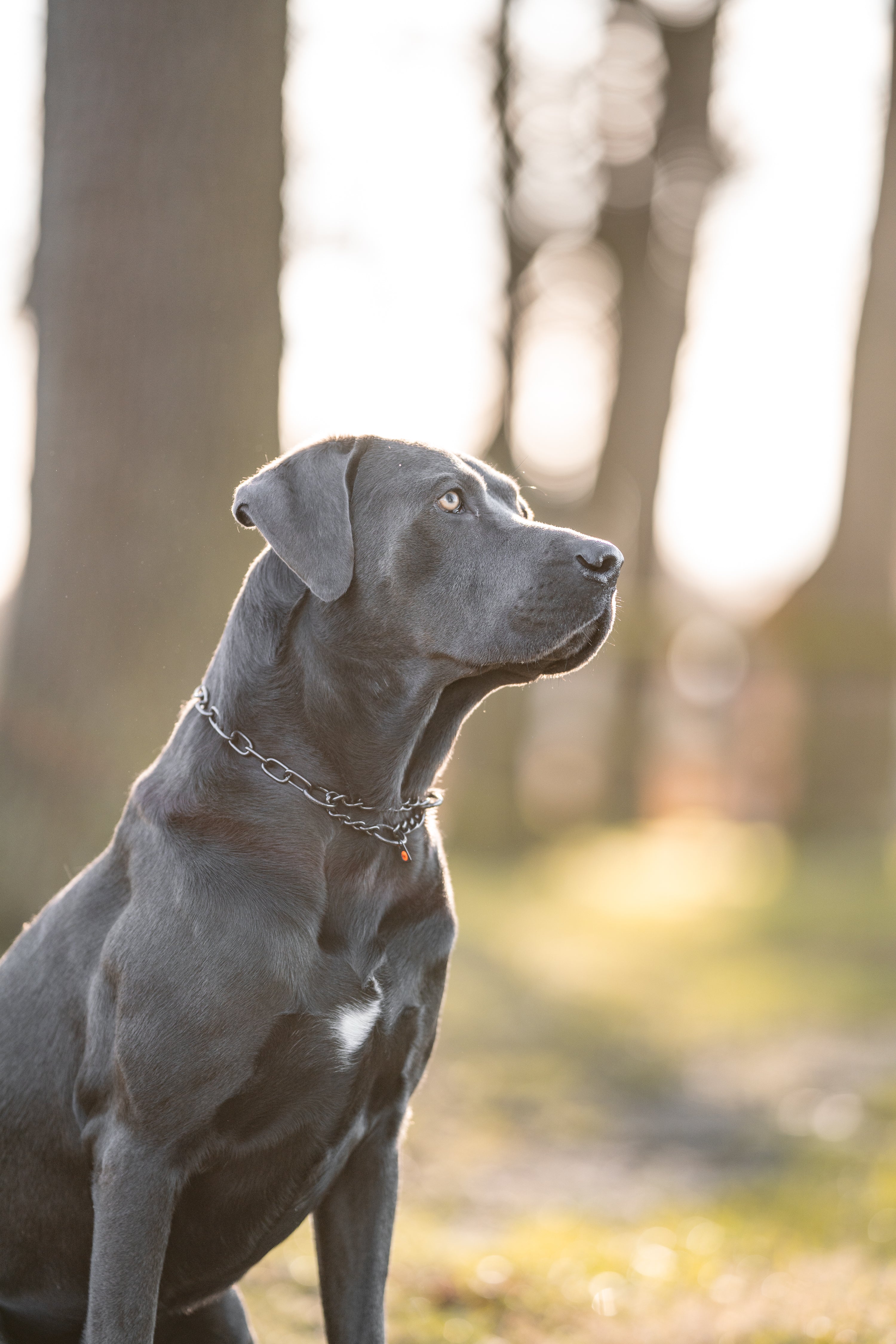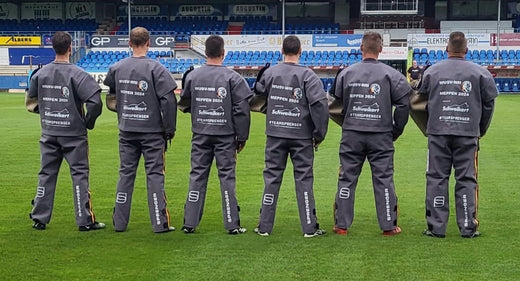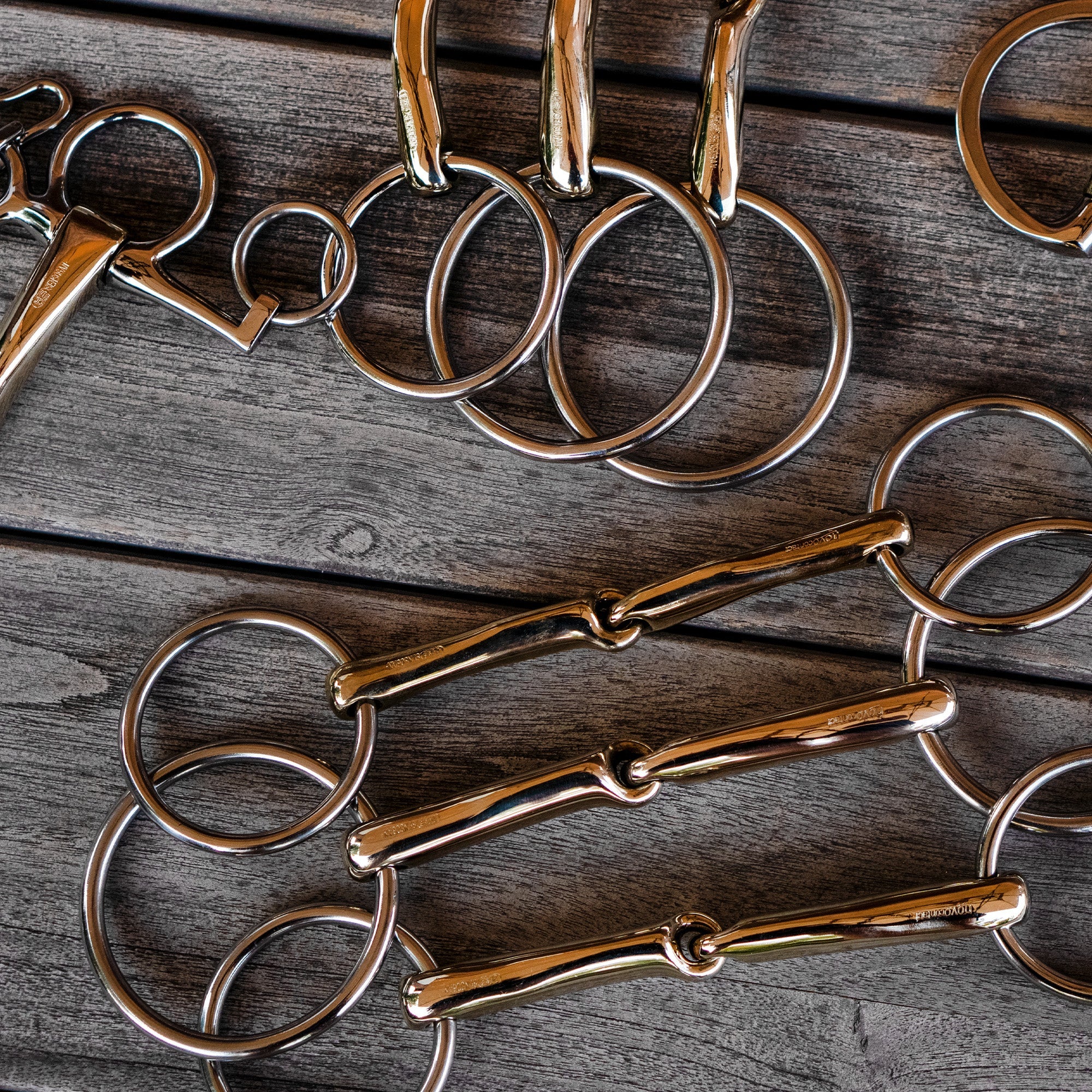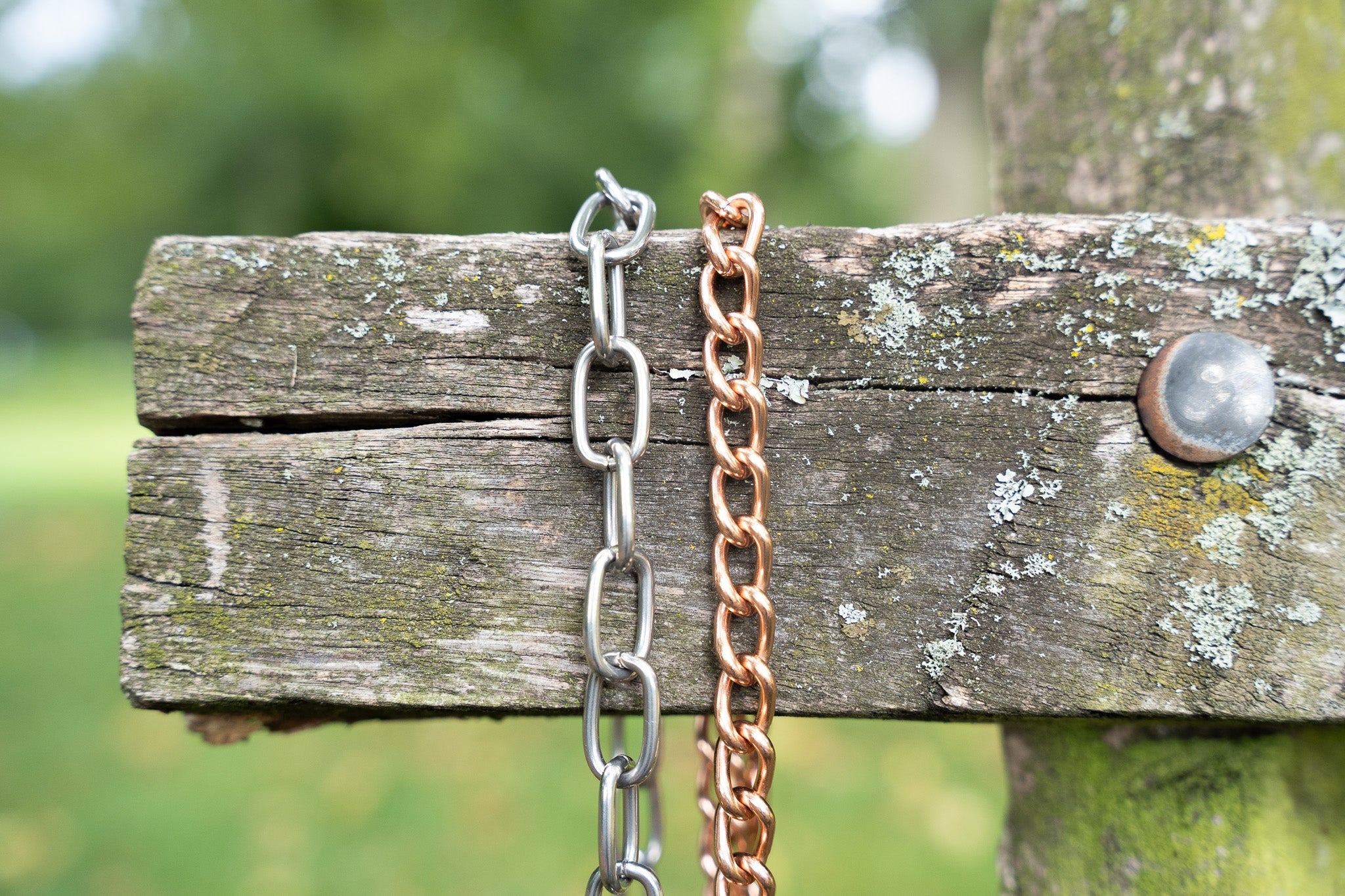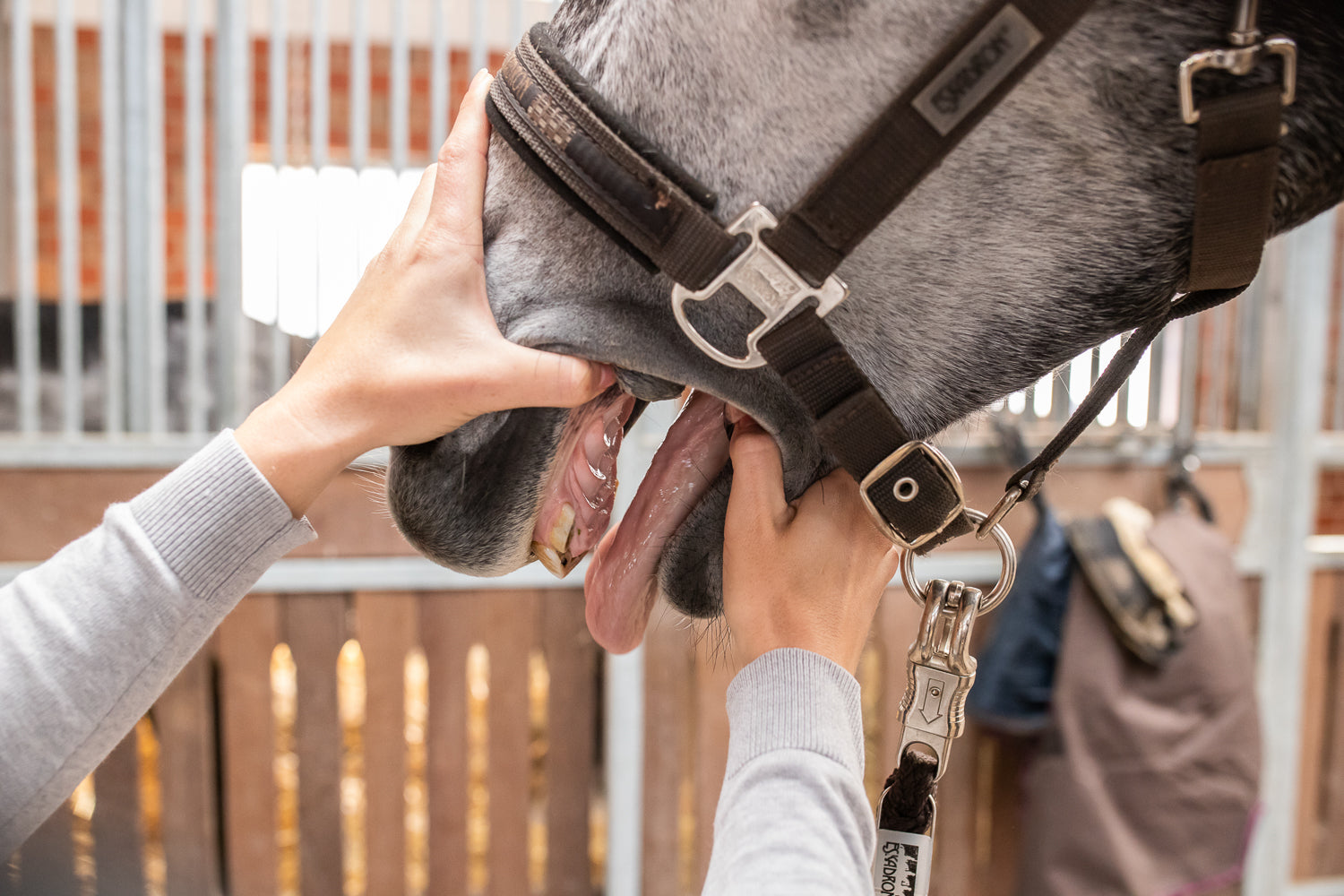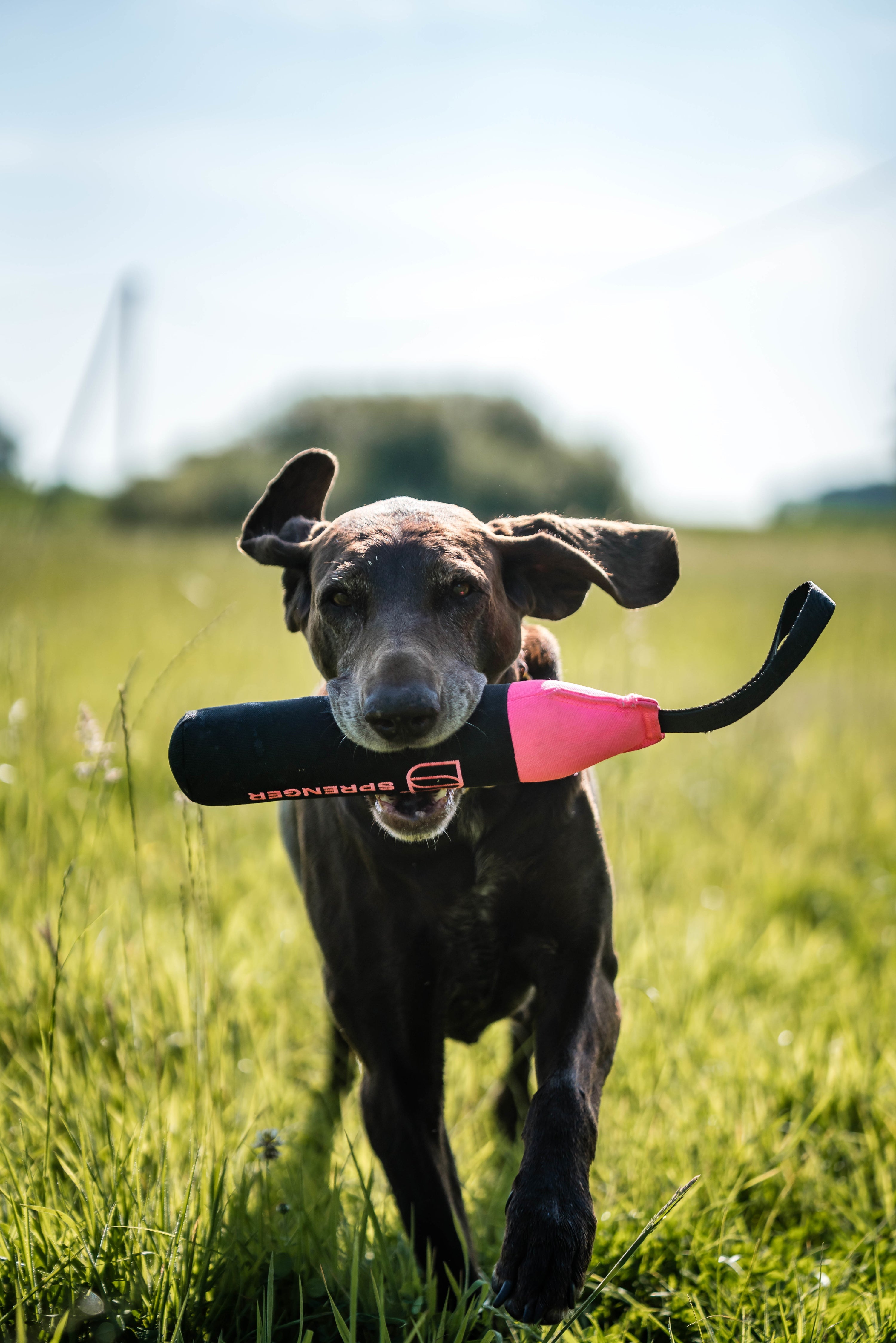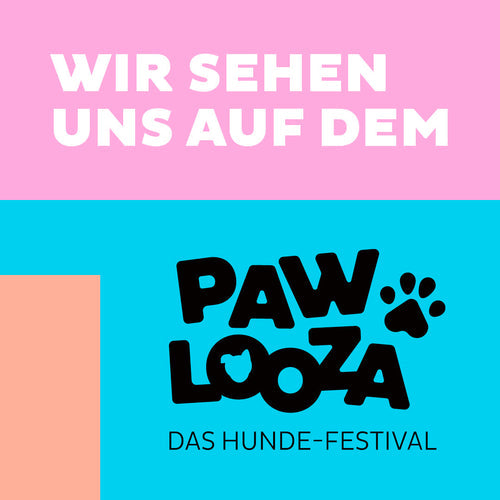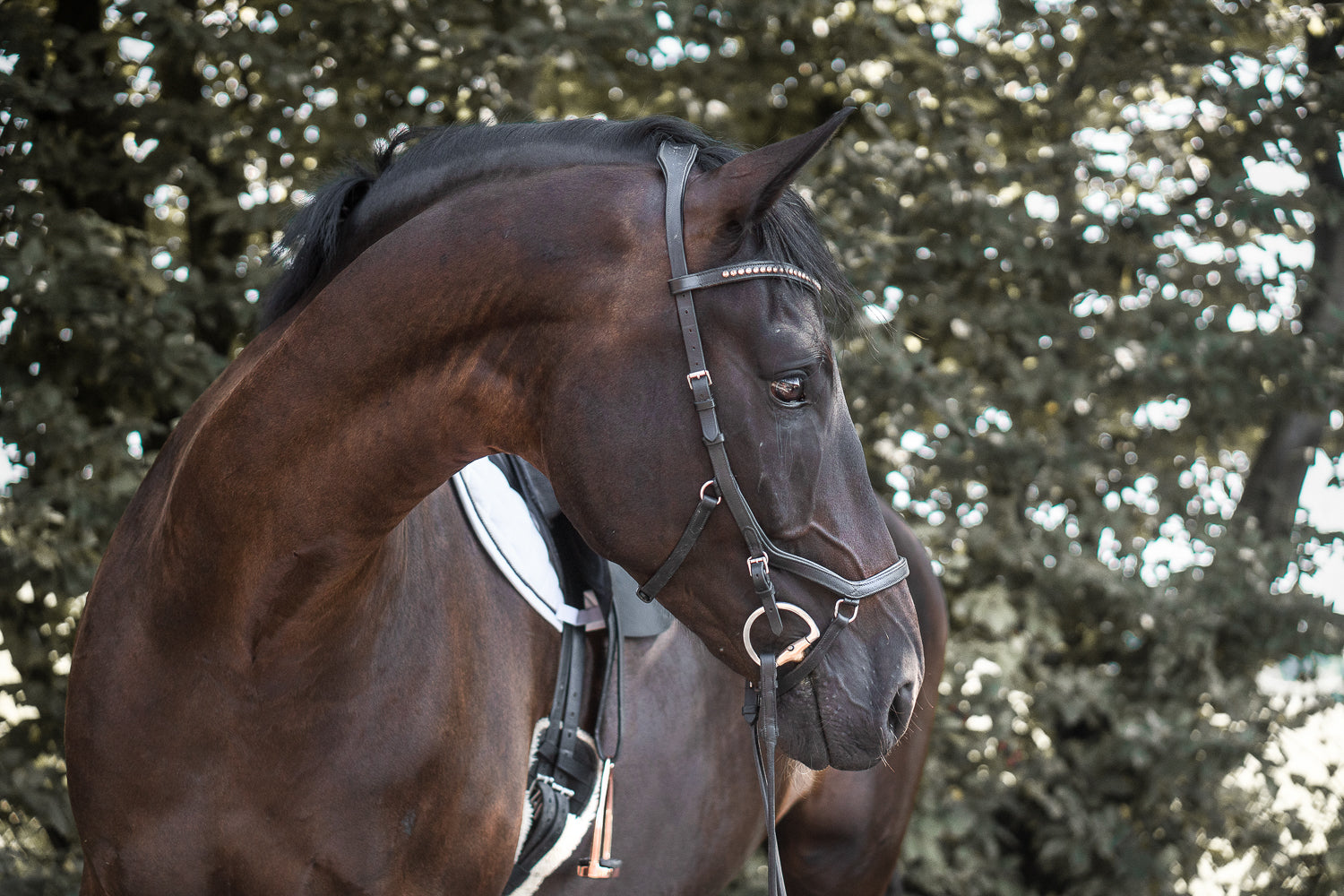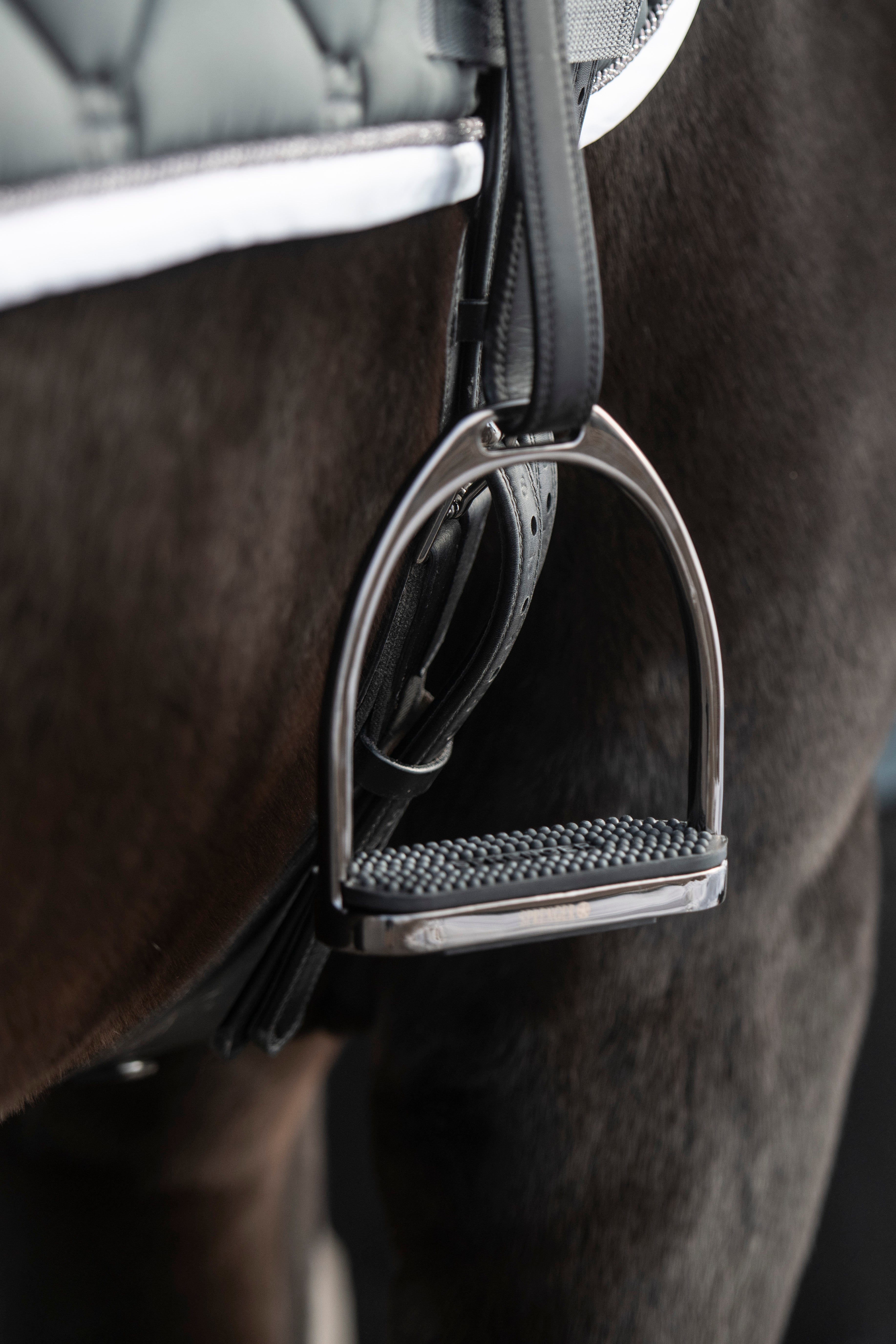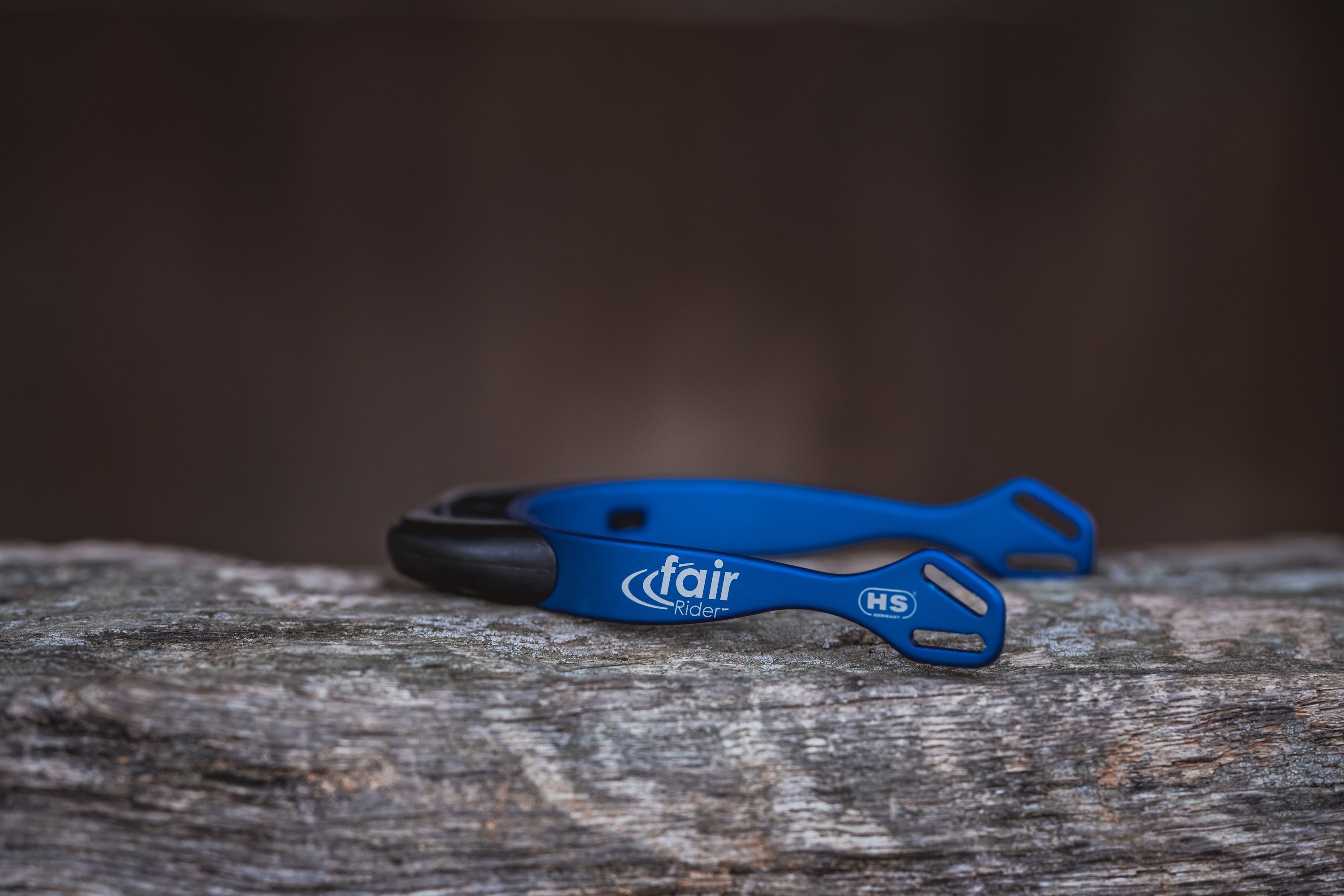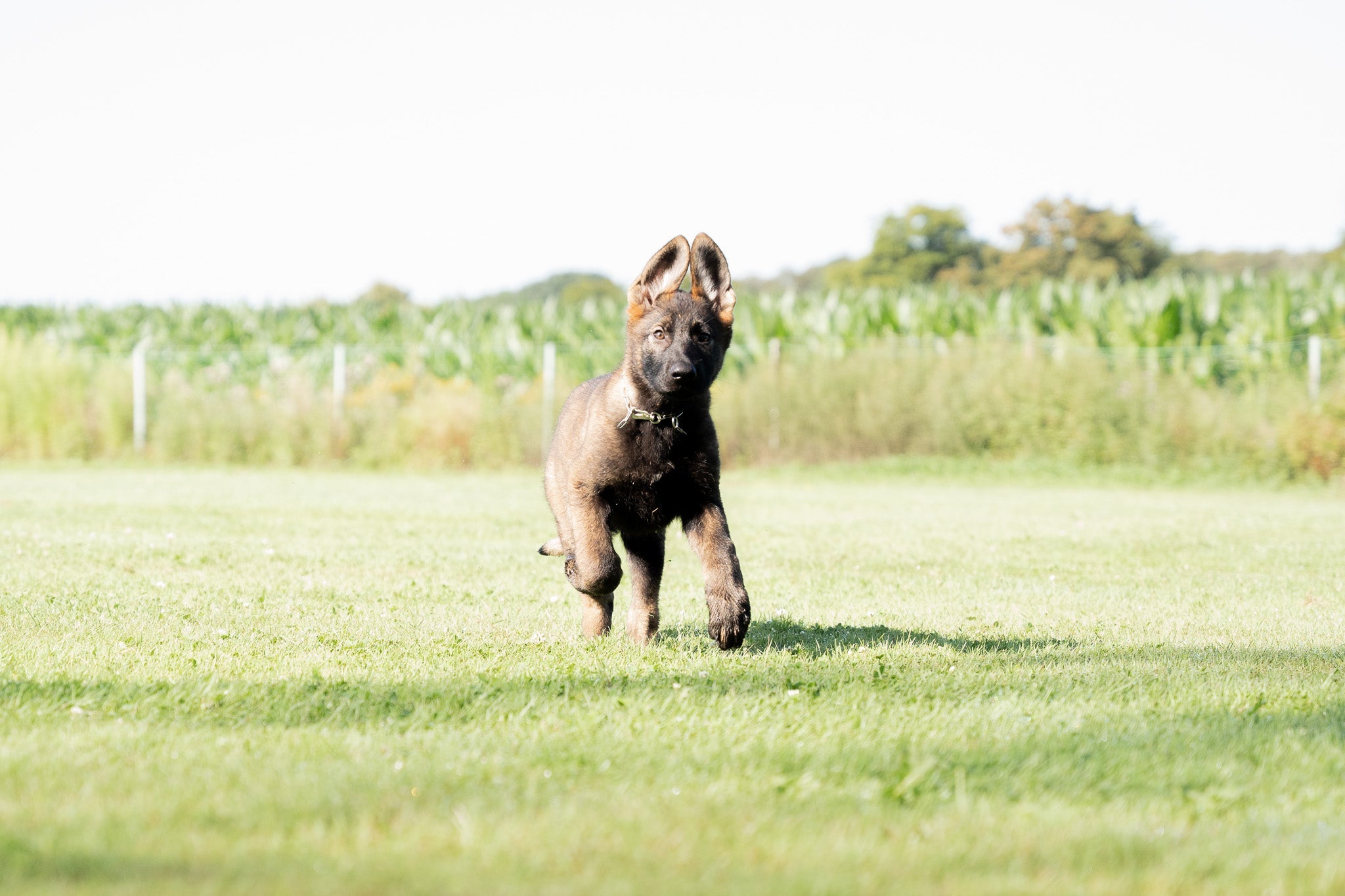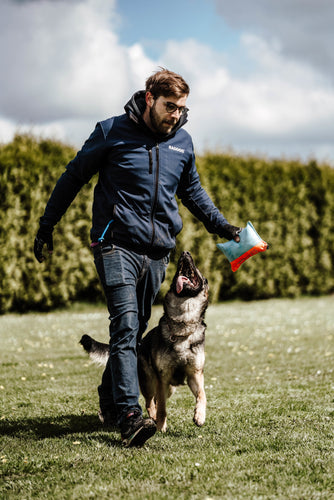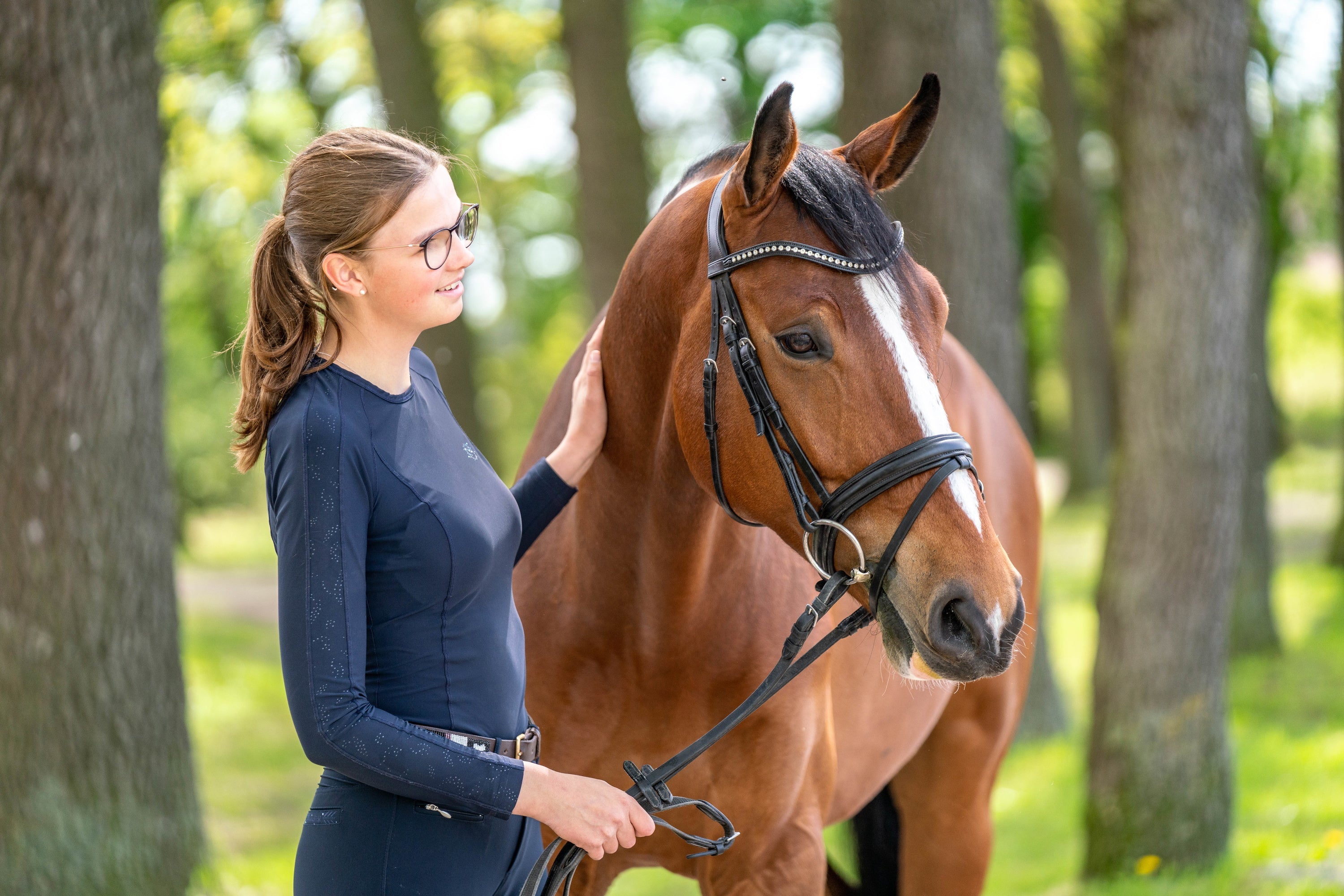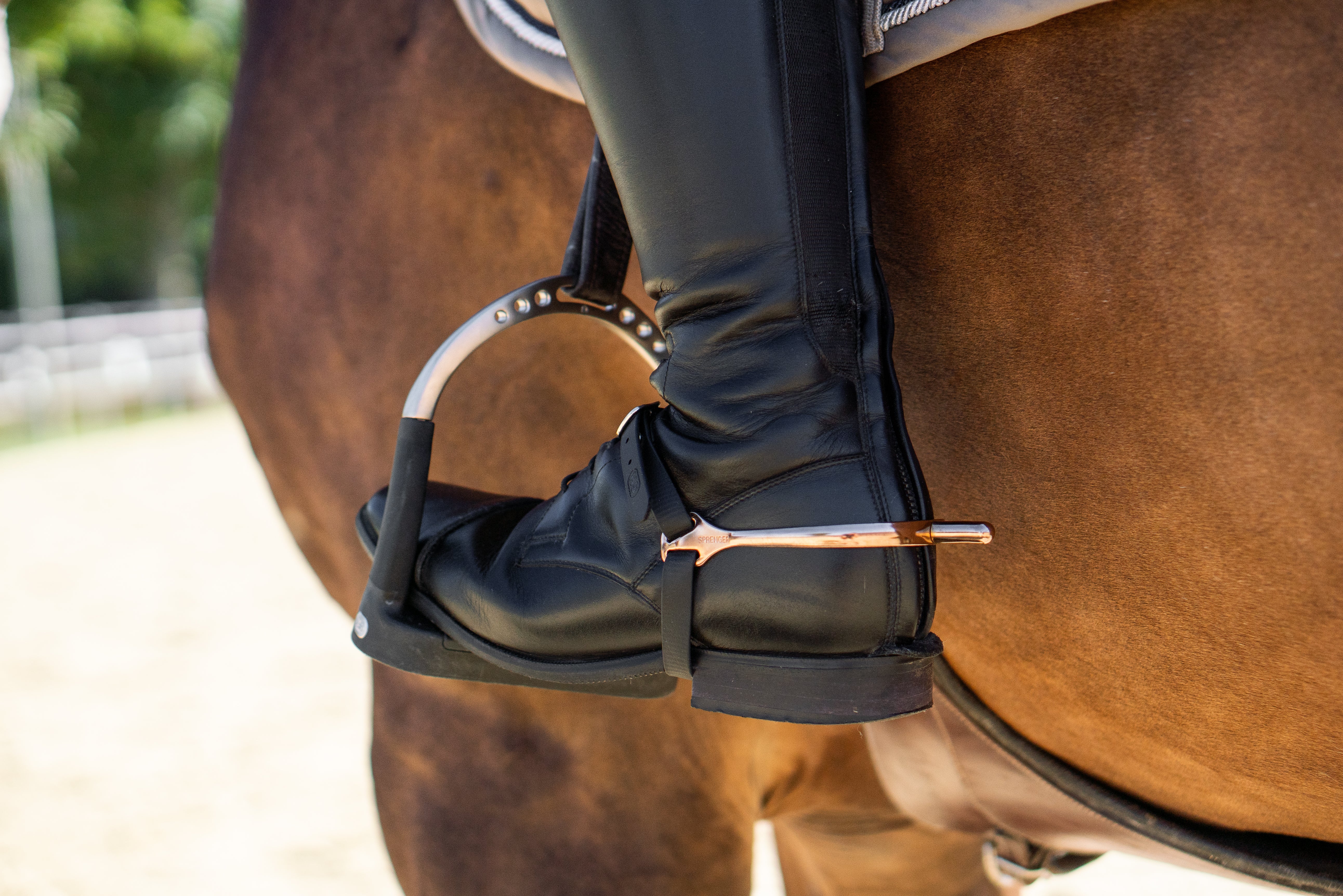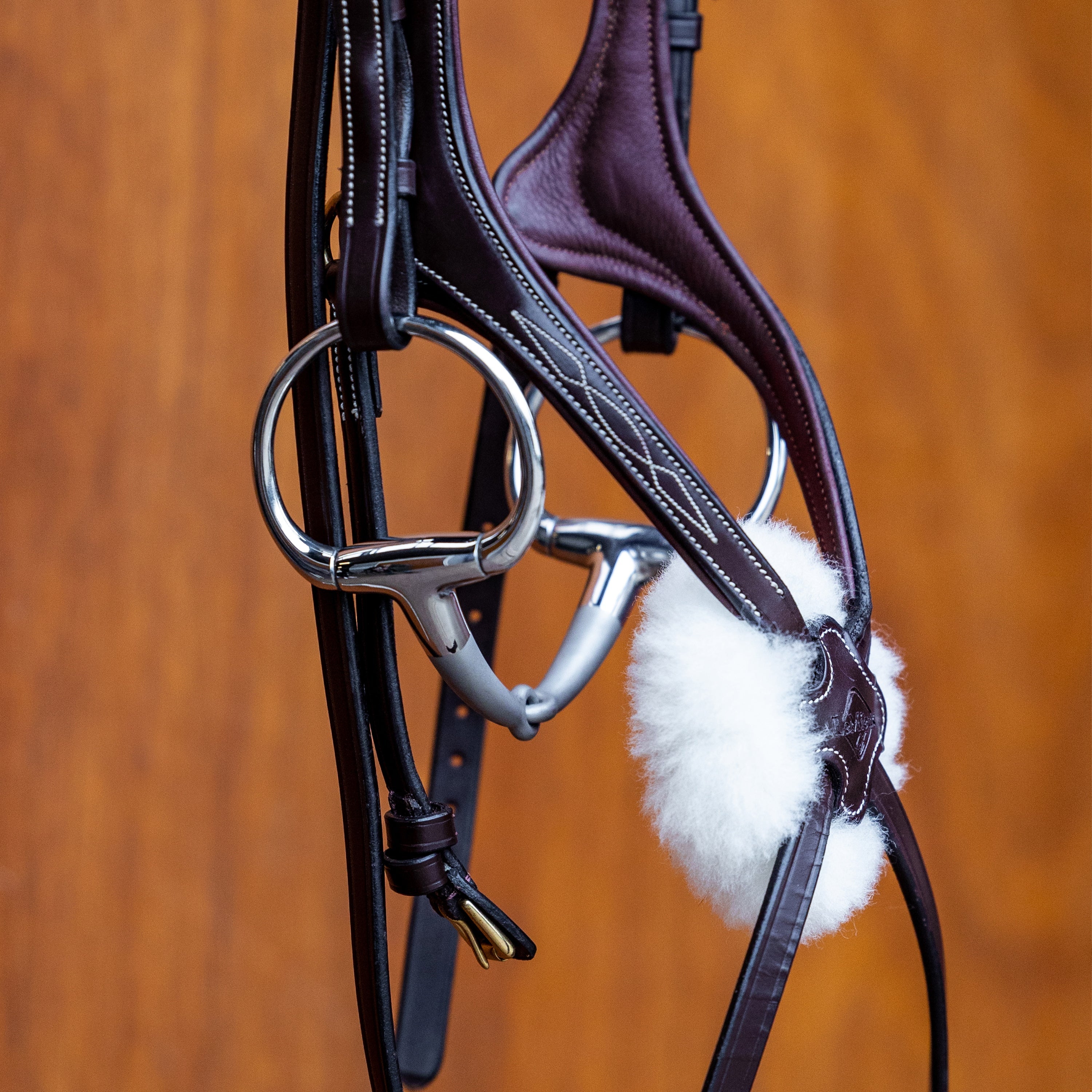Chain collars without a pull stop are also known as chain chokers. By correctly fitting and using these types of chain collars for dogs, they can still be safe and practical for a wide range of dogs and situations.
Our blog post tells you what you need to know about chain collars without a pull stop for dogs and how to use them safely.
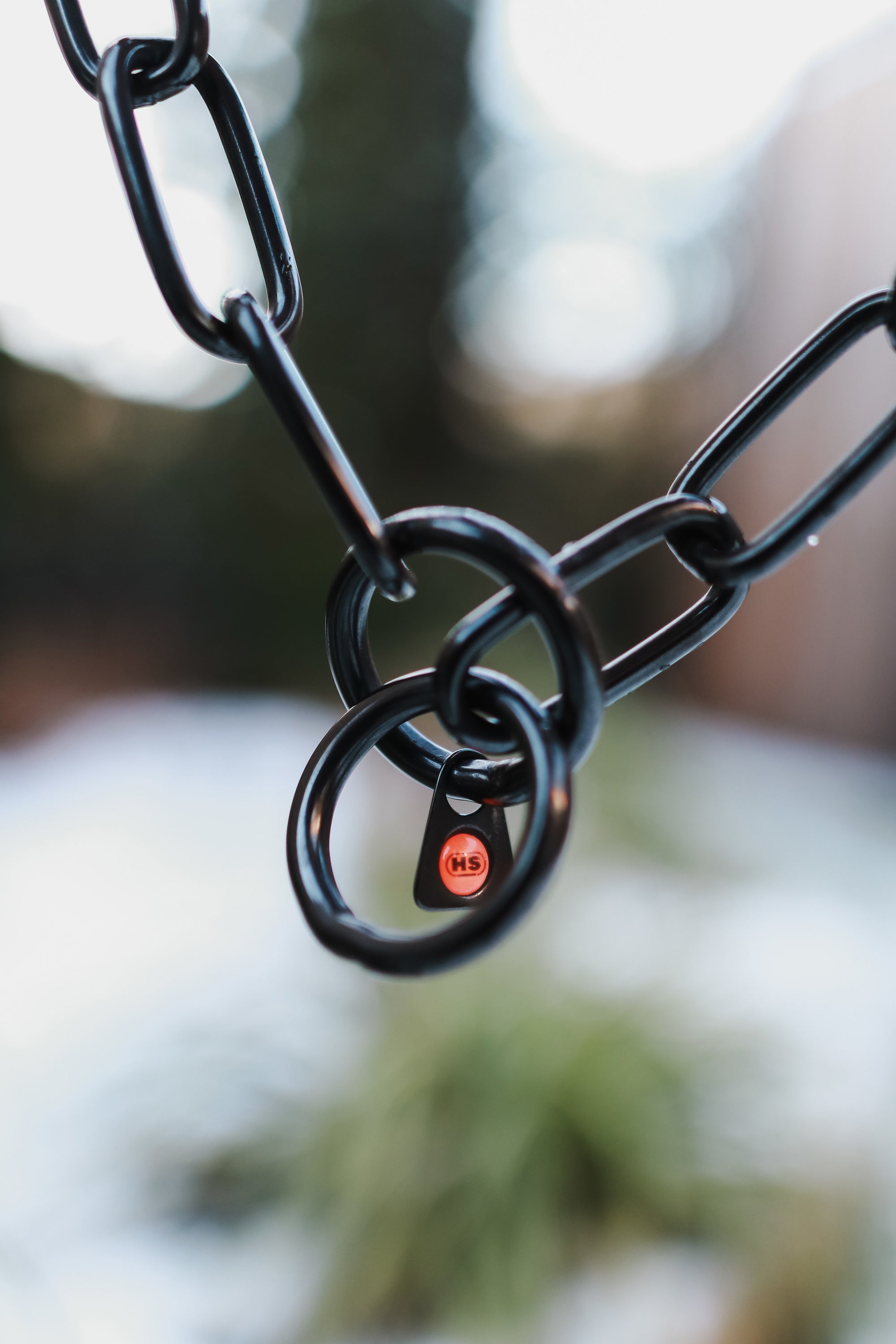
Threading chain collars without a pull stop
Compared to chain collars with hooks or chain collars with an assembly chain, chain collars without a pull stop do not come with a clasp or as a loop that is already closed round, but as a piece of chain with two large rings at both ends. This can lead to confusion for some at first glance. Is my chain collar broken? Has the clasp on my chain been forgotten? Has the dog collar been produced incorrectly?
The answer: No!
To make the chain into a chain collar that can be pulled over your dog's head, you need to thread the links of the chain through one of the rings until both large rings meet, so the chain forms a loop that can be pulled over your dog's head.
We have also recorded the HOW TO instructions for threading a chain collar without a pull stop as a video.
So you can see exactly how to thread your chain collar correctly!
You can find more videos about our products on our YouTube channel.
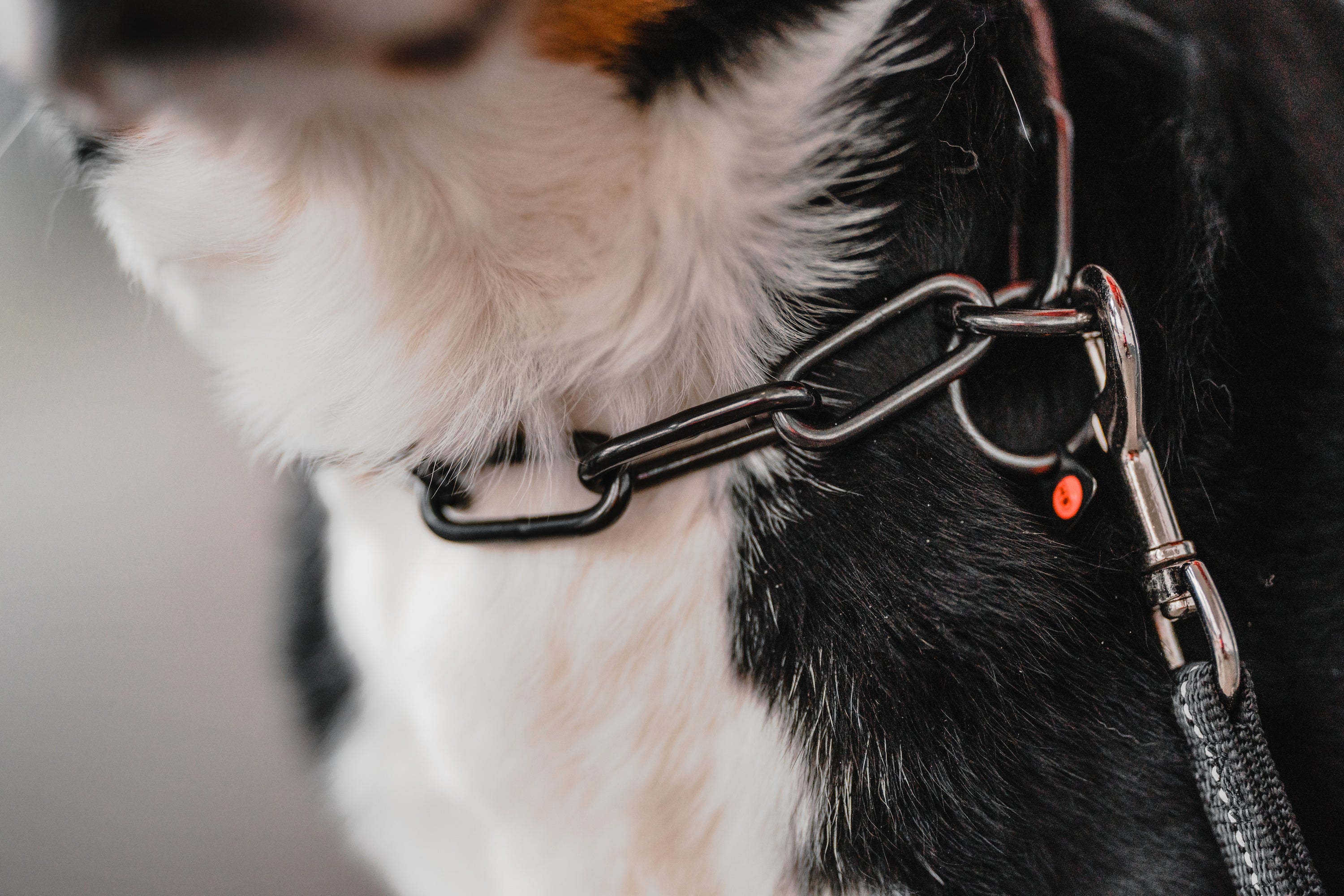
Leashing on chain collars without a pull stop
Originally, chain collars without a pull stop were used as actual choke collars to help with the training and obedience of dogs. Today, this type of application is outdated and no longer compliant with animal welfare regulations in Germany. Nevertheless, this type of chain still has its justification and advantages, but it is important to correctly attach the leash.
There are three different ways to safely attach a leash to a chain collar without a pull stop:
1. leashing on the "dead" ring
You have probably already noticed that your chain only tightens when you pull on one of the large rings. If you pull on the ring through which you have threaded your chain instead, it will not tighten when pulled - this is the so-called dead ring. Leashing on the dead ring therefore means that your chain cannot tighten and choke. Instead, the chain acts like a normal collar with a fixed size.
Please note: As the chain must be long enough to be pulled over your dog's head, attaching it to the dead ring also means that your dog can slip out of the chain more easily if he tries to wriggle out of the collar. If you are unsure about this, it is better to choose a chain collar with a hook to adjust the size.
2. leashing on both rings (not threaded)
Another safe way to attach the leash is to attach it through both rings. This can be done in two ways:
One possibility is that you don't thread your chain at all, but simply put it around your dog's neck and close or connect the two ends of the chain with the carabiner of your leash. The advantage here: When you take your dog off the lead, the chain is also taken off directly, so your dog cannot get caught or injure other dogs while playing.
Please note: If you decide to use your chain in this way, you should take this into account when choosing the chain length. Our recommendations for chain lengths assume that the chain is shortened by a few centimeters when threaded and that it must be long enough to be pulled over the dog's head. If this is not the case, you can choose the length for such a chain in the same way as for a chain with a hook.
3. leashing on both rings (threaded)
The second option for attaching a leash to both rings is to do this with the threaded chain. In this case the dead ring also stops the pull on the active ring. The advantage of this method compared to simply attaching the leash to the dead ring is that you don't have to check whether you have caught the right ring when attaching the leash but are quickly and easily on the safe side.
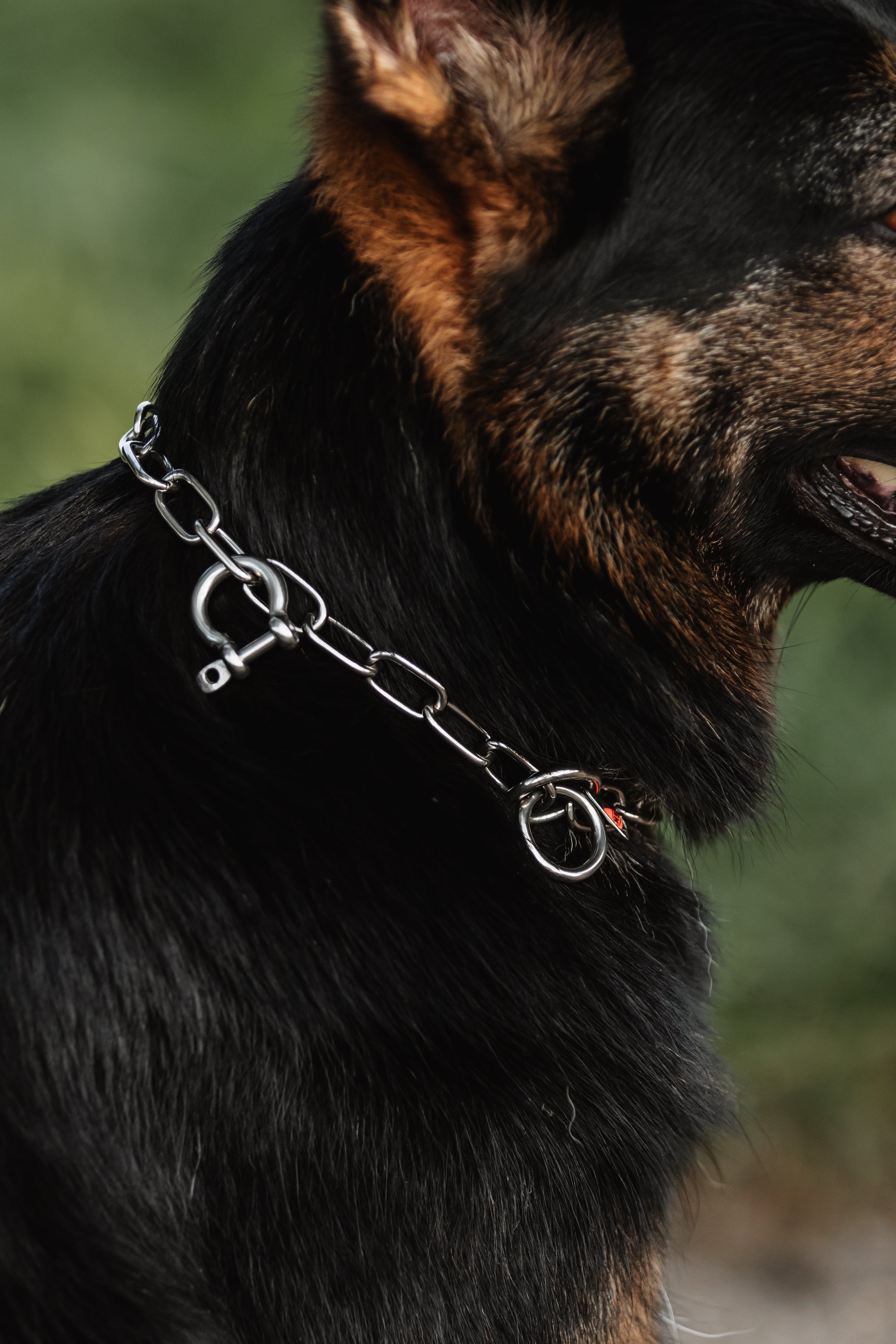
Retrofitting a chain collar with a pull stop
Our chains without a pull stop have one advantage over chains with an assembly chain and fixed pull stop: you can retrofit them with an adjustable pull stop at any time.
By attaching a split ring or shackle a few centimetres below the active ring after you have threaded the chain, you can create a pull stop that suits your needs exactly. If the lead is now attached to the active ring, the chain will tighten until the split ring or shackle hits the dead ring and stops the pull. This has the advantage that you can adjust the pull stop so that it fits your dog's build exactly. With chains with an assembly chain and a fixed pull stop, on the other hand, you are always dependent on the chain length and length of the assembly chain fitting your dog's head and neck circumference, so that the chain can be pulled over the head when loose and is tight enough when pulled so that your dog cannot wriggle out, but is also not being choked.
Important: If you retrofit the adjustable pull stop, make absolutely sure that it is adjusted so that the chain cannot become tighter than the circumference of your dog's neck.
If you are unsure which chain model or size is the right one, please contact us via the support option here in the store or on social media!

Are chains without a pull stop banned?
The same rules and laws apply to chains as to all other dog collars. The use of collars without a stop and pull collars without a pull stop is prohibited in Germany if the leash is attached in such a way that the chain can tighten endlessly and choke the dog.
We recommend that chain collars without a pull stop that are used by leashing on the dead ring are always completely removed when the dog is off leash so that the dog cannot strangle itself by getting caught on branches or during play.
The use of chain collars with a pull stop is animal welfare compliant in accordance with German regulations, as they do not strangle the dog when used.
SPRENGER chain collars without a pull stop
PART OF YOUR PASSION.

